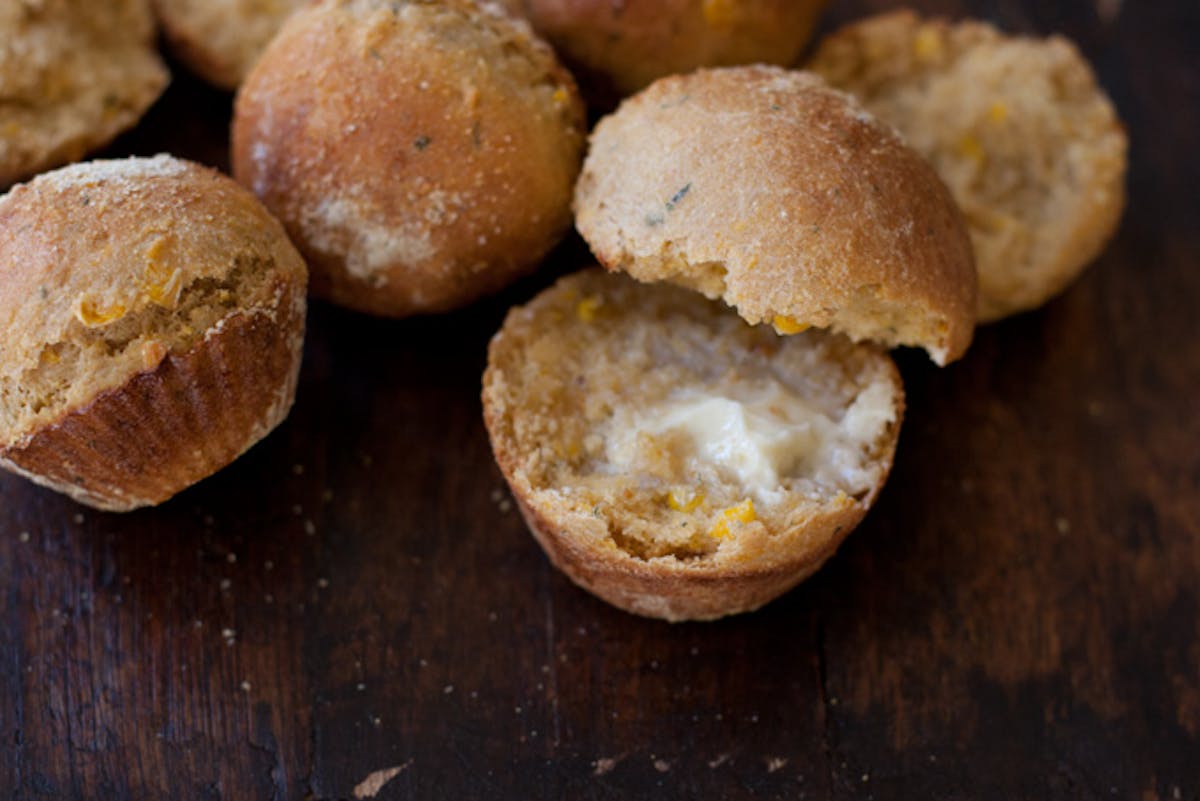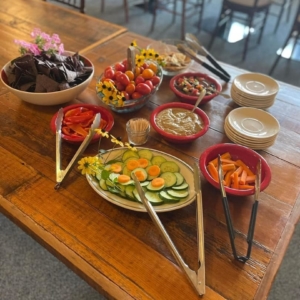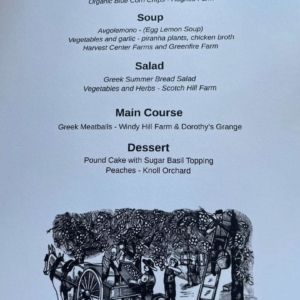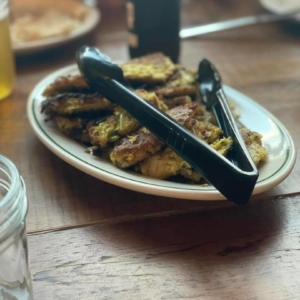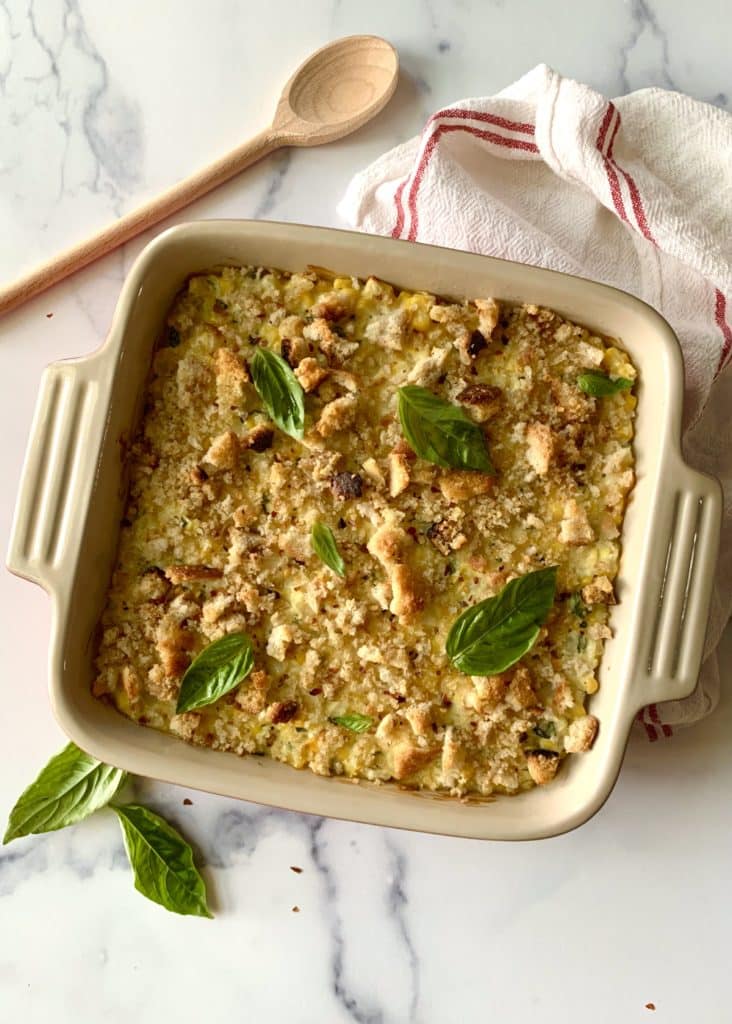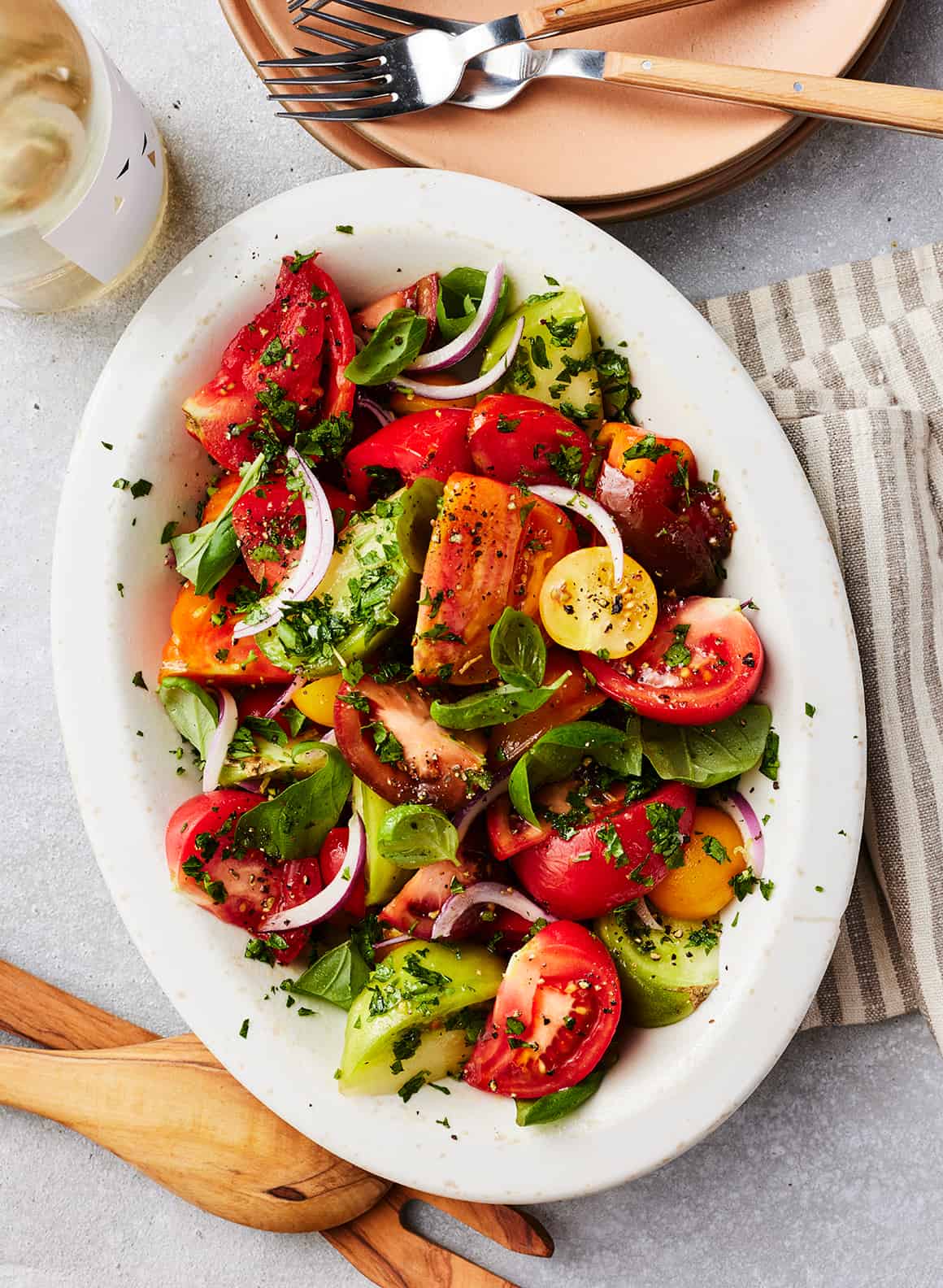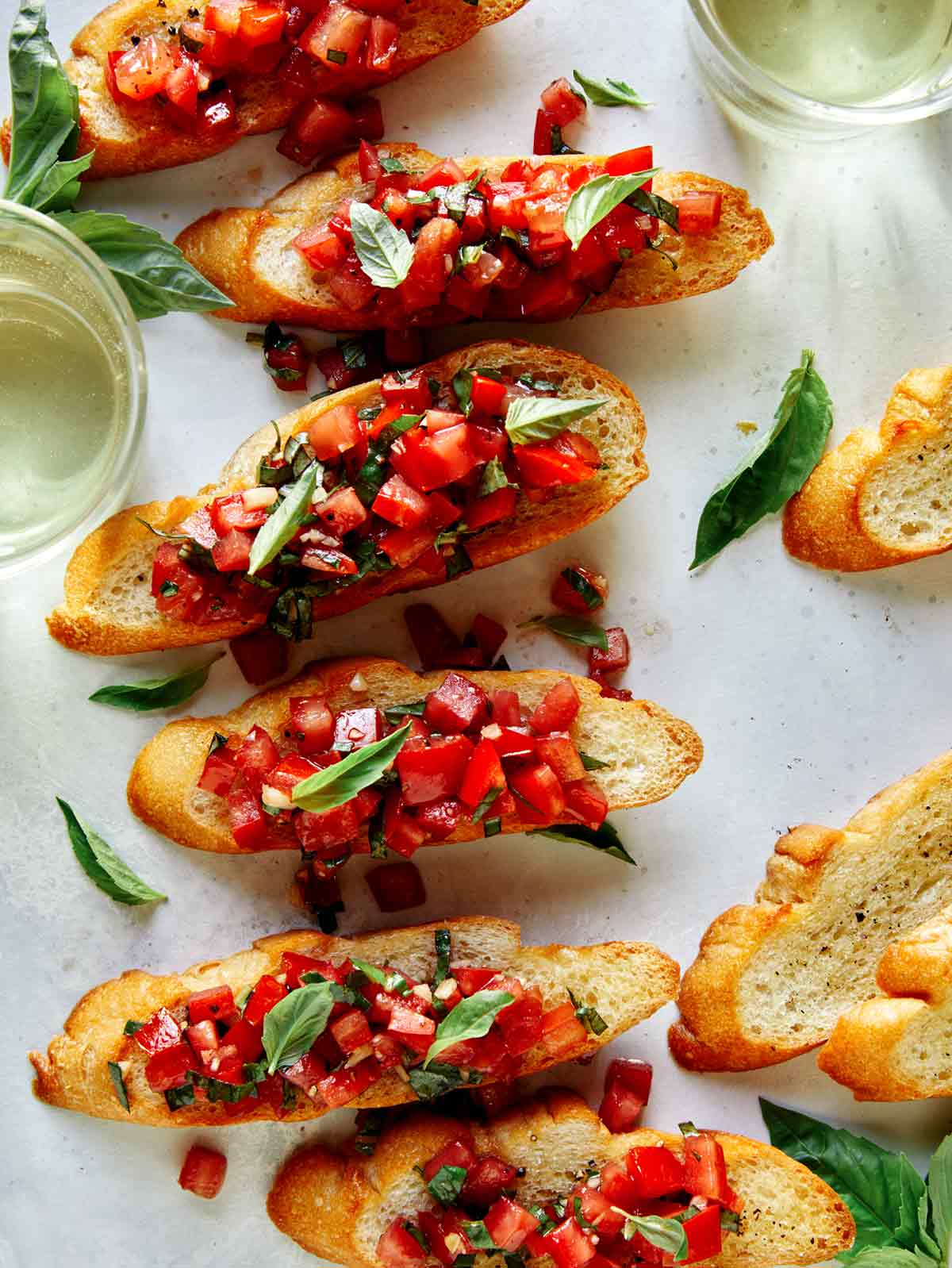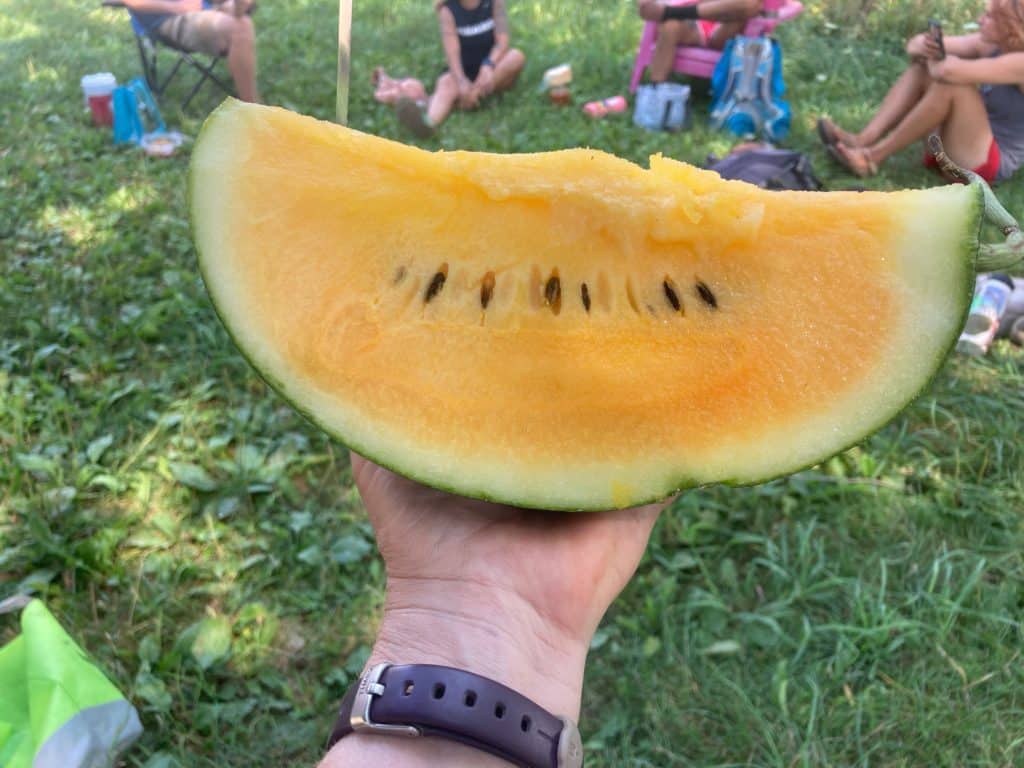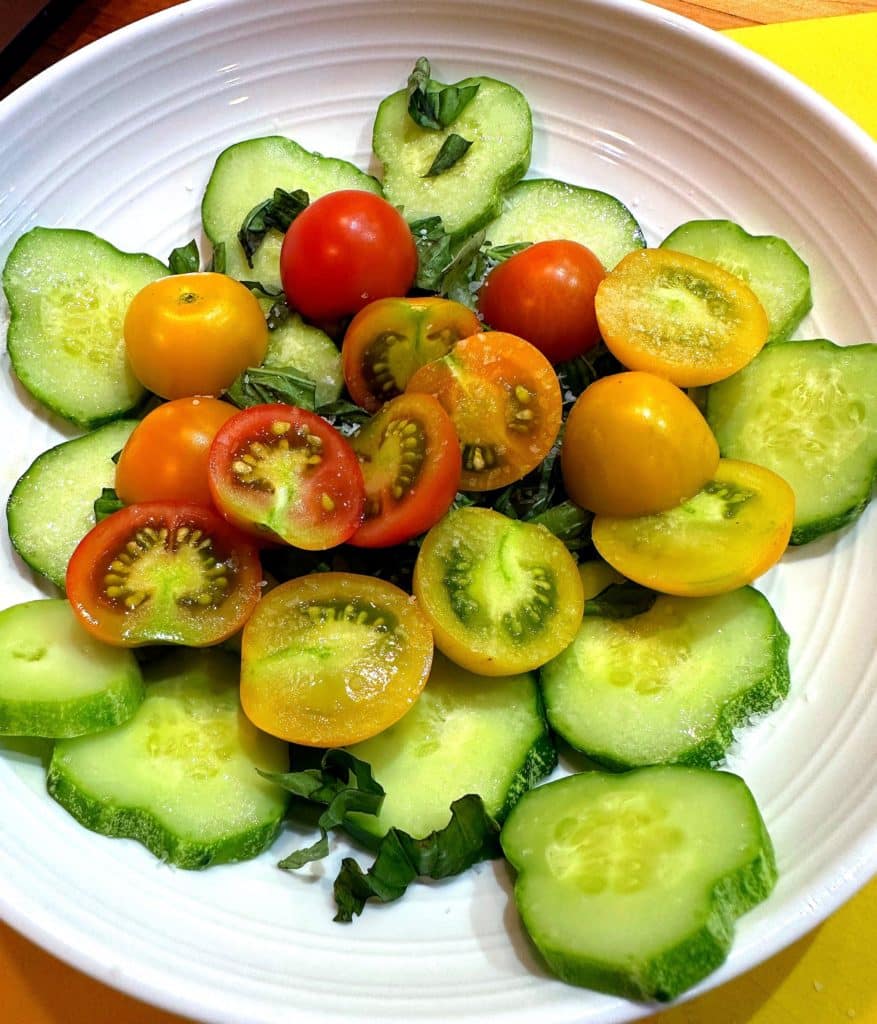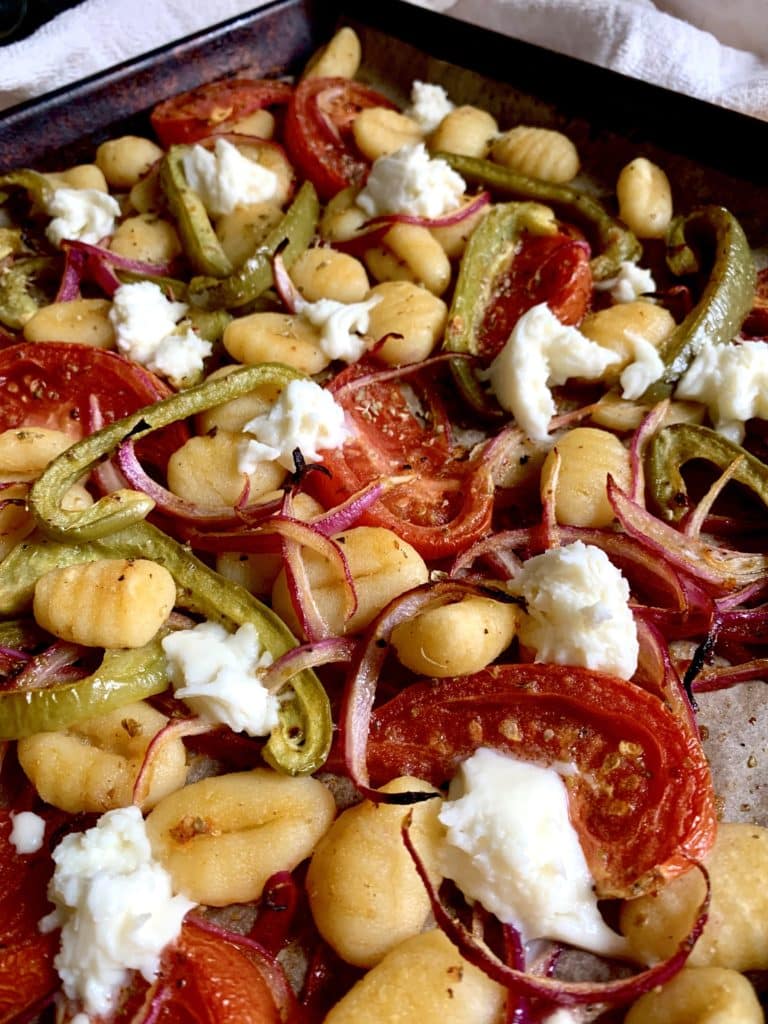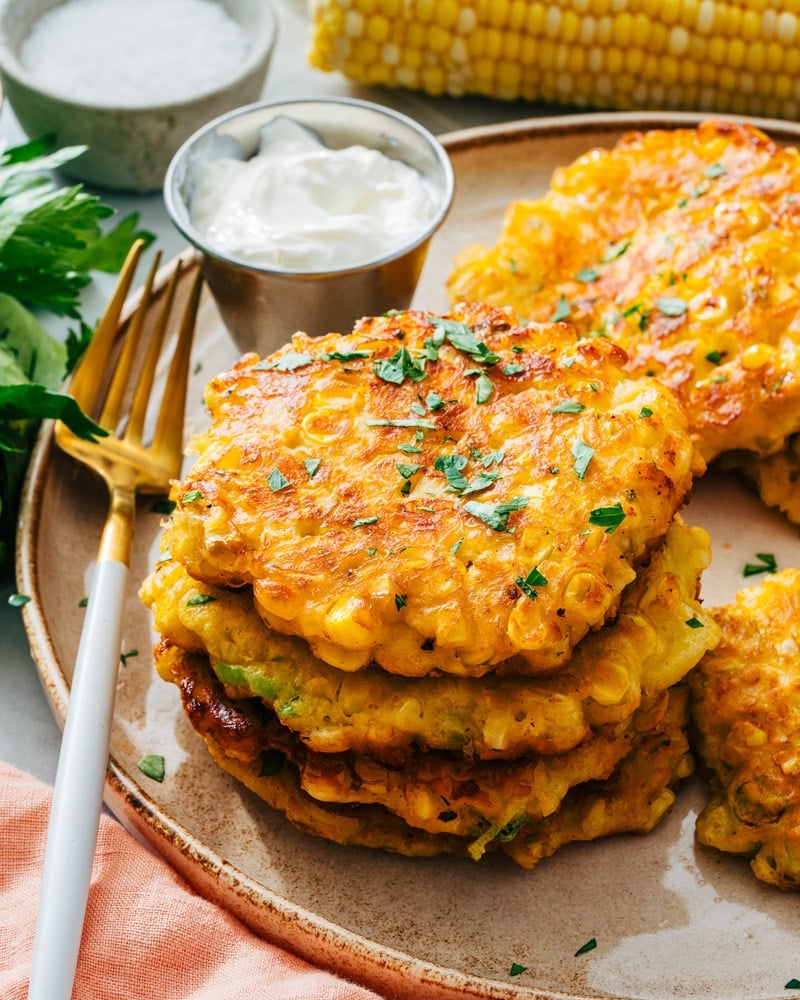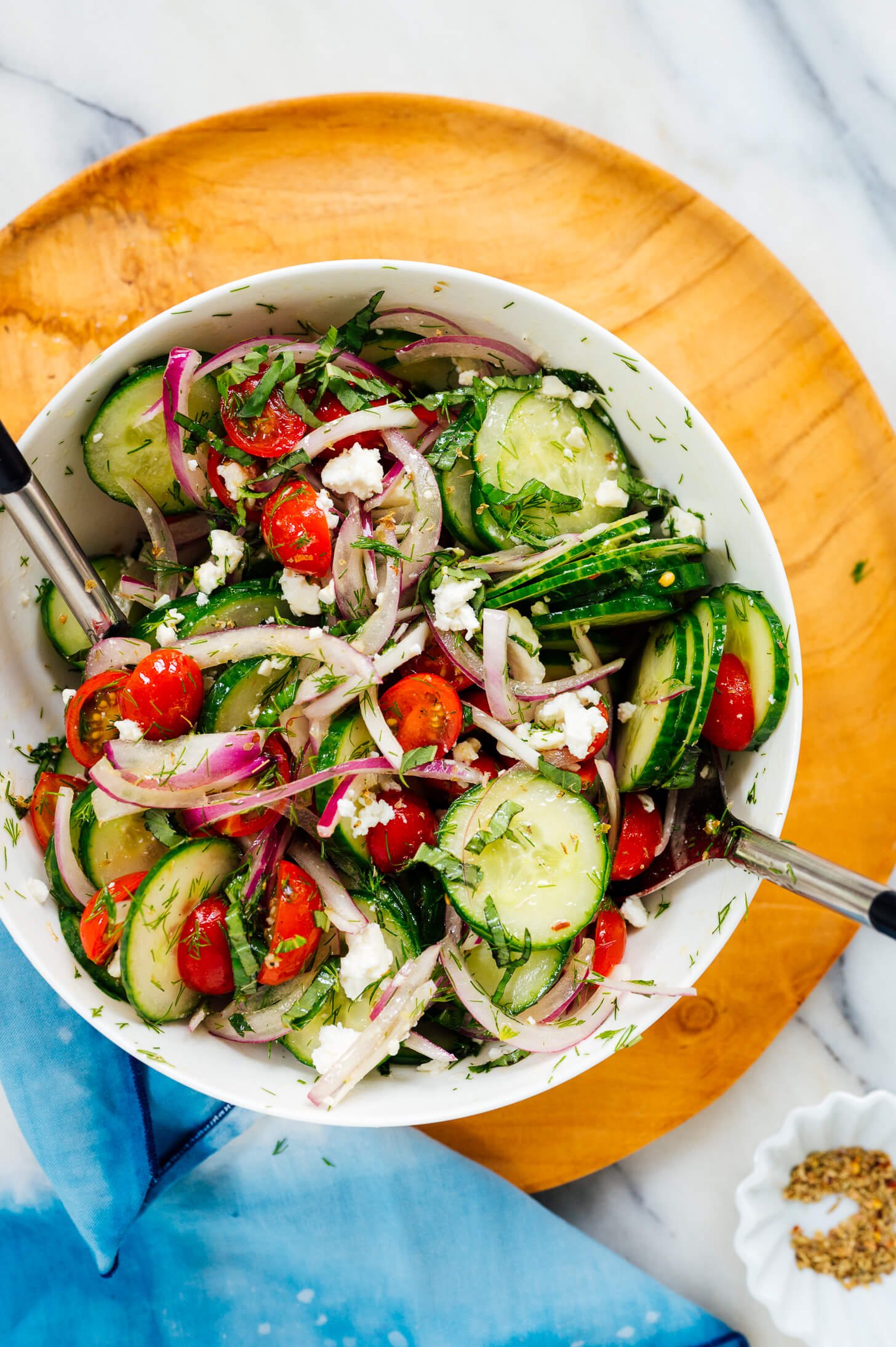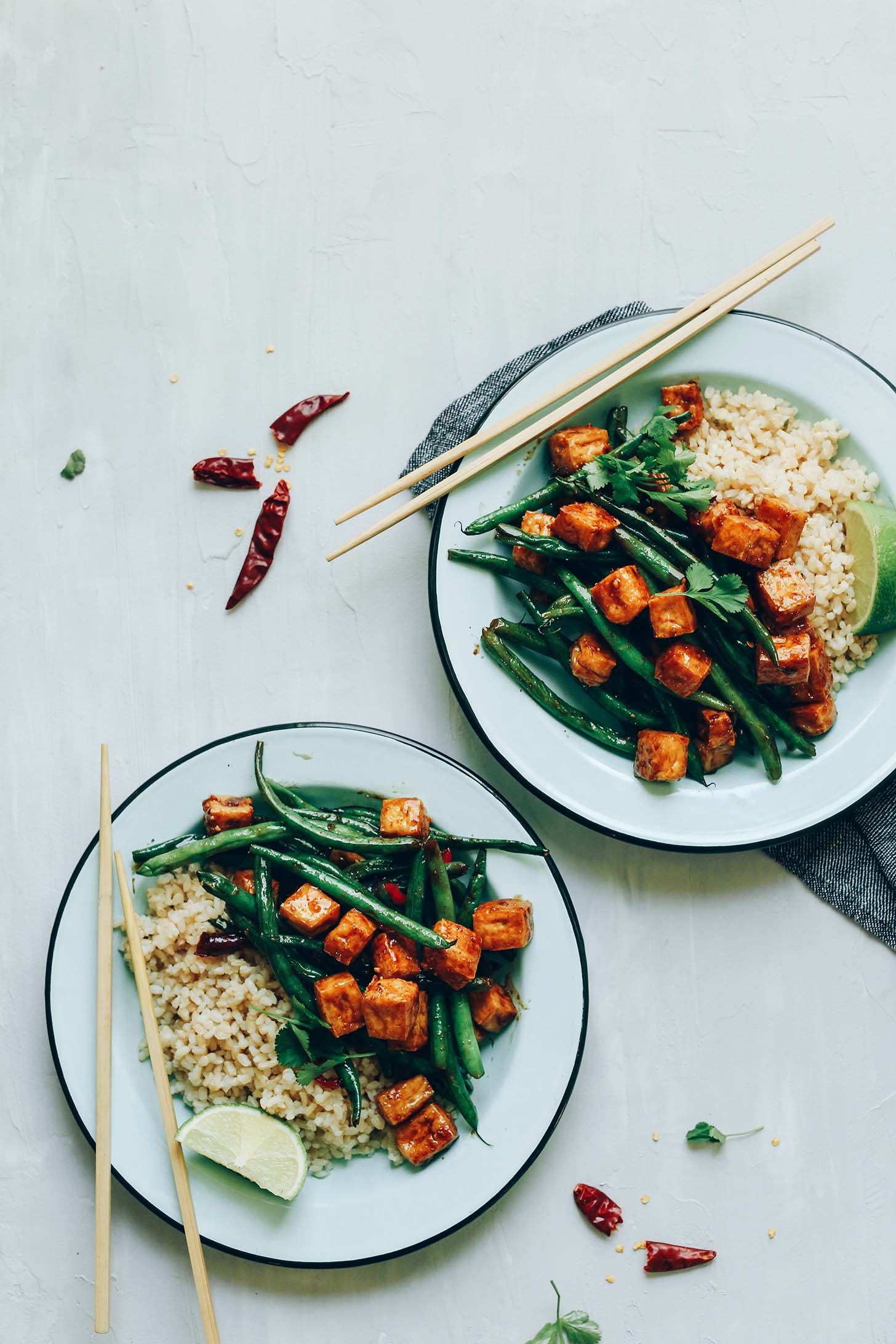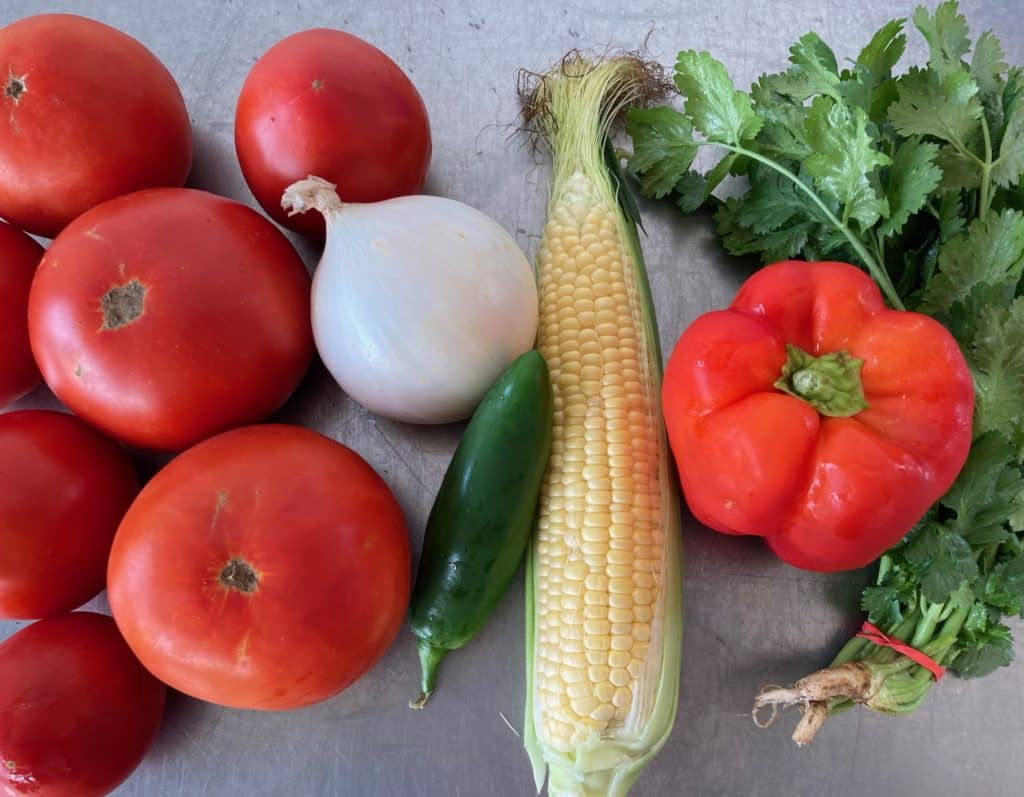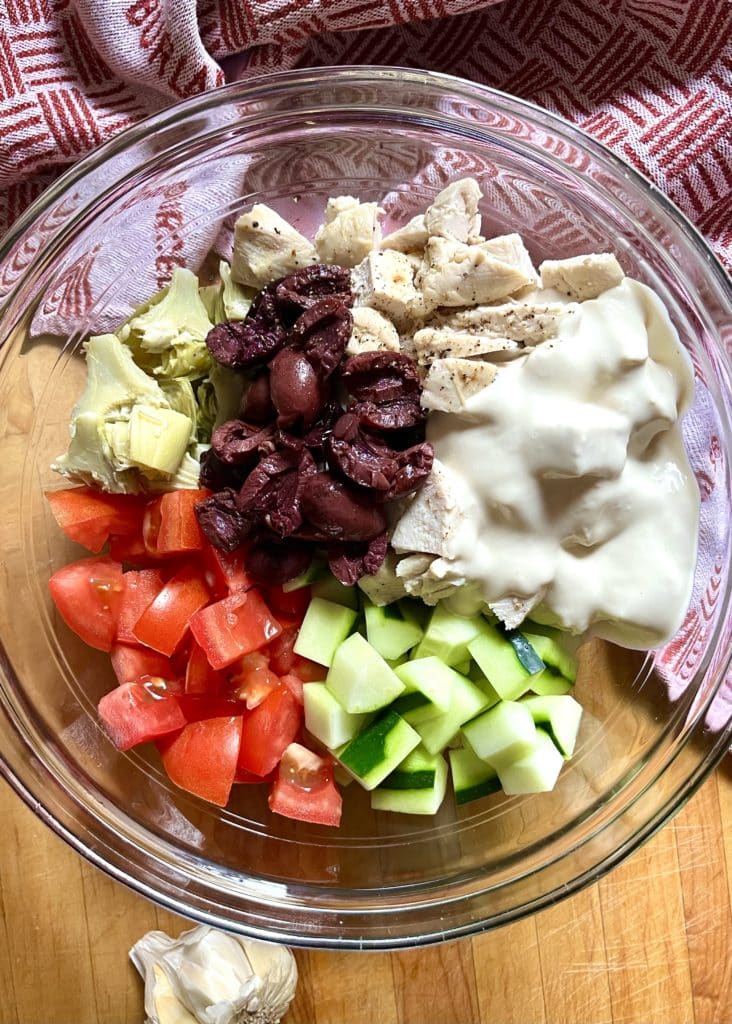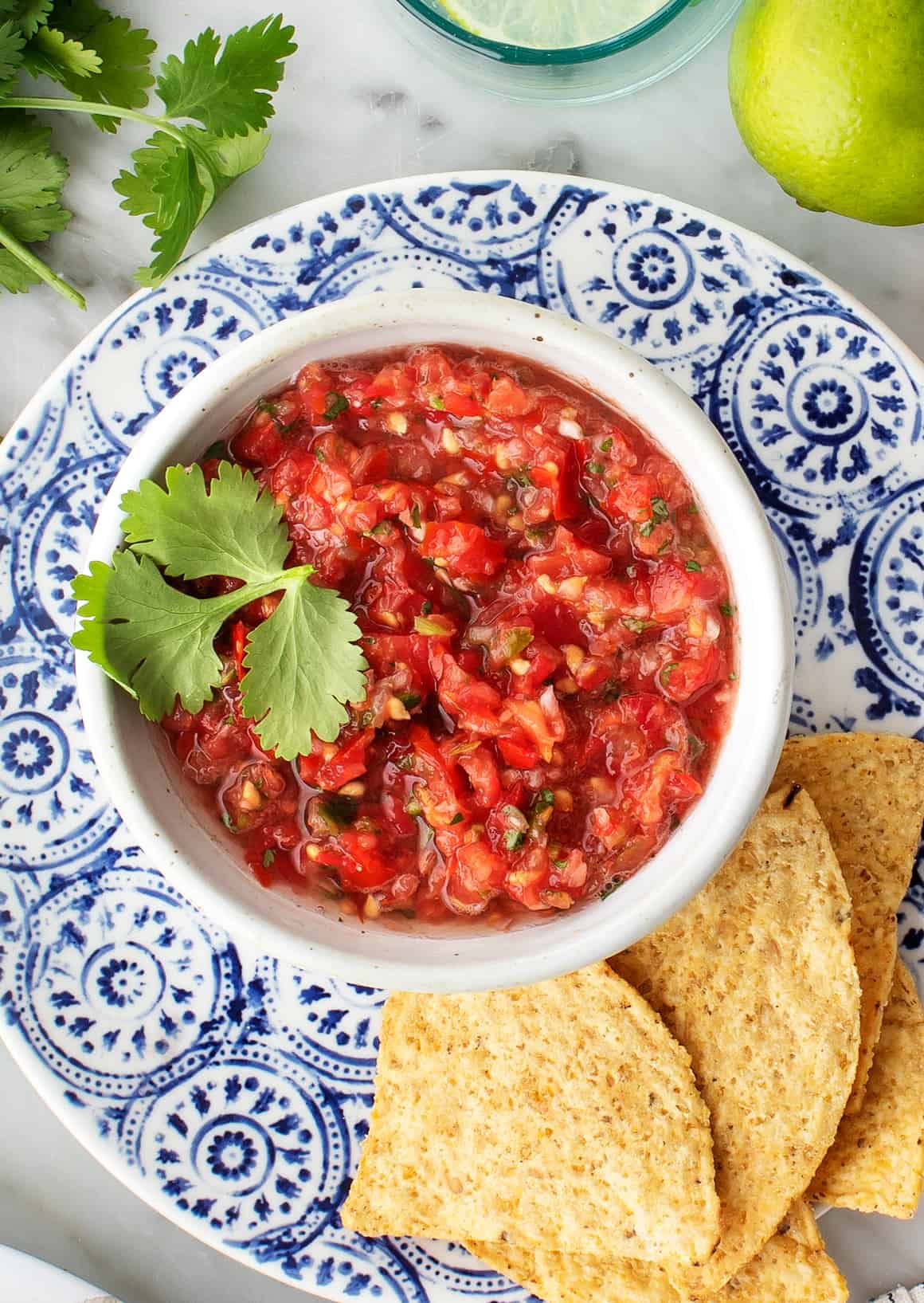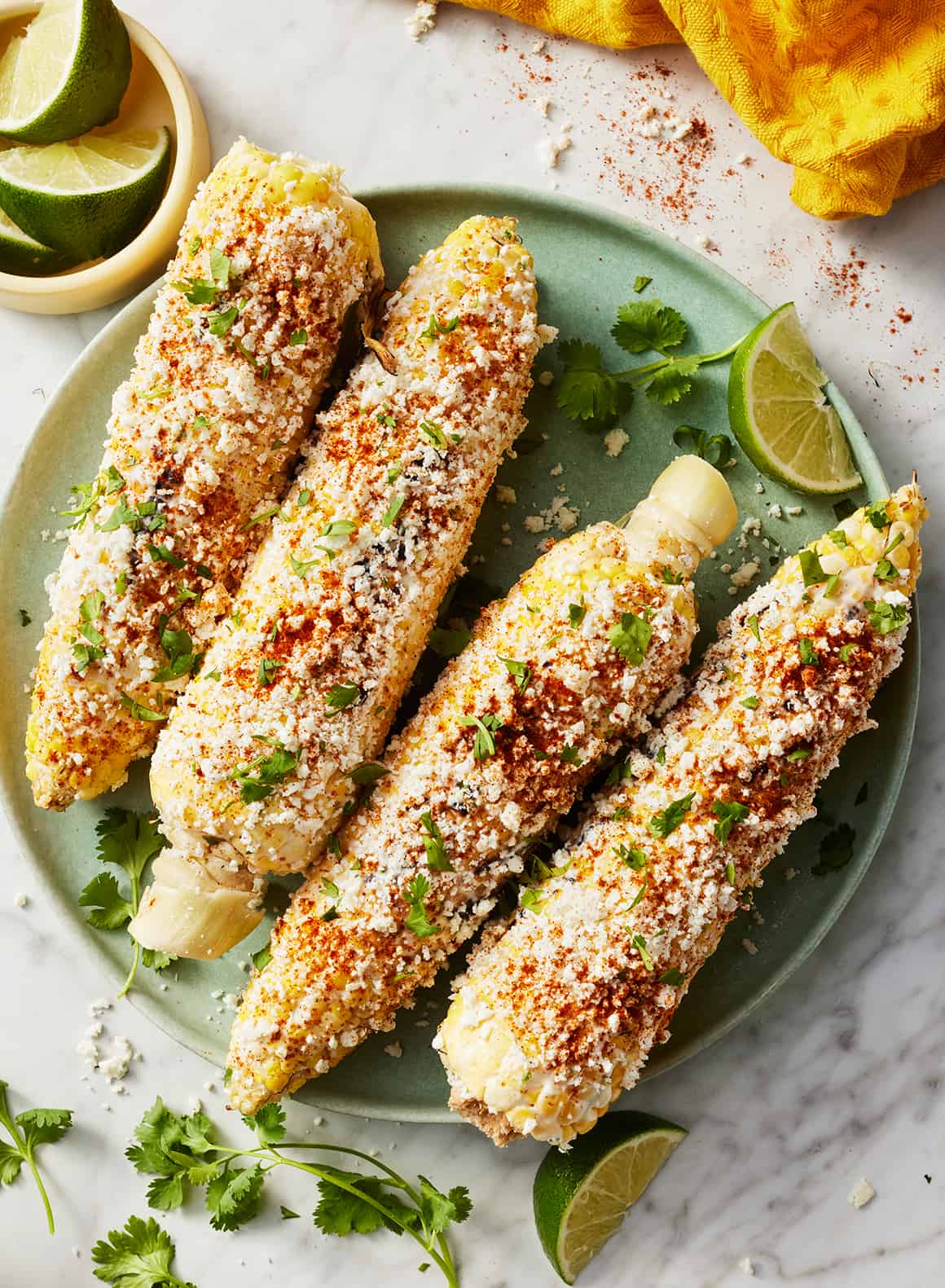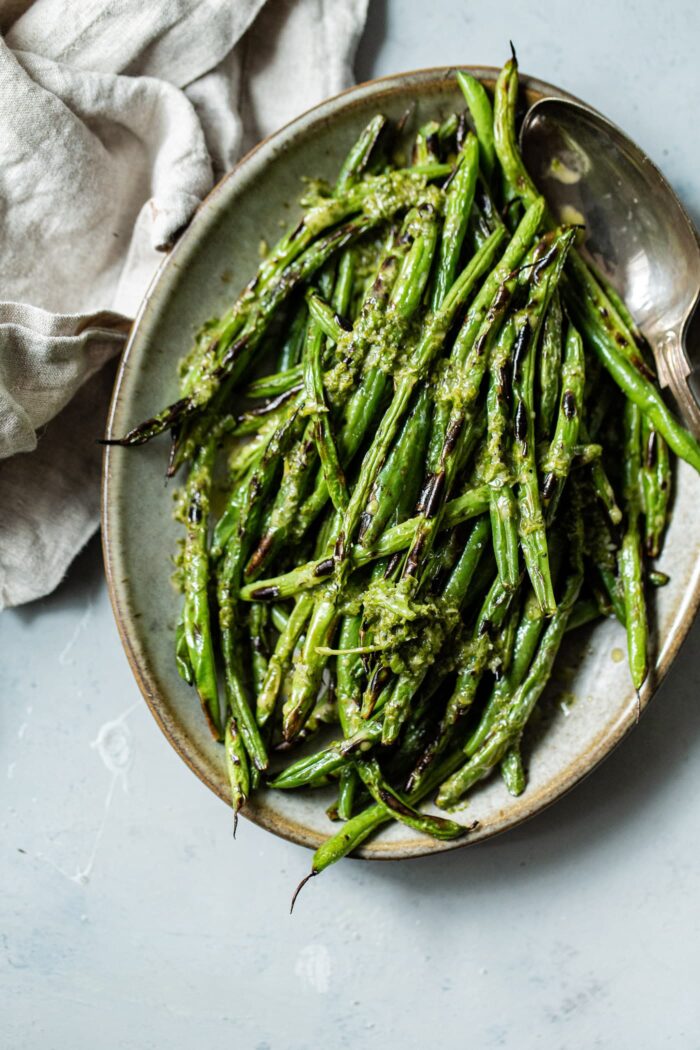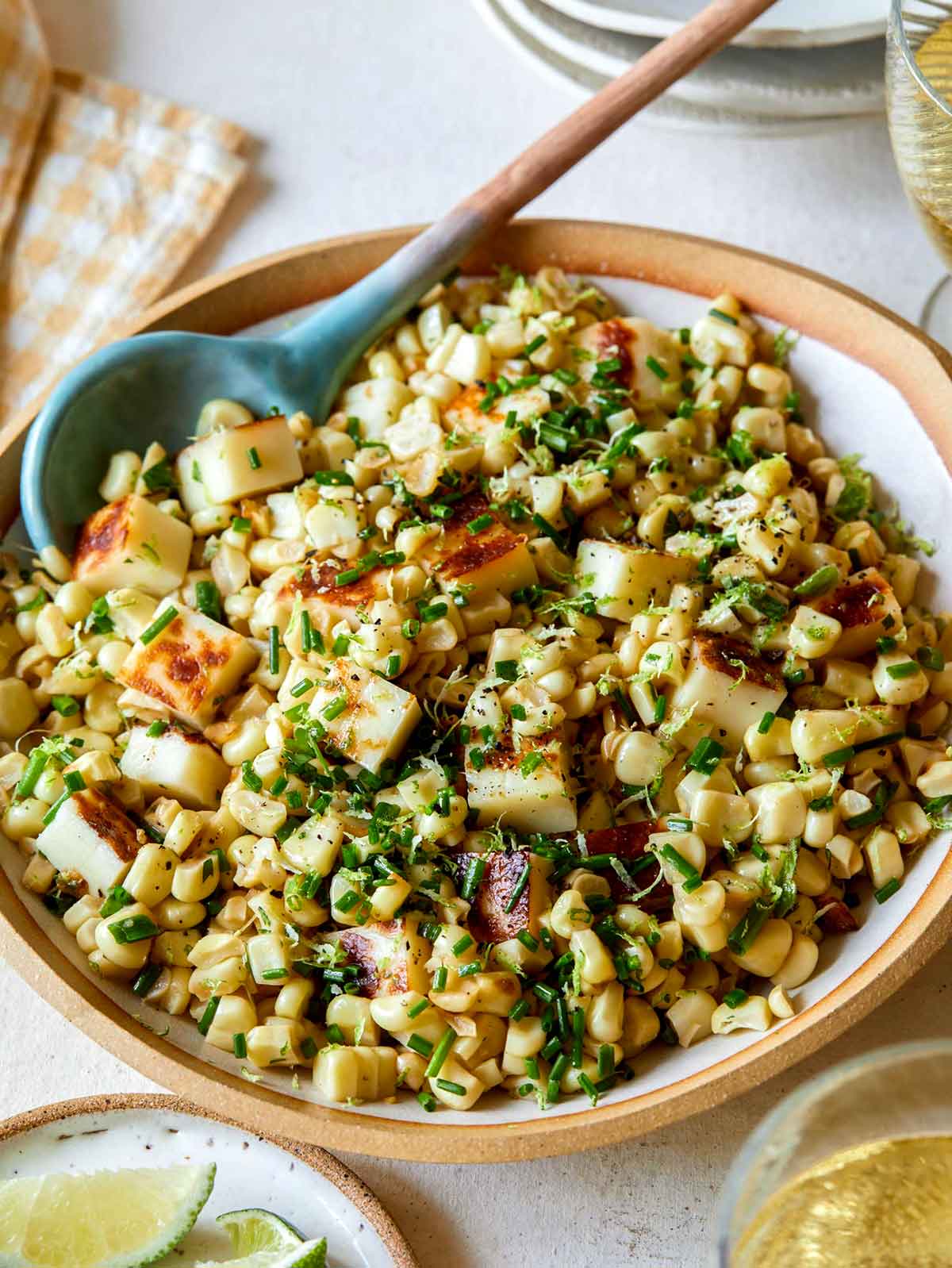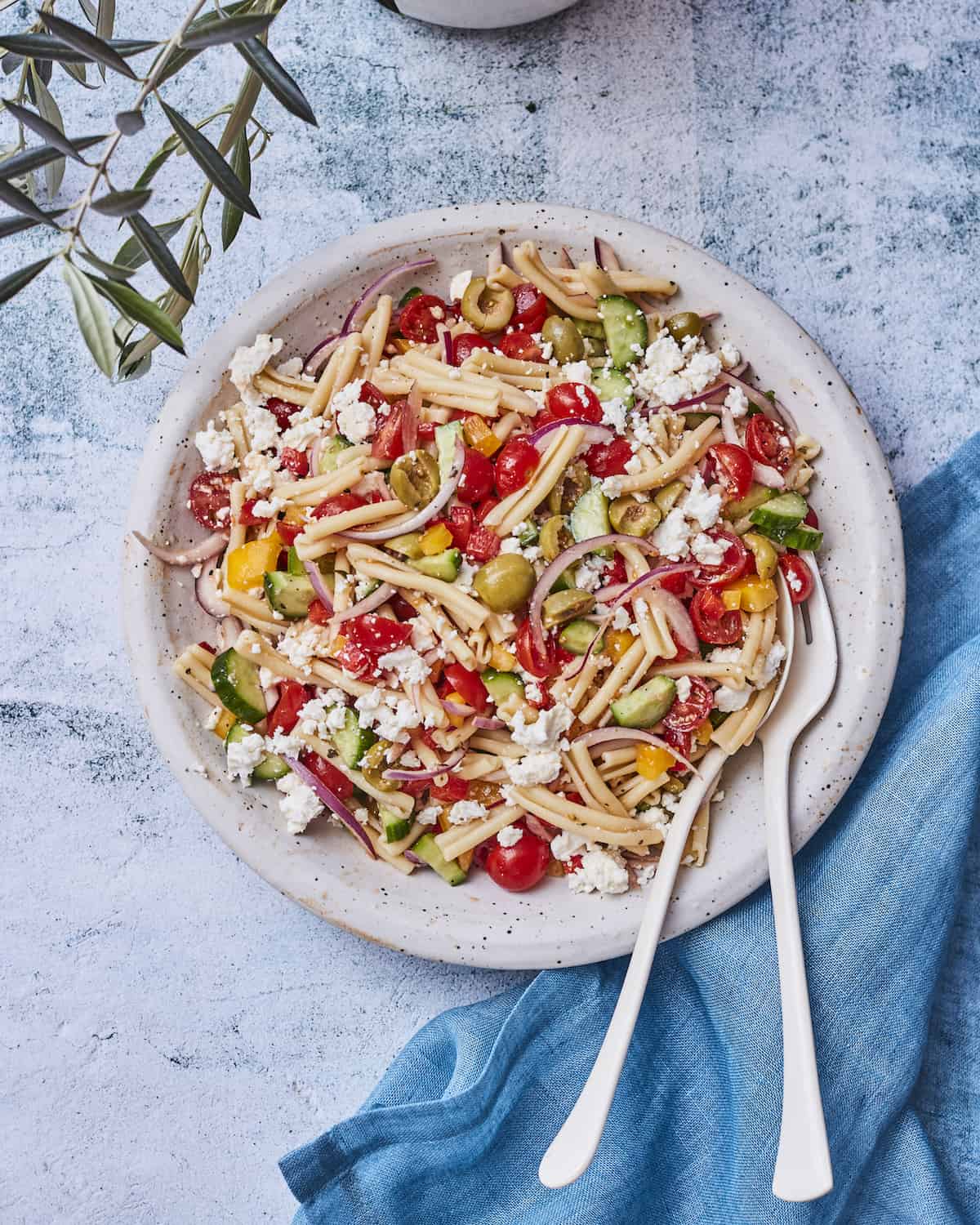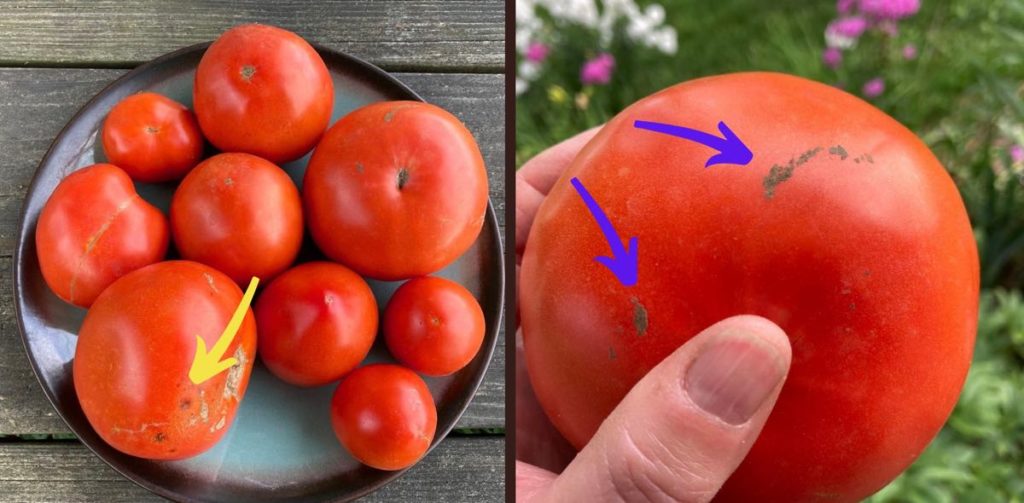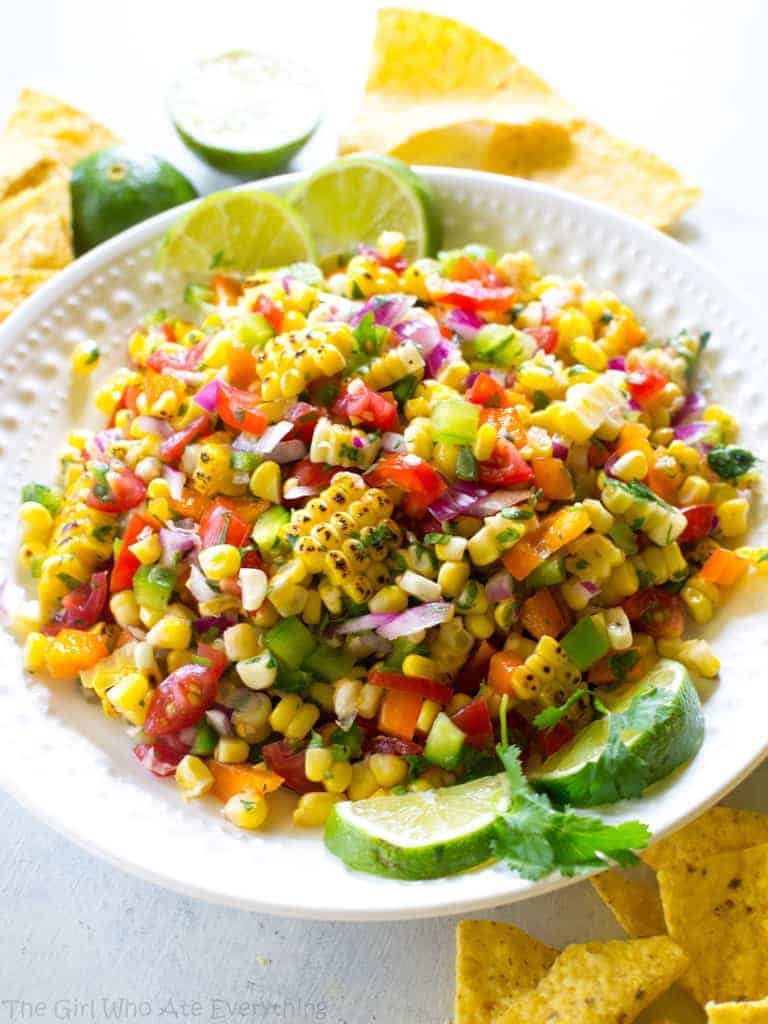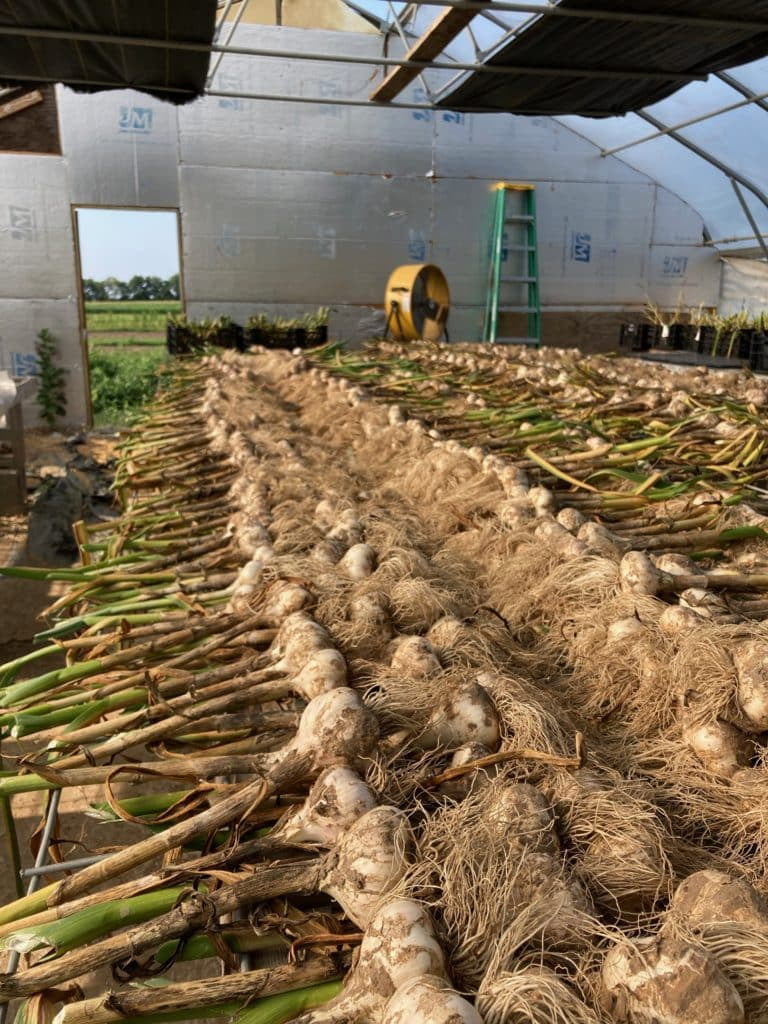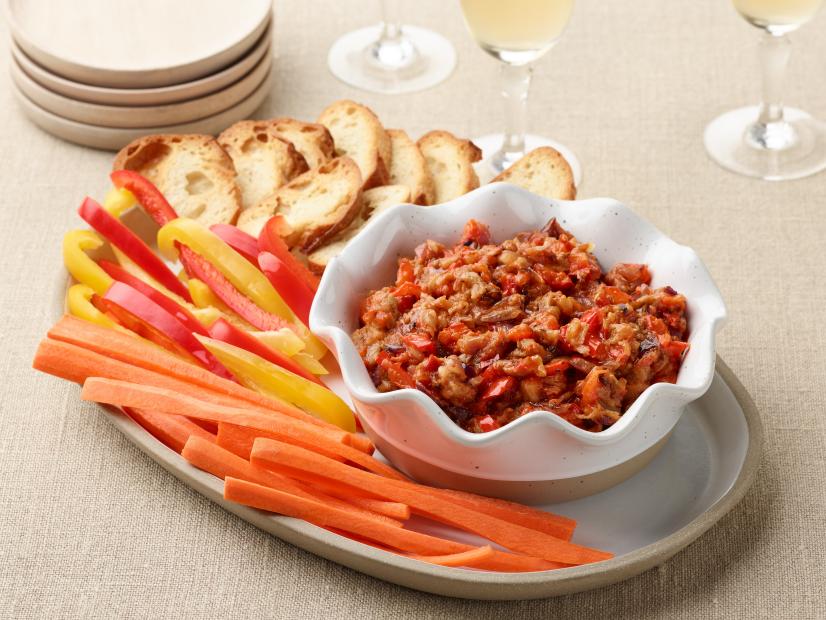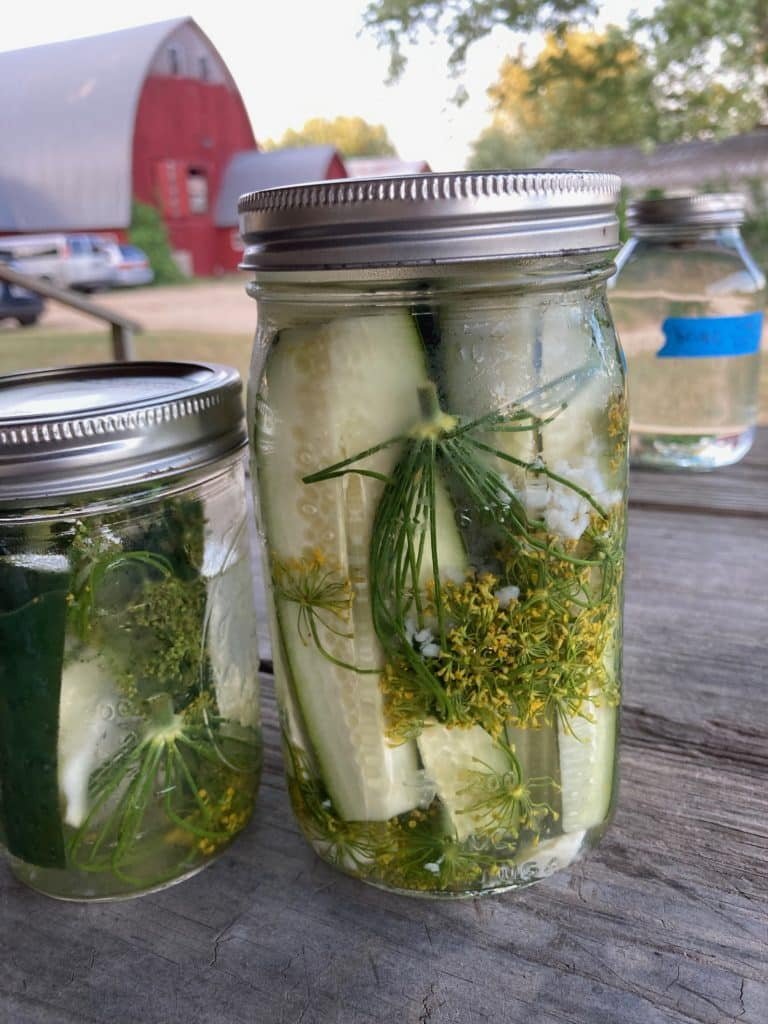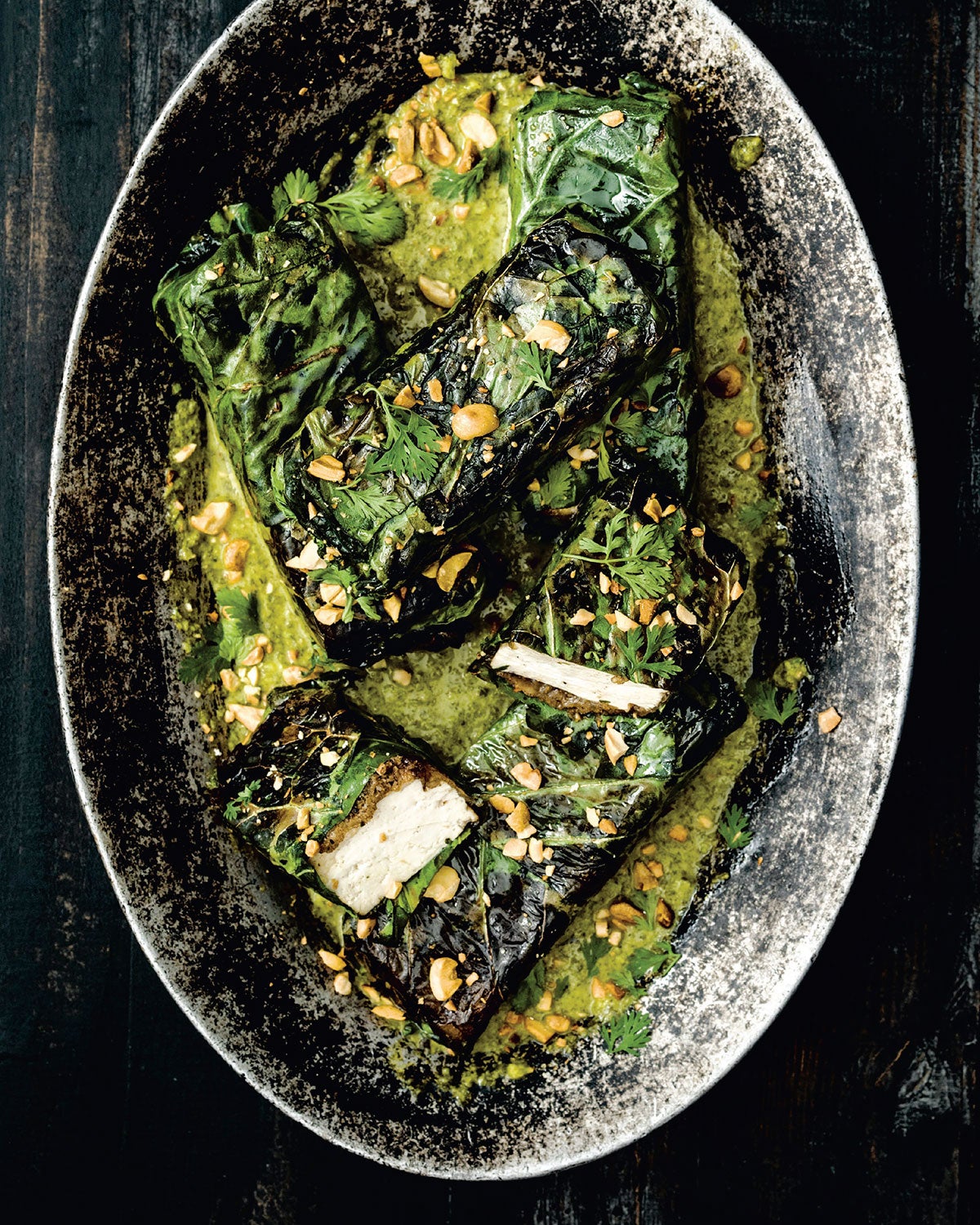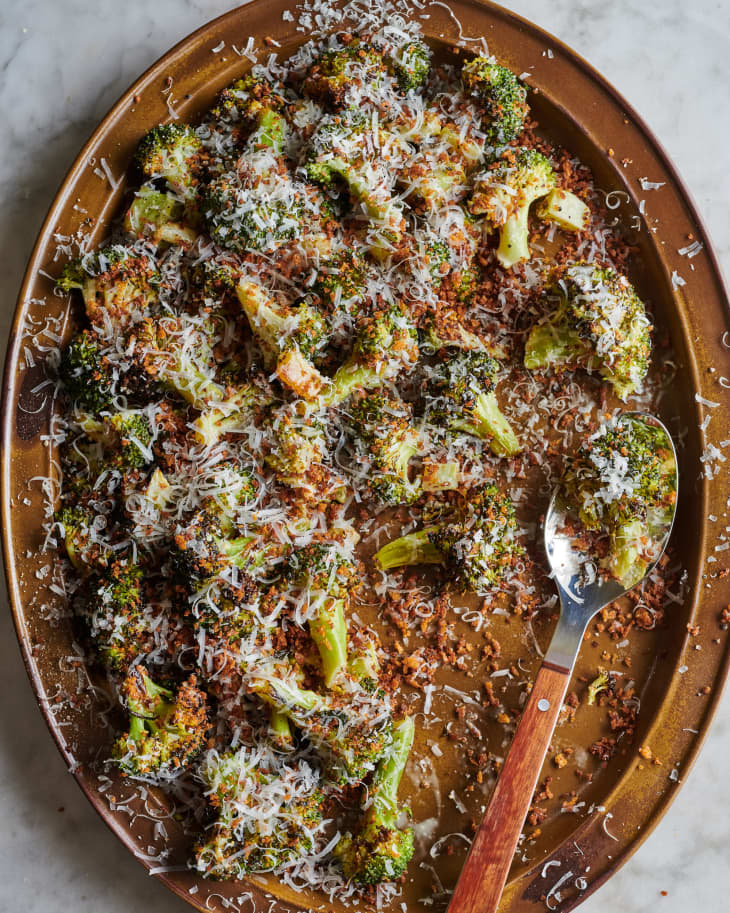Blog
Week #17; purple + A
- On: September 06, 2023
 0
0
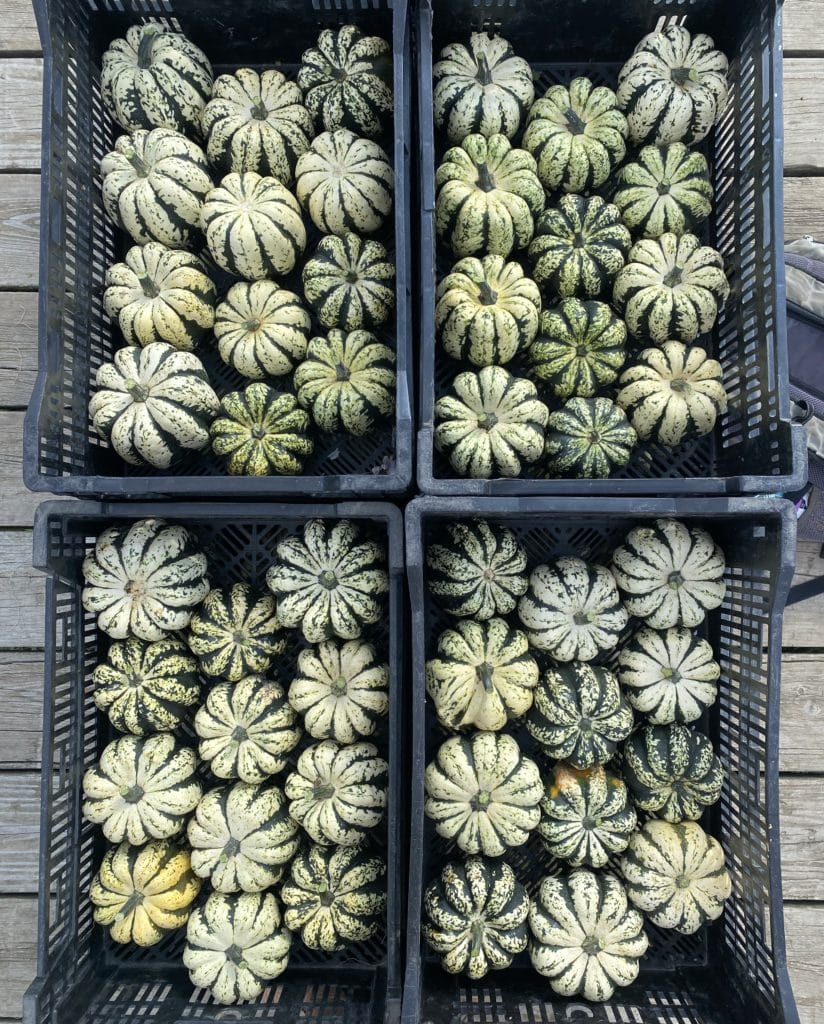
Photo credit Mary Ann Eastman
Winter squash harvest begins! The first squash are curing and will be in your box next week. Above, ‘Heart of Gold,’ a pretty and tasty squash.
I will be away this coming week
I am going to visit family for a few days. If you have questions or need help, please email me by 12 noon on Thurs 9/8. Let’s take care of things now because I will have limited internet access while away. Steve and our hardworking crew will take care of things while I am gone. Thanks!
Beth
Veggie List & Veggie Notes
Week #17, September 7/8, 2023
– Weekly shares
– BiWeekly/ purple
– Sampler/ A group
Sweet corn! Final batch!, ~10 ears
Slicing tomatoes, ~4 lb
Red or yellow frying peppers, ~3
Colored bell pepper, 1 or 2
Oranos snack peppers, 1 or 2
Zucchini &/or yellow squash, ~2 lb
Yellow onion
Red onion
Basil
Next week’s box will probably contain bok choy, winter squash, watermelon, tomatoes, peppers, and more.
Sweet corn report – This is the seventh and final sweet corn delivery for the year. We truly hope you have enjoyed it. We both love it, especially Steve. He has eaten his weight in sweet corn.
You will receive a mix of yellow (Vision) and bicolor corn (Solstice). We did not see many caterpillars in this batch but this is the time of year when they can reappear. You can always take a close look and chop off the tip before shucking if you think there’s a caterpillar.
Slicing tomatoes – They are at their peak, beautiful and delicious!
Peppers – Pepper medley this week. Storage: Refrigerate.
Onion – You’ll receive a yellow onion and a red onion this week. Storage: Store these onions uncovered at room temperature.
RECIPES by DEB
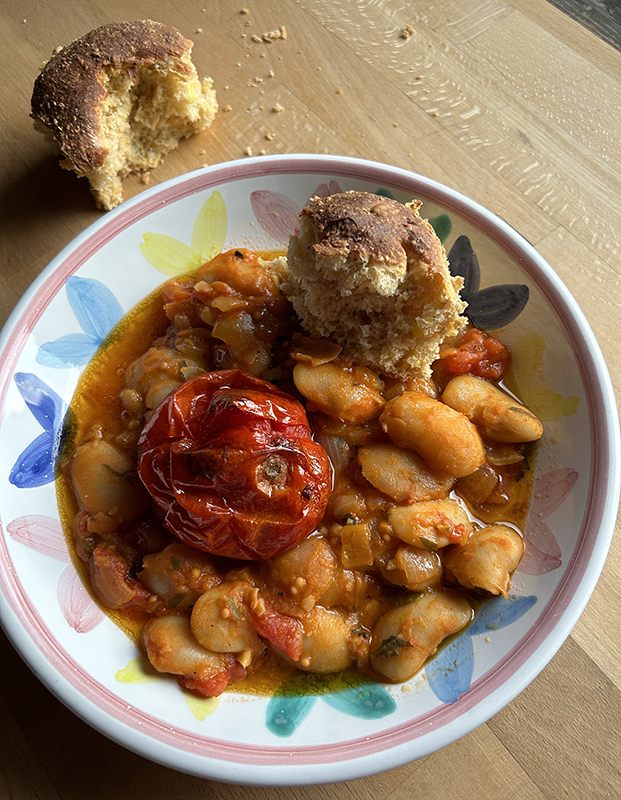
photo by debslunch
Roast Tomatoes over Spicy Beans with More Tomatoes
Takes: 45 mins. to one hour
Serves: 4-6
This recipe includes tomatoes two ways – roasted and in a sauce with a bit of Korean gochujang. It’s based on a recipe by the British food writer and cookbook author Nigel Slater, who uses butter beans, which is what the Brits and some US Southerners call lima beans. I used giant white Corona beans from Rancho Gordo (sometimes available at Willy Street Co-op). You can use any meaty white beans in this recipe, such as great northern beans or cannellini beans; I think even garbanzo beans would work, either canned or cooked from dried. You can also use any type of tomatoes – I roasted slicers and used Romas in the sauce – but again use what you got. Be sure to drizzle a few spoonfuls of the roasted tomato juices over each serving, and serve with crusty bread for mopping up the sauce, possibly the yeasted corn bread below.
For the roasted tomatoes:
5-8 tomatoes, depending on size and how many people you’re serving
3-4 tablespoons of olive oil
For the beans and sauce:
1 1/2 to 2 cups chopped onions
salt and fresh ground pepper to taste
3 tablespoons olive oil
3 cloves of garlic, peeled and shopped or put through a press
3/4 pound tomatoes, slicers or Romas, chopped – peeling optional
2 teaspoons yellow mustard seeds
1 teaspoon ground cumin
1-2 tablespoons gochujang, depending on your taste for heat
2 14-ounce cans white beans, drained, saving about 1/2 cup of the liquid, OR 2 1/2 to 3 cups white beans cooked from dried, with about 1/2 cup of the cooking liquid
Chopped fresh herbs, such as basil or parsley, optional
- Roast the tomatoes: Heat the oven to 425°. Rinse the tomatoes you’re going to roast, and remove the stems, but otherwise leave whole. Nestle the tomatoes in a glass baking dish that holds them pretty snugly, and drizzle the 3-4 tablespoons olive oil over. Try to use a baking dish that just holds the tomatoes – I used a slightly-too-large dish and my kitchen got a little smoky until the tomato juices ran and covered the exposed olive oil in the bottom of the pan! Roast for about 40 minutes, until the tomatoes are brown on top – the original Nigel Slater recipe says until they have “tan on their shoulders” – and they’re just starting to split and collapse.
- While the tomatoes roast, make the beans and sauce: pour the 3 tablespoons olive oil into a 10-12 inch deep skillet with a lid, and heat to medium high. Add the onions and salt and pepper, stir, and reduce the heat to so it’s at a gentle simmer. Add the garlic. Cook gently until the onions are tender, about 10 minutes. Add the chopped tomatoes, mustard seeds, cumin, and gochujang, and continue to cook until the tomatoes are starting to break down, about another 10 minutes. Add the beans and their liquid, stir, and taste for seasoning. Cook for about 10 more minutes until the beans are heated through. If the roasting tomatoes aren’t done at this point, cover the pan, reduce the heat to low, and simmer until the roasters are ready.
- Stir the optional chopped herbs into the sauce, and serve in wide shallow bowls. Give each person a whole tomato with some of the tomato juices.
Yeast-raised Cornbread Recipe | 101 Cookbooks
From 101 Cookbooks
Here’s a fun way to use our fresh corn, and this bread is a nice accompaniment to the beans & tomatoes. Cookbook author and photographer Heidi Swanson has been posting recipes to her 101 Cookbooks blog for close to 20 years, and this is an early one, from 2007, and works beautifully as written. I tweaked Heidi’s method just slightly: I made a sponge with all of the water and yeast, and let that rise for about an hour until nice and bubbly. Then I added the remaining flour, and cornmeal, oil, honey, and corn. I omitted the chives, and also used a combination of white and whole wheat flour, instead of the white whole wheat suggested. Finally, instead of doing a rise at the ball of dough phase I shaped my rolls and let those rise for about another hour, and baked them. Heidi suggests baking the rolls in muffin tins which would be pretty if you have fluted ones, as shown in the top picture – I baked my rolls in 2 cake pans, and got 16 as promised in the recipe.
Hippie Hash (The Best Veggie Hash) | Slender Kitchen
From Slender Kitchen
This flexible recipe for veggie hash is great with a whole variety of toppings, from fresh herbs and feta cheese, as shown the picture, to avocados or a fried egg. The version here includes broccoli, but the main veggies are zucchini or summer squash and peppers, both in this week’s box.
.
.

Simple Sausage and Corn Tart | An Oregon Cottage
From An Oregon Cottage
This corn-peppers-sausage tart is made with an easy press-in olive oil crust. The recipe includes a bacon variation, but you could also omit meat entirely for a vegetarian pie.
.
.
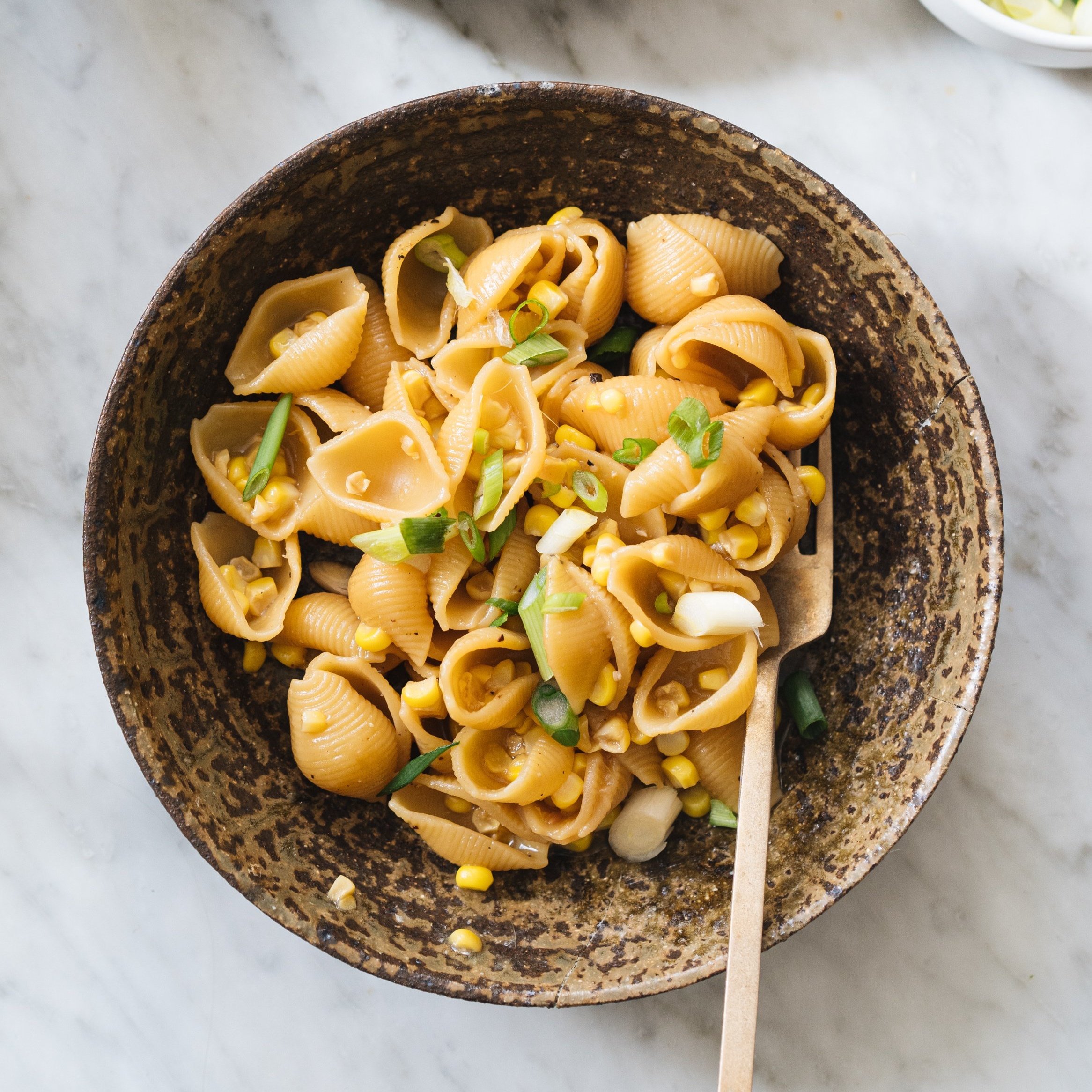
One-pot Miso Corn pasta| ABC Everyday
By Hetty McKinnon, From ABC Everyday
This quick one pot pasta with fresh corn is from Hetty McKinnon, who writes wonderful recipes for vegetables, but most are at NYT Cooking, which is available by subscription only. If you are a subscriber, check out Hetty’s Sook Mei Faan (Cantonese Creamed Corn With Tofu and Rice) at NYT Cooking, for a nice cool summer dish, that despite the cream in the name, is vegan.
.
.
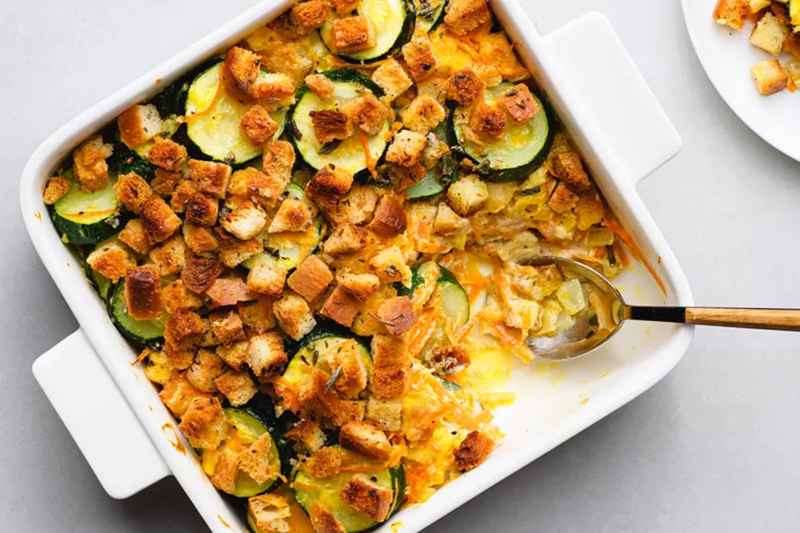
Zucchini and Stuffing Casserole | The Spruce Eats
From The Spruce Eats
This zucchini casserole includes processed ingredients that most of us who get CSA boxes don’t like to use, stuffing mix and cream of chicken soup. I first encountered it in a community garden cookbook from my hometown, Pittsburgh PA, and thought it was so delicious I set out to recreate it without the stuffing mix and soup. One option is to make a cream sauce with vegetable or chicken broth to replace the soup, and make homemade croutons to replace the stuffing mix. An even easier method is to sub in 2 eggs and 3/4 cup of milk for the soup and use 2 cups of bread crumbs, toasted in some of the butter, instead of the stuffing mix.
.
.
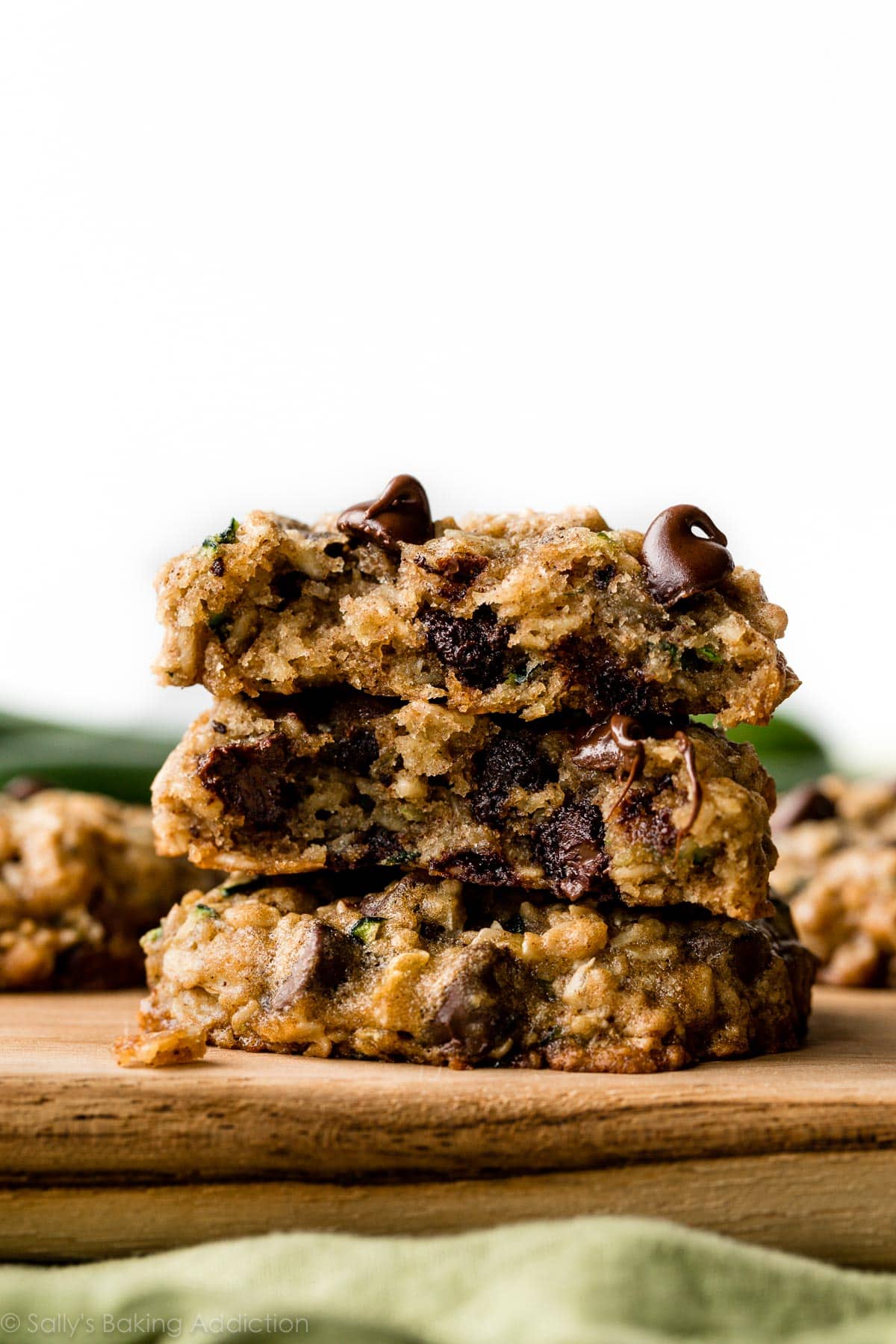
Photo by Sally McKenney
Zucchini Oatmeal Chocolate Chip Cookies | Sally’s Baking Addiction
From Sally’s Baking Addiction
The final recipe for end-of-the-summer zucchini! Cookies with oatmeal and chocolate chips. I have always found the recipes Sally’s Baking Addiction to be thoroughly tested – they work! Sally’s website links to a number of additional ideas for zucchini, sweet and savory – including a zucchini casserole with feta cheese, and no stuffing mix.
Week #16; Monticello Social club
- On: August 30, 2023
 0
0
We have a new favorite place to enjoy amazing meals prepared with local foods. During the pandemic, a group of farmer friends started a prepared foods venture called the Community Kitchen Co-op. This year, they are offering sit-down meals in their beautiful shop in tiny Monticello, south of Verona. The Monticello Social Club hosts five-course, fixed-menu meals every two weeks. We’ve attended three times so far. These folks know how to cook! The spread is always amazing. Most of the photos are from the August 26 dinner with a few thrown in from earlier evenings.
This is not some weird paid promo. I don’t do that. These are people I admire for their work in local communities. I love what they are doing it and want to spread the word. While it’s called a ‘social club’, it is completely open to the public. Look for Steve and me if you attend a meal – we try to go at least one per month. The meals are family style and everyone is friendly. These generous meals are the equivalent of the best that Madison has to offer. Come hungry!
Beth
How to freeze sweet corn.
We hope you are enjoying the steady sweet corn as much as we are. Next week (Sept 7/8) will be the final corn delivery. If you’re looking for new ideas, here are a few, all using kernels cut from the cob. I recommend working on a cutting board in your sink, to contain the splatter.
– To freeze corn, cook it as usual, let cool, and cut the kernels from the cob. Pack in freezer boxes or bags. Include the accumulated corn juice, which will help protect the kernels from freezer burn.
– Cooked kernels are good in salsa.
– Raw kernels can be added to soups, stews, tomato sauces. Add and stir during the last few minutes of cooking.
– By now, you probably realize that you can eat raw corn straight from the cob. That’s a Tipi farm favorite!
Veggie List & Veggie Notes
Week #16, August 31/ Sept 1, 2023
– Weekly shares
– BiWeekly/ green
– Sampler/ D group
‘Vision’ sweet corn, 9 ears
Red or orange or yellow watermelon
Slicing tomatoes, ~3 lb
Red frying pepper, 1
Yellow bell pepper, 1 or 2
‘Orano’ orange snack peppers, a few
Zucchini, ~1.25 lb
Yellow ‘Expression’ onion
Basil
Korean Red garlic
By site: 1 cucumber or another pepper
Next week’s box will probably contain sweet corn, tomatoes, peppers, zucchini and more.
Sweet corn – This is another beautiful batch of ‘Vision’. No bugs.
Slicing tomatoes – These are riper than usual and so delicious, due to the hot weather. Eat soon. Spread on a platter on your kitchen counter so you can keep an eye on them. If you see flaws developing, refrigerate.
Peppers – Some of the yellow peppers have black seeds. This is undetectable from the outside, and largely does not affect the pepper itself. If you find this, you will want to trim away the core and rinse the pepper. This is frustrating for us since we cannot recognize it from the outside. And the peppers themselves are so great. We think it’s a transient problem. Doesn’t seem to affect anything other than the yellow bells.
RECIPES by PHOEBE
Creamy Corn Casserole with Basil
If you’re anything like me, you’ll go back for a second serving of this casserole as soon as you’ve finished your first! I love the combination of textures here. A creamy blend of ricotta and Parmesan lightly binds the crisp, juicy corn kernels together, and a crunchy layer of breadcrumbs tops it all off. Pair this casserole with a salad for a light vegetarian dinner, or serve it alongside your favorite protein for a heartier meal. Adapted from the Farro & Greens Gratin in Love & Lemons Simple Feel Good Food.
Serves 4 to 6
Prep time: 20 minutes
Cook time: 30 minutes
1 cup diced zucchini (about ½ medium)
2 large eggs
1 cup whole milk ricotta cheese
½ cup grated Parmesan cheese
2 garlic cloves, grated
1 teaspoon lemon zest
½ teaspoon sea salt, plus more for sprinkling
Freshly ground black pepper
1 tablespoon extra-virgin olive oil, plus more for drizzling
1 cup diced onion (about ½ medium)
Kernels from 3 ears fresh sweet corn (about 2¼ cups)
1 cup panko or toasted homemade breadcrumbs
⅓ cup finely chopped fresh basil, plus more whole leaves for garnish
Red pepper flakes
Place the zucchini in a colander and toss with a pinch of salt. Set aside to drain.
Preheat the oven to 375°F and oil a 9×9-inch or similar baking dish.
In a large bowl, beat the eggs. Add the ricotta, Parmesan, garlic, lemon zest, salt, and several grinds of pepper and mix well to combine. Set aside.
Heat the olive oil in a large skillet over medium heat. Add the onion and cook, stirring occasionally, until soft, about 5 minutes.
Shake any excess water off the zucchini, then add the zucchini to the pan. Cook for 1 minute. Add the corn and cook, stirring occasionally, until bright yellow and slightly softened, about 3 minutes. Remove from the heat.
Place the breadcrumbs in a small bowl and drizzle with 1 teaspoon olive oil. Toss to coat, adding more oil as needed, until all the breadcrumbs are lightly coated.
Add the corn mixture to the bowl with the ricotta and mix to combine. Fold in the basil. Transfer the mixture to the prepared baking dish and use a spatula to spread in an even layer. Sprinkle with the breadcrumbs and bake for 18 to 23 minutes, or until the breadcrumbs are golden brown and the casserole is set. Remove from the oven and let stand 5 minutes at room temperature.
Garnish with fresh basil leaves, sprinkle with red pepper flakes, and serve.
.
.
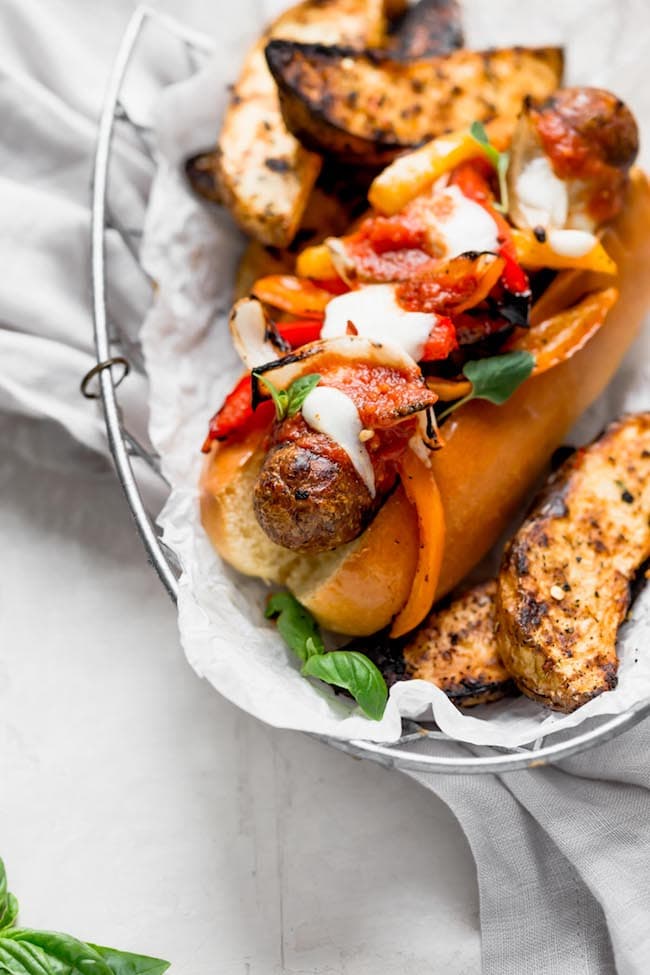
Photo by Two Peas and Their Pod
Grilled Italian Sausage and Peppers
From Two Peas and Their Pod
This recipe would be perfect for a Labor Day cookout! Grill up Italian sausages with onions and peppers, and stuff them into buns with marinara and melty mozzarella.
.
.

Photo by Smitten Kitchen
Grilled Pepper and Torn Mozzarella Panzanella
From Smitten Kitchen
Panzanella, a Tuscan bread salad, is traditionally made with tomatoes, but in this recipe, Deb swaps in grilled sweet peppers for a delicious twist. Top it off with the basil from this week’s box!
.
.
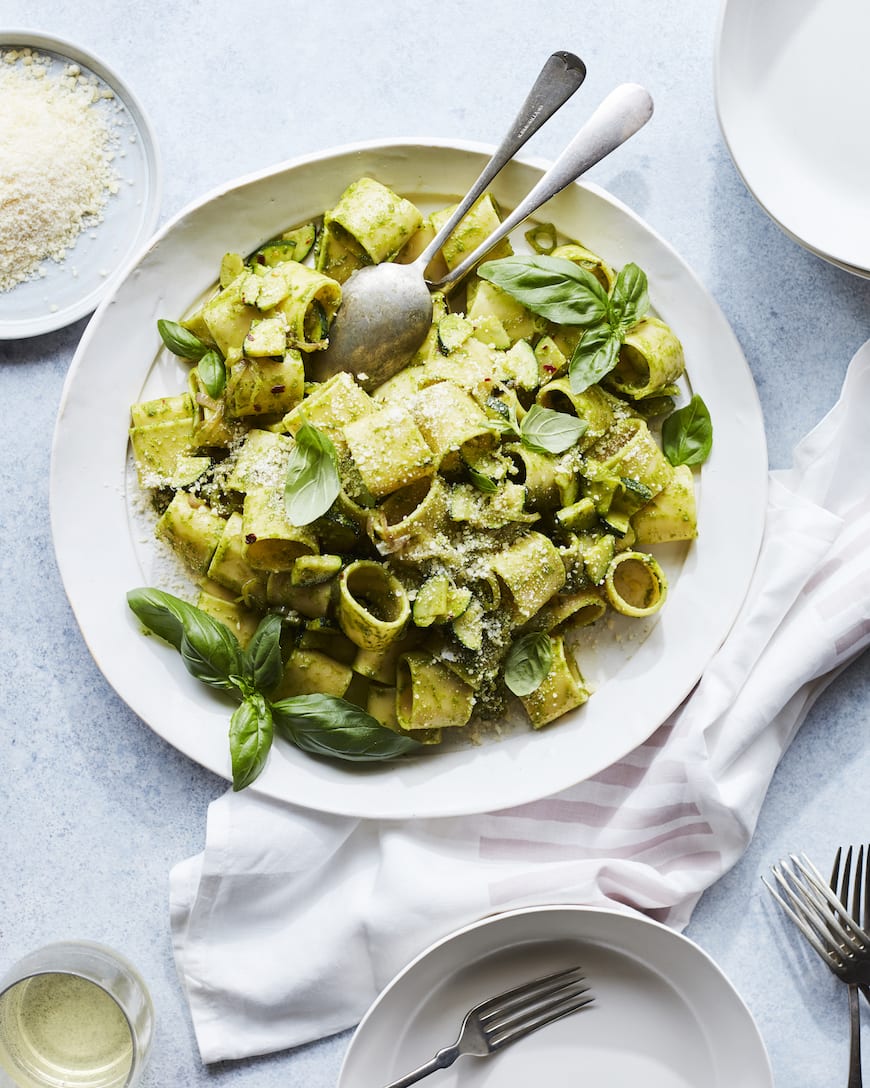
Photo by What’s Gaby Cooking
Basil Vinaigrette Pasta
From What’s Gaby Cooking
It’s not pesto pasta…it’s basil vinaigrette pasta! Gaby adds zucchini to this summery pasta dish, but you could toss in any veggie you like—sweet corn, peppers, or even chopped fresh tomatoes.
- Note: If you don’t have a shallot, omit it from the dressing, or replace it with 1/4 cup diced onion. Use thinly sliced onion in the pasta.
Tomato Salad
From Love & Lemons
If you love tomatoes, you’ll love this salad! It’s amazingly simple, so it really lets the tomatoes shine. Serve it as an easy side dish with any summer meal.
- Note: If you don’t have parsley on hand, skip the gremolata, and top the salad with extra basil.
Tomato Bruschetta
From Spoon Fork Bacon
If you’re hosting a gathering over Labor Day weekend, bruschetta would be a wonderful appetizer! Balsamic vinegar, garlic, and black pepper add depth of flavor to the classic tomato and basil topping.
.
.
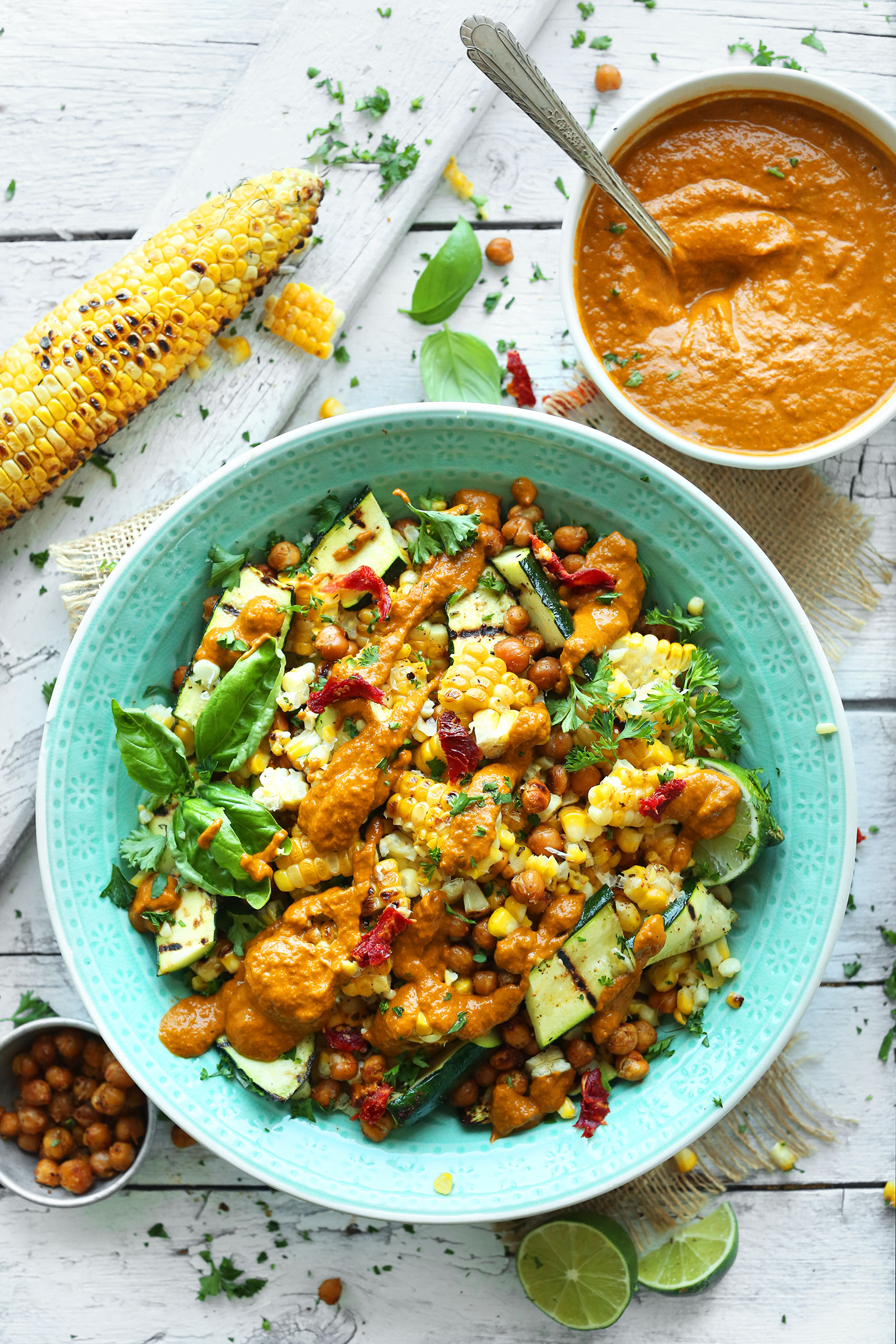
Photo by Minimalist Baker
Grilled Corn & Zucchini Salad with Sun-Dried Tomato Vinaigrette
From Minimalist Baker
This bountiful summer salad features grilled zucchini, sweet corn, and a creamy sun-dried tomato and basil dressing. Serve it as a side dish at your next cookout, or toss in roasted chickpeas to make it a meal.
Week #15; There once was a day so hot …
- On: August 23, 2023
 0
0
There once was a day so hot,
That produce did threaten to rot.
‘‘Twas hard for the crew
And prob’ly for you.
Fare well in the heat we did not.
Beth
Veggie List & Veggie Notes
Week #15, August 24/25, 2023
– Weekly shares
– BiWeekly/ purple
– Sampler/ C group
Bicolor sweet corn, 9 ears
‘New Orchid’ orange watermelon
Slicing tomatoes, 2.5 to 2.75 lb
Red peppers, 2 or 3, bell &/or frying peppers
Zucchini, 1 or 2
Cucumbers, ~2
Yellow onion
Basil, 1 sprig
Korean Red garlic
By site: Green beans (3/4 lb) OR 1 pint grape tomatoes
Next week’s box will probably contain sweet corn, tomatoes, peppers, zucchini, basil, garlic and more.
‘New Orchid’ watermelon – This has a beautiful sherbet color, crisp texture and great flavor. It’s a great variety.
Cucumbers – These might be the last cucumbers of the season. Sob.
Garlic – This is the Korean Red variety, large heads with lots of cloves.
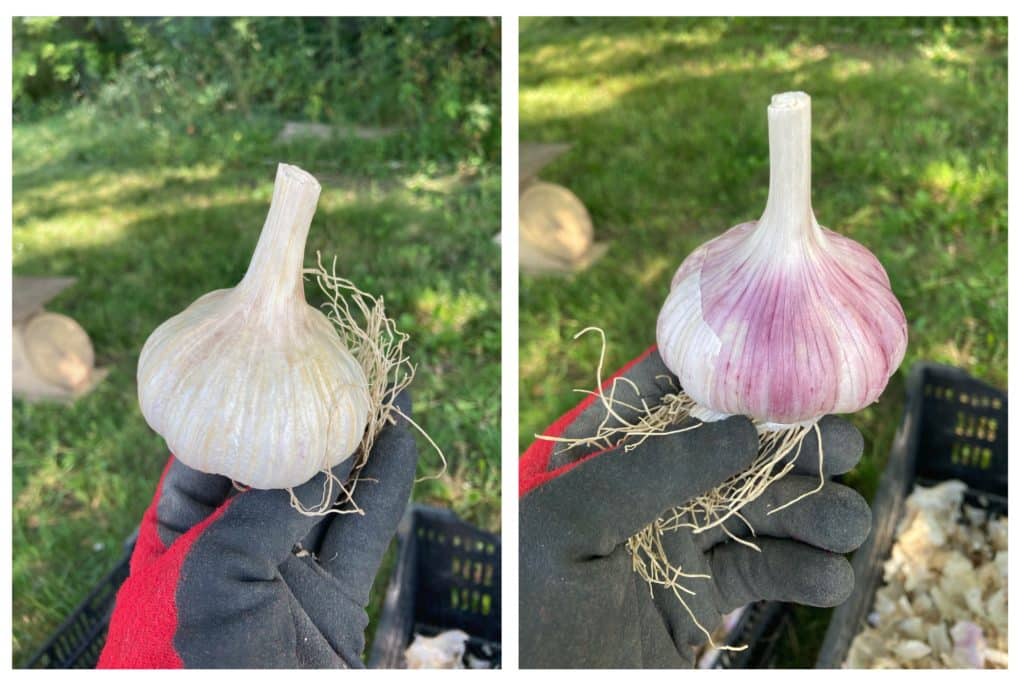
If your Korean Red garlic has white papers, keep peeling and you’ll find its beautiful purple color.
RECIPES by DEB

photo by debslunch
Quick Crust Deep Dish Pizza
Serves: 3-4
Takes: ~45 minutes, depending on what toppings you use!
This pizza is based on Jamie Oliver’s Cheat’s Deep-Pan Pizza. Jamie’s is filled with sausage, onion, and pickled jalapeños and topped with cheddar, but you can use any type of summer vegetables, and add tomato sauce if you like (and have some around!). My version’s filling is bulk Italian sausage, onions, garlic, corn, and red bell pepper topped with a combination of provolone and pepper jack and sliced tomatoes. The trick to this pizza is preparing the filling in a cast iron pan. That gets the pan hot and well greased, then you remove the filling and stretch the dough in the same pan, top, and bake in a hot oven. It’s perfectly OK to omit meat and make your pizza vegetarian, just use the larger amount of olive oil when preparing the filling. The pizza needs to bake in a hot oven but only for a short time, so perfect for hot summer days!
Crust:
2 cups flour – I have only tested unbleached, but I’m sure adding part whole wheat would work just fine
3 teaspoons baking powder
1 teaspoon kosher salt
1 teaspoon sugar, optional
1/2 to 2/3 cup lukewarm water
1 tablespoon olive oil
Pizza:
1-3 tablespoons olive oil (the larger amount is recommended for a vegetarian pie)
8 oz. Italian sausage
3/4 cup sliced onion
2 cloves garlic
small amounts of dried oregano, fennel seed, red pepper flakes, optional
kernels cut from 1 ear of corn
half a bell pepper, sliced
OR about two cups assorted vegetables, OR less veggies and 1/3 cup prepared tomato sauce
1 generous cup grated cheese, your choice
sliced tomatoes for topping
julienned fresh basil leaves, optional
- Make the crust: combine the flour, baking powder, salt, and sugar if using in a medium bowl. Add 1/2 cup water and the olive oil, and mix adding more water as needed to get a pliable dough, with no spots of dry flour. Turn the dough out onto a lightly floured surface and knead until smooth. Invert your scraped out mixing bowl over the dough and let it rest while you make the filling.
- Make the filling: Heat the oven to 475°. Add 1 tablespoon olive oil to a 10-inch cast iron skillet over medium high heat. Add your sausage if using, and brown while breaking the meat into small chunks with a wooden spoon. Add onions, garlic, and optional herbs & spices, and continue to cook until onions are starting to caramelize, about 10 minutes. Add the corn and bell pepper, stir, and continue cooking until peppers are soft, another 5 minutes or so. For vegetarian pizza, start with 2 tablespoons of oil, add the onions and garlic, then any additional vegetables and spices you like. (Cubed zucchini from this week’s box would be nice with corn!)
- Assemble and bake the pizza: Turn the heat under the pan to low. Uncover your dough and roll out to a 9- to 10-inch circle. Scrape your filling into the mixing bowl that was covering the dough. If using meat, add more olive oil if the pan seems dry; if using vegetables only, add the 3rd tablespoon of olive oil. Fold your dough in half, gently – some people like to roll it around the rolling pin – and lay it in the pan. With your finger tips, carefully stretch the dough in the hot pan covering the bottom and going up the sides. If using sauce add it now, spread the filling over the crust, then rest of your toppings. Sprinkle the grated cheese over. If using fresh sliced tomatoes, make a layer of most of the cheese, arrange the tomatoes over the cheese, then top with the last of the cheese. Place in the oven and bake for 15-20 minutes until golden brown. Let rest 5-10 minutes before slicing. Top with fresh basil if desired. I like to remove the pizza from the pan to a cutting board to make it easier to slice.
Cucumber Caprese | Mark Bittman
From The Bittman Project
This is a formula, rather than a recipe, from Mark Bittman. Most of the content is behind a paywall but you can read Bittman’s formula for Cucumber Caprese (and his dissing of more traditional Caprese with mozzarella), an interesting and refreshing way to eat up our summer cucumbers and tomatoes! Chunks of our slicing tomatoes can be subbed for the cherry tomatoes Bittman uses.
.
.

Mexican Street Corn Soup | Foolproof Living
From Foolproof Living
As I’m writing this it’s 87° and feels like 92° outside, so soup might seem a bit off season. But in fact this soup could be prepared in the morning when it’s cool, and reheated for a light supper, without your ever turning your oven on. It calls for potatoes, which do make it heavier – you could omit and increase the corn. The recipe suggests using kernels from 6-8 ears of corn to yield about about 4 cups of corn; I think you might not need that many ears. There are also suggestions for making the soup lower fat, and subbing bell pepper for the jalapeños. You can definitely adjust the toppings to your taste and what you have on hand.
.
.

photo by Julia Gartland
Nonnie’s Tomato Pie Recipe | Food52
From Food52
This is a Southern-style tomato pie with mayonnaise in the filling so it does need to cool and set before cutting; the recipe recommends cooling 30 minutes. There’s also a version at OuiChef, but the recipe on Food52 seems more updated, and provides better instructions for preparing and blind baking the crust, while still giving the option to use purchased crust if you like.
.
.
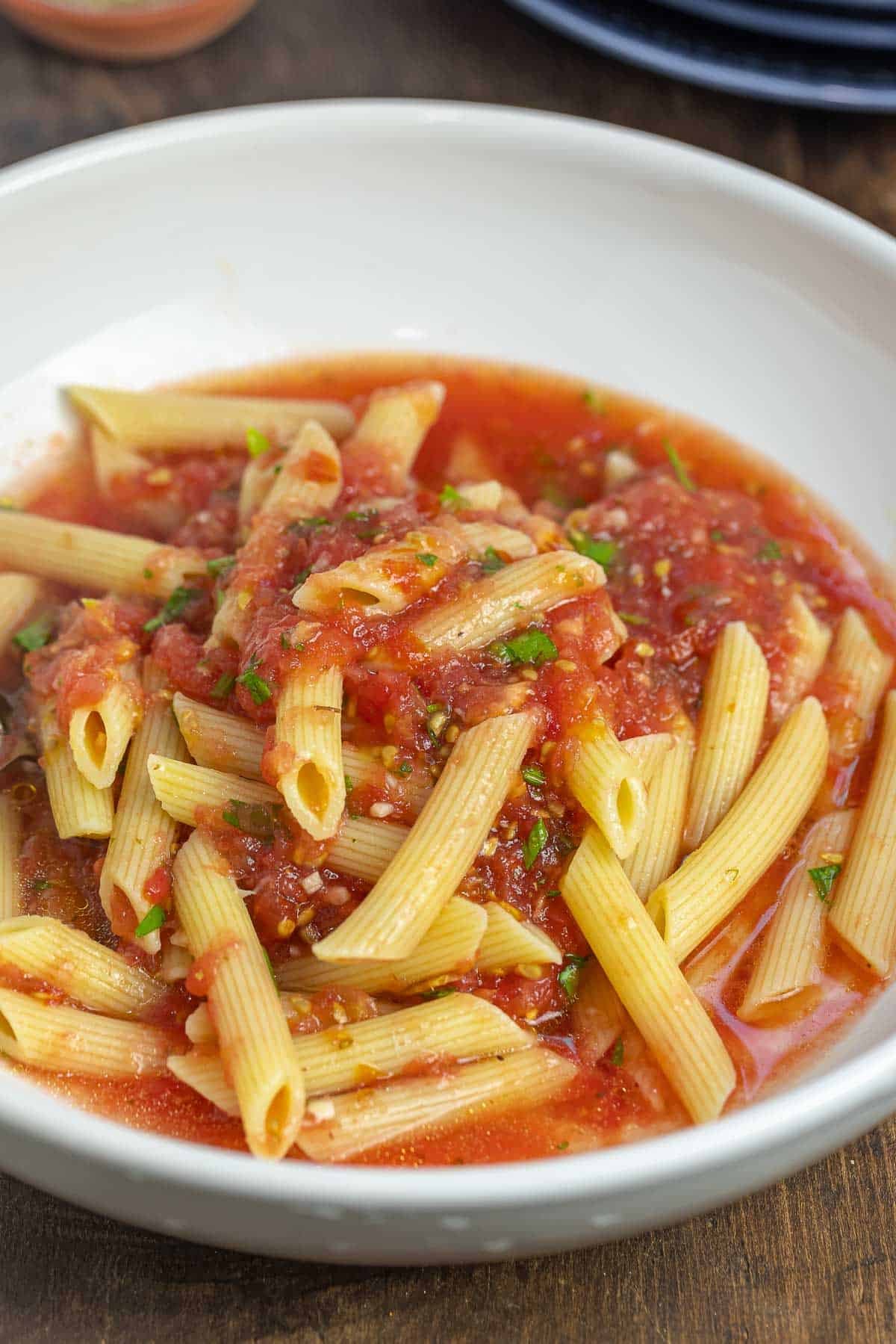
5-Ingredient No-Cook Tomato Sauce | The Mediterranean Dish
From the The Mediterranean Dish
The special technique in this no-cook tomato sauce is grating the tomatoes. You then mix in herbs and seasoning and a little olive oil, let the sauce marinate while you cook the pasta, add warm cooked pasta to the sauce, and serve. The recipe calls for parsley and dried oregano, but fresh basil from our box is a perfect substitution.
.
.
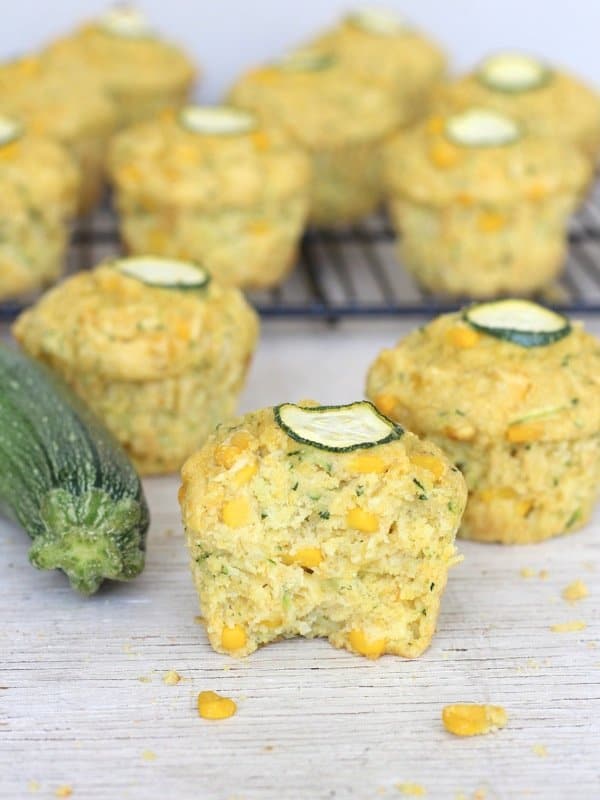
Zucchini Sweet Corn Muffins | The BakerMama
From the BakerMama
I have to admit that the zucchini garnish on these muffins throws me a bit – I’d probably leave it off! Regardless the combination of fresh corn, cornmeal, and zucchini in these moist and mildly sweet muffins is quite nice and they could accompany lots of different main dishes or be eaten for breakfast, lunch, or snacks.
.
.
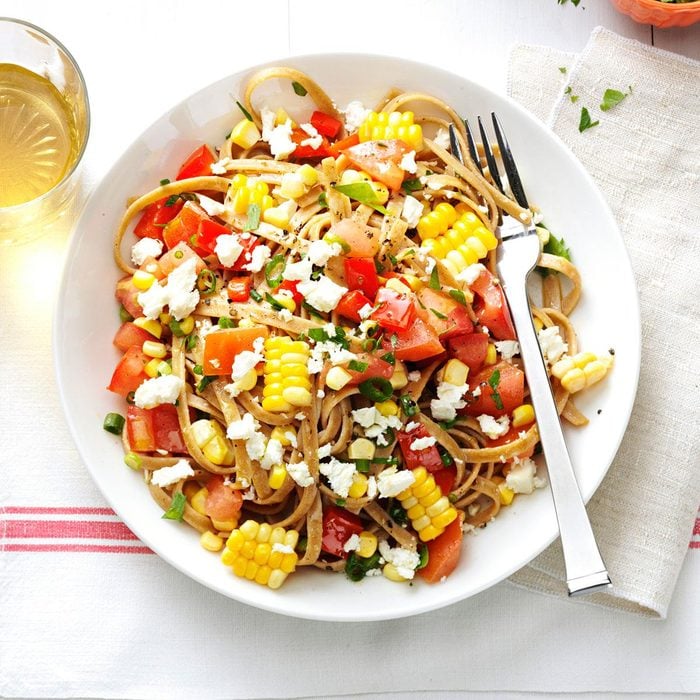
Fresh Corn and Tomato Fettuccine Recipe | Taste of Home
From Taste of Home
This recipe instructs you to cook the corn with the pasta, still on the cob, which adds additional corn flavor to the pasta. If don’t want to fish the corn cobs out of the pasta, you could boil the corn first in the same water, then remove and add the pasta. You can also sub regular onions for the green – cook them along with the bell pepper – and of course use fresh basil as a stand in for parsley.
Week #14, Is that mud??
- On: August 16, 2023
 0
0
Farm News

Have you heard about this stuff called … mud? We rediscovered it on Monday, during the first all-day rain of the year. We had to get the rain gear out of storage. That’s pretty crazy; it’s August. We are happy to get the rain – it has been a very droughty season here.

The irrigator is parked, at least for now.
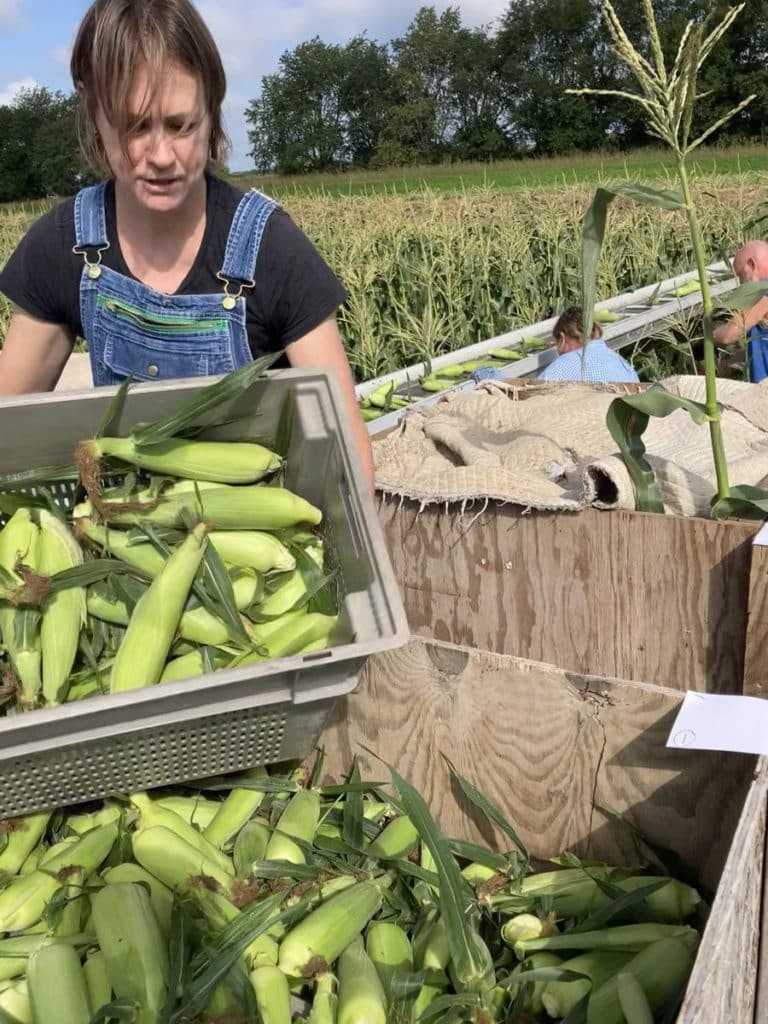
We said good-by to longterm employee Karen.
After ten years working for us, she’s returning to school to become a registered nurse. Karen is great, up for any challenge and friends with all her coworkers. We will miss her energy and deep Tipi experience. She lives across the road so this is not a formal goodbye.


Gorgeous corn.
This is a beautiful batch of sweet corn. It’s the ‘Vision’ variety again. You know you can eat raw corn, right? That’s how we celebrate the end of each sweet corn harvest. It is amazing straight from the plant.
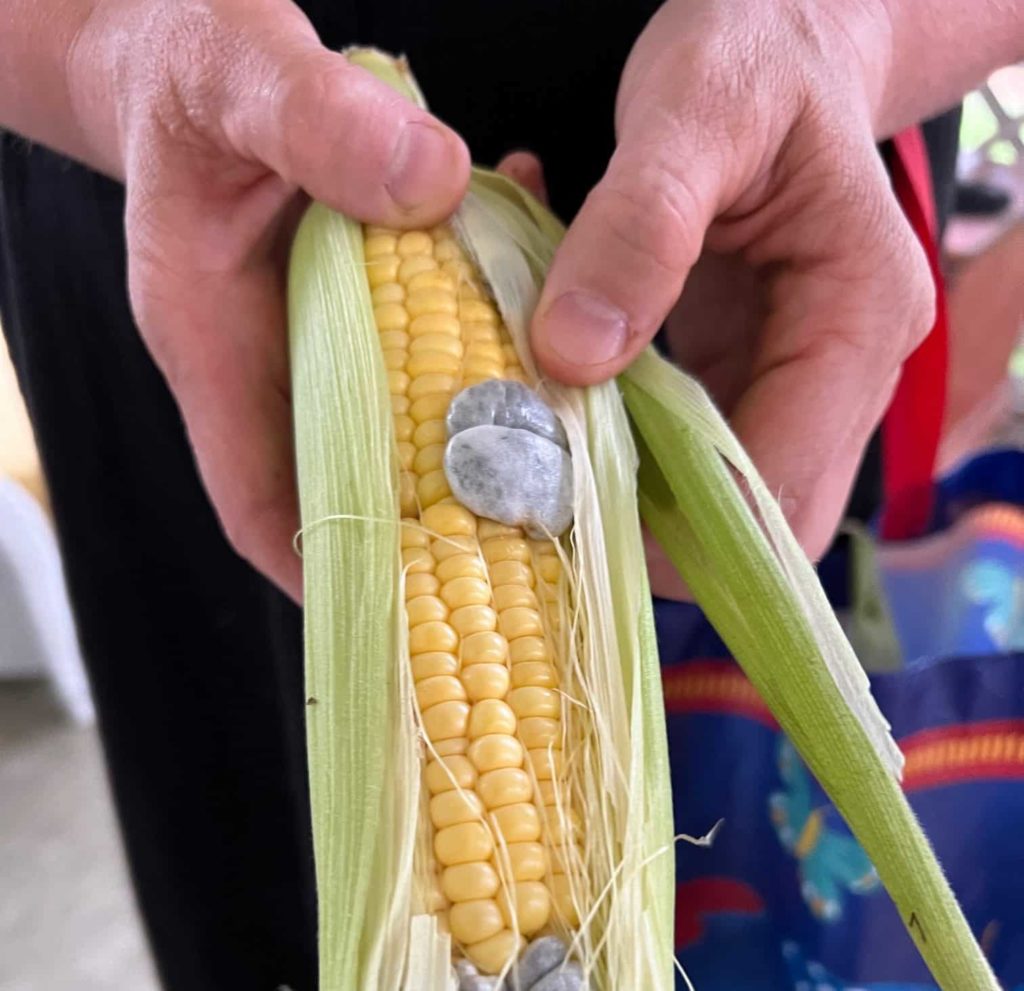
Corn smut.
Here’s a twist. If you find large black kernels in your sweet corn, it is a naturally occurring fungus called corn smut. Known in Mexico as huitlacoche, it’s a delicacy when young. By the time the corn is ready to harvest, the kernels are fully black inside and not good to eat. If you catch it younger, the corn kernels are their normal color, often veined with black. It’s a delicacy and very delicious. Tastes like a combo of corn and mushrooms. Corn smut is more common at the tip of the ear but we throw away those obvious ears. It’s harder for us to detect when under the husks, and therefore more likely to show up in your CSA box.
The rest of the ear is perfectly fine. Snap off and throw away the black kernels, then eat the ear of corn.

Looks like I will lose a chunk of garden. That’s the risk if you plant too close to the road.
Power outage
Our power was off Tuesday afternoon. That’s a huge problem because we need functioning coolers and plenty of wash water. Turns out that a crew installing underground fiber optic cable severed the main electric line for our road. What a sheepish-looking group of men standing by the side of the road. They freely admitted it was their mistake. And a dangerous one! The utility got the power back in a few hours and life went back to normal. Next step, they tear up the roadside in front of our house.


Believe it or not, Steve and I got away for a weekend. I rented a lake house halfway to St. Paul and our kids met us there. It was great! It’s amazing how restorative just a few days can be.
Thanks for reading. Have a great week!
Beth
Veggie List & Veggie Notes
Week #14, Aug 17 / 18, 2023
– Weekly shares
– BiWeekly/ green
– Sampler/ B group
Sweet corn, 9 ears
Red watermelon
Green beans, 3/4 lb
Slicing tomatoes, ~3 lb
Cherry tomatoes, 1 pint
Zucchini or yellow squash, 1 or 2
Cucumbers, 3
Silver Slicer cucumber, 1 or 2
Red bell peppers, 2
Yellow ‘Elsye’ onion
Jalapeno chile
Next week’s box will probably contain sweet corn, melon, tomatoes, peppers and more summer goodness. It’s that time of year!
Red watermelon – These compact beauties are ‘Mini Love’.
Zucchini or yellow squash – First harvest from a new patch!
Cucumbers – Folks, enjoy these cukes as their season will end soon. I have sent a lot of cucumbers recently, including this week. Our second planting is on richer soil and has cranked out so many fruit. It peaked in this week and last week but I think it’s going to crash soon.
Yellow onion – This variety is supposed to be mild, but we are finding that all the onions this year are pungent. These will fry better than the recent Walla Walla onions.
Storage: Room temperature or refrigerate.
RECIPES by PHOEBE
Sheet Pan Gnocchi with Tomatoes and Peppers
I’ve developed a few sheet pan gnocchi recipes for Love & Lemons this year, and I think they’re such a fun, easy way to make dinner! You don’t have to boil the gnocchi—just toss it with veggies, olive oil, and flavorful seasonings, and roast until it’s tender and the veggies are browned. The red pepper flakes add a spicy kick to this recipe. Use less (or omit them) if you’re sensitive to heat.
Prep time: 10 minutes
Cook time: 20 minutes
Serves 3 to 4
1 pound store-bought gnocchi, refrigerated or shelf-stable
1 large slicing tomato, cut into thin wedges
1 bell pepper, stemmed, seeded, and thinly sliced
½ small onion, thinly sliced
2 garlic cloves, thinly sliced
2 tablespoons extra-virgin olive oil
1 tablespoon red wine vinegar
1 teaspoon dried oregano
½ teaspoon sea salt
¼ teaspoon red pepper flakes, less if sensitive to spice
Freshly ground black pepper
4 ounces fresh mozzarella cheese, torn
Preheat the oven to 450°F and line a large baking sheet with parchment paper.
In a large bowl, combine the gnocchi, tomatoes, peppers, onion, garlic, olive oil, vinegar, oregano, salt, red pepper flakes, and several grinds of pepper. Toss until the gnocchi and vegetables are well coated in the seasonings.
Spread evenly on the prepared baking sheet. Roast for 17 to 22 minutes, or until the gnocchi is tender and the vegetables are browned.
Remove from the oven and scatter the cheese evenly on top. Season to taste and serve.

Photo by Jack Mathews and Jeanine Donofrio
Watermelon Gazpacho
From Love & Lemons
It looks like we have a warm week ahead of us, so I thought a gazpacho recipe was in order! This recipe is a great fit for this week’s box, using watermelon, tomatoes, cucumbers, peppers, and jalapeño. Here are a few tweaks to save you a trip to the store:
- Make sure to seed the watermelon!
- Replace the green onions with 1/8 white or Spanish onion. Add more to taste.
- Omit the basil if you don’t have any on hand.
Easy Corn Fritters
From A Couple Cooks
These corn fritters really are easy, made with basic ingredients that you likely have on hand. Replace the green onion with a couple tablespoons of minced white onion.
Cucumber Tomato Salad with Greek Dressing
From Cookie + Kate
This simple salad will pair nicely with almost any summer meal. Omit the fresh herbs if you don’t have any on hand—the tangy dressing packs this salad with plenty of flavor.
Almond Butter Tofu Stir Fry
From Minimalist Baker
Almond butter adds rich, nutty flavor to this simple weeknight stir fry. The recipe calls for green beans and small, spicy peppers (your jalapeño would work!), but for a milder version, you can toss in a bell pepper or two.
Zucchini Smoothie
From Love & Lemons
I thought it would be fun to feature some zucchini breakfast recipes this week. First up is this smoothie. Even though it’s made with a vegetable (and other good stuff like almond butter and dates), it tastes like a chocolate milkshake. A perfect breakfast for a hot summer day.
Zucchini Baked Oatmeal Cups
From The First Mess
The easiest way to take oatmeal on the go! These cute little oatmeal cups are vegan and gluten-free…and studded with chocolate chips, because who doesn’t like chocolate for breakfast?
Week #13; Seven weeks of corn
- On: August 09, 2023
 0
0
This week’s sweet corn is week #3 of seven plantings. If all goes according to plan, we will have seven straight weeks of corn for you. You told us you want steady corn (and lots of it!) so this is it. This is a very nice batch this week, of our favorite ‘Vision’ variety.
We have small sweet corn fields scattered around the farm. You can see staggered plantings in the photos. The top photo, taken July 15, shows a field with three sequential plantings, transplanted one week apart. The youngest are the wispy ones on the right. The bottom photo shows corn closer to maturity. The rows on the left should be ready to harvest in three weeks. The taller ones on the right should be ready in two weeks.
Salsa box!
We’re sending ingredients to make a batch of salsa this week, with tomatoes, onion, bell pepper, jalapeño chile, and cilantro. For adventurous salsa makers, corn kernels are great too.
Veggie List & Veggie Notes
Week #13, August 10/11, 2023
– Weekly shares
– BiWeekly/ purple
– Sampler/ A group
Sweet corn, 9 ears
Yellow Doll watermelon
Slicing tomatoes, 3 lb
Cherry tomatoes, 1 pint
Green beans, about 1 lb
Bell peppers, red or purple, 2
Silver Slicer cucumbers, a handful
Cucumbers, 2 or 3
White onion
Cilantro, 1 bunch
Jalapeno chile (HOT), 1
Next week’s box will probably contain sweet corn, melons, tomatoes, peppers, cucumbers, onion and more.
White onion – These are more pungent onions than the Walla Wallas that we’ve sent in recent weeks. We consider them intermediate between Wallas and yellow storage onions in both pungency and ability to be fried. In other words, these will fry better than Wallas but not as well as a yellow onion.
Storage: These can be stored at room temperature or refrigerated.
Cilantro (small bunch, fragrant leaves) – Used in both Mexican and some Asian cuisines. Good to season stir-fries, salad dressing, salsa, etc.
Storage: Cover and refrigerate.
Jalapeno chile – I suspect most of you are familiar with these small green chiles. Good flavor and medium heat.
Storage: Refrigerate.
RECIPES by PHOEBE
Phoebe is back and sharing recipe duties with Deb, who has been a trouper while Phoebe was away. I am lucky to have these two fabulous helpers!
Creamy Tahini Chicken Salad
A Mediterranean spin on chicken salad! A creamy tahini-yogurt dressing coats tender chicken breast, juicy tomatoes, crisp cucumber, and artichoke hearts. I love it on a sandwich, with crackers, or stuffed into pita bread.
Serves 2 to 4
Prep time: 30 min
Cook time: 20 min
¼ cup extra-virgin olive oil
3 tablespoons fresh lemon juice
½ teaspoon sea salt
Freshly ground black pepper
1 pound boneless, skinless chicken breast
1 slicing tomato (8 ounces), cut in a ½-inch dice
½ large cucumber (6 ounces), peeled if skin is thick, seeded, and cut in a ½-inch dice
4 canned artichoke hearts, drained and rinsed, cut in a ½-inch dice
¼ cup kalamata olives, pitted and torn
Pita bread, optional, for serving
Creamy Tahini Dressing
¼ cup tahini
¼ cup whole milk Greek yogurt
2 tablespoons fresh lemon juice
1 garlic clove, grated
½ teaspoon sea salt
3 tablespoons water, plus more as needed
At the bottom of an 8×8-inch baking pan or other shallow dish, whisk together the olive oil, lemon juice, salt, and pepper. Add the chicken and flip to coat in the marinade. Set aside at room temperature for 30 minutes or cover and refrigerate for up to 2 hours.
Preheat the oven to 450°F and line a baking sheet with foil or parchment paper. Transfer the chicken to the baking sheet and bake for 15 to 25 minutes, or until the internal temperature reads 165°F when pierced with an instant read thermometer in the thickest part of the breast. Remove from the oven and let rest for at least 5 minutes.
Meanwhile, make the dressing: In a small bowl, whisk together the tahini, yogurt, lemon juice, garlic, salt, and water. The dressing should have a creamy but pourable consistency. If it is too thick, add water, 1 tablespoon at a time, until it reaches your desired consistency.
Cut the cooked chicken breast into a ½-inch dice. Place it in a large bowl and add the tomato, cucumber, artichokes, and olives. Pour in the dressing and fold to coat. Season to taste with salt and pepper and serve immediately with pita bread, if desired.
Homemade Salsa
From Love & Lemons
If you’ve never made homemade salsa before, this is the week to try it! It’s easy to make in the food processor, and it has a fresher, brighter taste than typical jarred salsa. Great on your favorite Mexican dishes or with tortilla chips.
Elote
From Love & Lemons
One of the most delicious ways to eat grilled corn on the cob! Slather the ears with mayo and sprinkle them with Cotija cheese, chili powder, cilantro, and lime for a flavorful side dish or snack.
Charred Green Beans with Cilantro Vinaigrette
From A Beautiful Plate
Char this week’s green beans in a hot oven or on the grill. Then, toss them with a simple cilantro dressing for a zesty side dish!
Best Corn Salad
From Spoon Fork Bacon
If you’re looking for an out-of-the-box corn salad recipe, this one might be for you. It has a few unique elements:
1) Charred halloumi cheese offers a rich, salty contrast to the sweet corn kernels.
2) It has a brown butter dressing, which gives it nutty depth of flavor.
The recipe calls for chives, but you could sub in a little diced white onion for a similar savory kick.
Summer Crunch Salad
From Dishing Up The Dirt
This salad recipe was made for this week’s box! It features sweet corn, cucumbers, cherry tomatoes, and bell peppers, all tossed in a tangy vinegar dressing with some creamy goat cheese. Swap out the parsley for cilantro.
Castelvetrano Greek Pasta Salad
From What’s Gaby Cooking
This pasta salad recipe would be great for a simple dinner, packed lunch, or picnic. It’s filled with chewy pasta, briny olives, tangy feta, and lots of veggies—you’ll use some cucumber, cherry tomatoes, peppers, and onion from this week’s box.
Week #12; Abundance
- On: August 02, 2023
 0
0
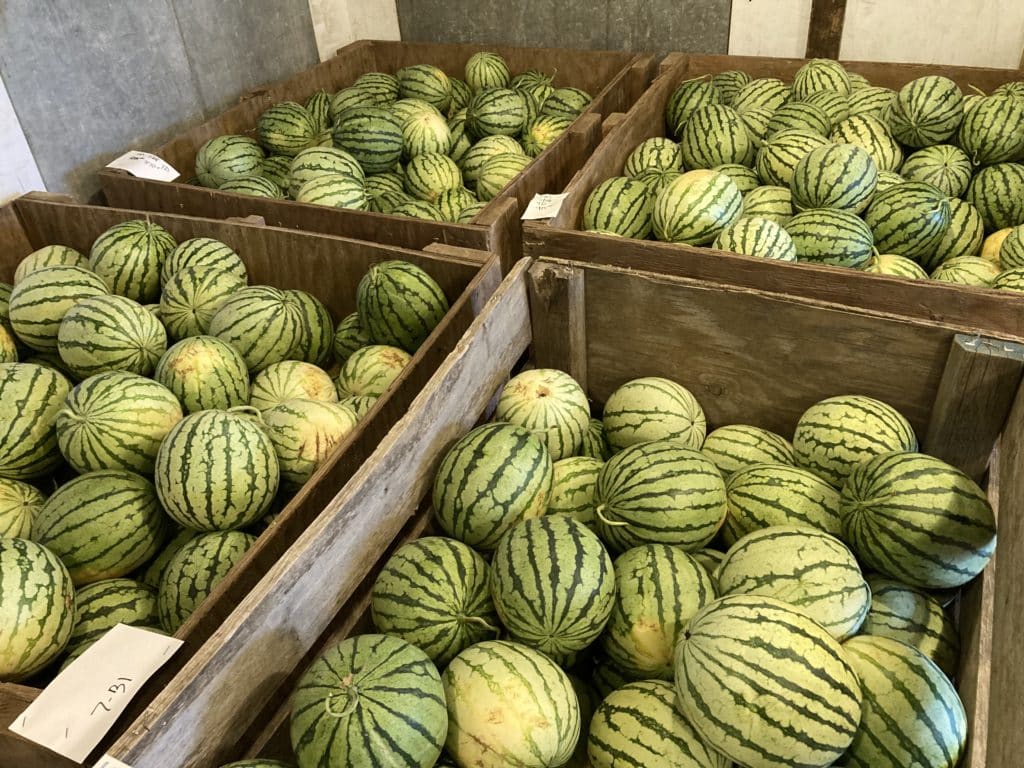
We are wealthy in watermelons.
Wow, the farm is incredibly productive right now. This is common in a drought year on a vegetable farm IF you have irrigation. Everything is growing strongly, probably because diseases are low during the dry weather. Insect populations can go either way in a drought but seem to be at normal levels right now. It was great to get rain over the weekend but it soaked in quickly and we are irrigating again already.
I’ll be honest. We’re pretty whipped by the extra work, so I don’t have much to share tonight except a beautiful evening sky over the barn and silo. The farm is absorbing all our attention and energy right now.
Take care,
Beth
Tomato Care
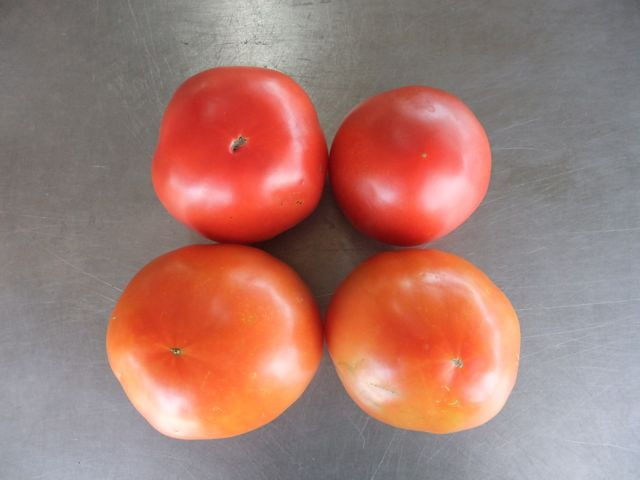
Ripe (top) and less ripe tomatoes (bottom).
We are heading into peak tomato season. Yeah! Ripe tomatoes are delicious but highly perishable so let’s talk about their care.
Ripeness: Each delivery, we pack a mix of ripe and less-ripe tomatoes so you can stretch them through the week. In the photo above, the top two tomatoes are ready to eat. The bottom two tomatoes can ripen at room temperature for a few days.
Storage: Tomatoes retain their best flavor and texture when stored at room temperature, no lower than 55 F. I encourage you to spread your tomatoes on plates so you can watch them. Eat the ripest ones first, or any showing flaws.
However, you should refrigerate your tomatoes if they are fully ripe and you don’t expect to eat them right away. It is better to sacrifice a little flavor and texture than to let your tomatoes spoil. Also, fully ripe tomatoes are less sensitive to chilling injury.
They might need washing: We handle the ripe tomatoes as little as possible to avoid bruising.
(Left) The yellow arrow shows small inconsequential flaws that will grow with time. Eat now!
(Right) The purple arrows show leaf residue bits stuck to the tomato. Wet the tomato and the residue will come right off.
Veggie List & Veggie Notes
Week #12, August 3/4, 2o23
– Weekly shares
– BiWeekly/ green
– Sampler/ D group
Sweet corn, 9 ears
Carrots, 2 lb
Slicing tomatoes, ~2.5 lb
Cherry tomatoes, 1 pint
Green beans, 0.8 lb
Cucumbers, ~2
Silver Slicer cucumbers, 2 or 3
Green bell pepper, 1 large
Zucchini &/or yellow squash, ~1 squash
Walla Walla onion
BY SITE: muskmelon OR Yellow Doll watermelon
Next week’s box will probably contain sweet corn, tomatoes, green beans, cucumbers, melons, onions and more.
Sweet corn – There are far fewer caterpillars than last week. This is good news. If you see browning at the tip, cut off the tip before shucking the corn.
Green beans – Storage: Store in the warmest part of your refrigerator.
Cucumbers – We’ve begun harvests from our second cucumber field. These are beautiful, beautiful cukes. You’ll notice less scarring now, which is typical as we move from an older to younger planting. We are sending both green slicing cukes plus a special variety called Silver Slicer. These smaller cucumbers are thin-skinned, like pickling cucumbers, and have delicious flavor. No need to peel these ones. For that matter, there’s no need to peel the green cucumbers either, unless you receive an unusually large one. We will distribute the green and Silver cucumbers by site over the coming weeks, as we harvest them.
Walla Walla onion – Please refrigerate your Walla Walla this week. They are not storage onions, and the recent hot weather is not good for them. Keeping them cold is your best option.
Muskmelons (some sites) – Refrigerate or let ripen at room temperature for up to two days, max.
Yellow Doll watermelon (some sites) – Watermelons can be refrigerated or stored at room temperature until they are cut. Once cut, they need to be refrigerated.
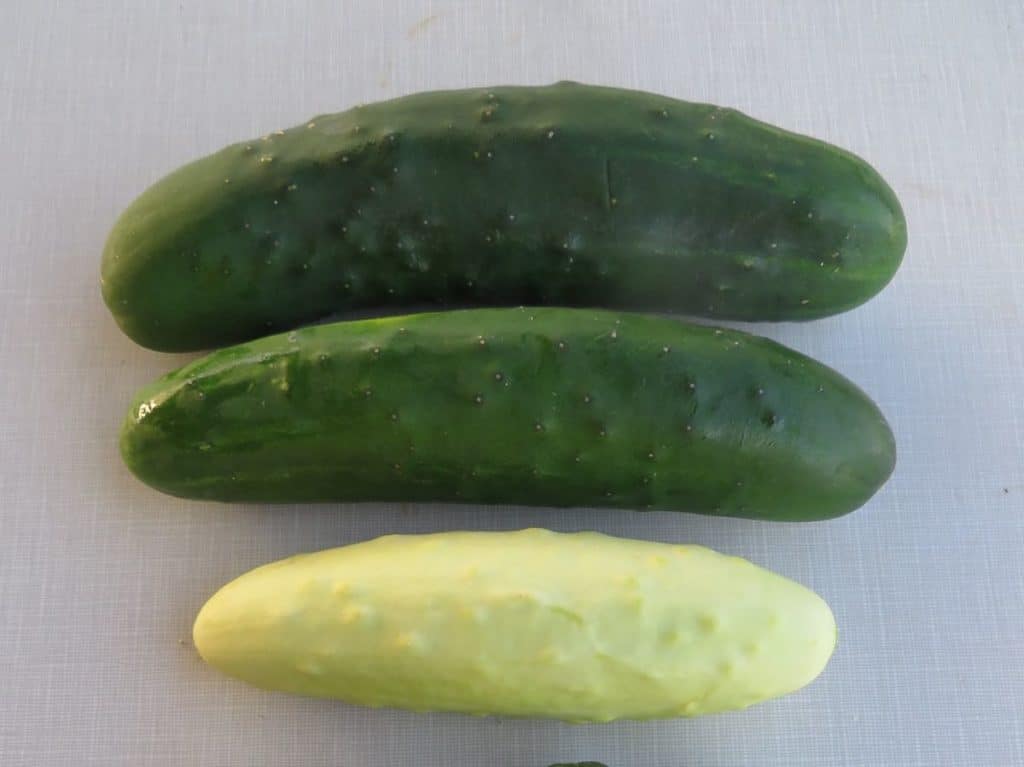
You’ll get a mix of slicing cucumbers (green) and Silver Slicer cukes (white) over the coming weeks.
RECIPES by DEB
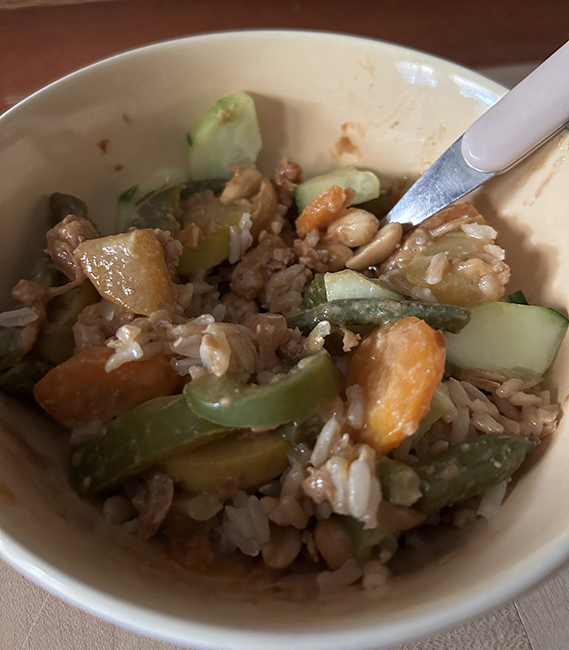
Photo by DebsLunch
Summer vegetable stir fry with peanut sauce
You can adapt this recipe using what you like and have on hand. You need about 8 ounces of protein, plus 4-6 cups chopped vegetables (not counting onions and garlic!) to serve four. I used ground turkey, but you can sub ground pork or chicken or tofu. My stir fry has green beans, carrots, yellow summer squash, and bell pepper, but again use what you have. The peanut sauce recipe makes about 2 cups and you’ll only need one so will have extra for another purpose. This is a plain & simple peanut sauce that you can jazz up by adding Siracha or other hot sauce, and is great as a dip with cucumbers or steamed broccoli, and on sauteed chicken, or to make cold noodle salad. You can also top your stir fry with marinated cucumbers – here’s a pic; method in the week 11 newsletter (in the headnote for the Spicy Peanut Noodles with Cucumber recipe).
Serves 4-5
Takes about 45 mins. to 1 hour
Peanut sauce:
1 cup peanut butter, natural smooth or crunchy or commercial will all work fine
3 tablespoons lime juice or rice or cider vinegar
2 tablespoons soy sauce or tamari
2 tablespoons toasted sesame oil
1 tablespoon brown sugar, maple syrup, or honey
approximately 1/2 cup coconut milk or hot water or a combination to thin
Stir fry:
1 cup white or brown rice
kosher salt
1 tablespoon vegetable oil
8 ounces ground turkey or pork, or firm tofu, crumbled
2-4 cloves garlic, minced or put through a press
1 tablespoon fresh ginger, peeled and grated
salt and pepper to taste
1 cup sliced onion
2 medium carrots, thinly sliced on the diagonal
1 to 1 1/2 cups green beans, trimmed and cut into 2 inch pieces – measure after cutting
1 medium yellow squash or zucchini, quartered lengthwise and cut into chunks
1 green or red bell pepper, thinly sliced
1 cup of the peanut sauce
1 tablespoon Siracha or other Asian hot sauce, optional
Optional toppings: salted roasted peanuts, more hot sauce, cucumbers tossed with a little rice vinegar and salt, as discussed last week under Spicy Peanut Noodles with Cucumber.
- If using brown rice, start cooking that first. Start white rice after you make the peanut sauce. Combine the rice and two cups water in a sauce pan with a lid. Bring to a boil, uncovered, add a pinch or two of kosher salt, then cover and turn the heat way down. Check after about 45 minutes to see if the water is absorbed and there are steam holes through the rice indicating it’s done.
- Make the peanut sauce: Combine all the ingredients except the coconut milk or hot water in blender or a bowl, and either blend or whisk to combine. Add coconut milk and/or hot water until you get a good pourable consistency.
- Cook the stir fry: Pour the oil into a deep wide skillet with a lid and heat over medium. Add the turkey or other meat, or tofu crumbles, and cook stirring, and if using meat, breaking it up with a wooden spoon, until starting to brown, about 5 minutes. Add the garlic and ginger and salt and pepper, and stir until fragrant. Add the onions. At this point add the veggies in order of the length of time they take to cook, and cover the pan for a few minutes to steam the veggies a bit – add a few tablespoons of water if things start sticking. In this version, start with the carrots, then green beans, and finally squash and bell pepper. Total cooking time will be about 15 minutes.
- When all the veggies are cooked to your liking, add the peanut sauce and Siracha. Mix to coat everything with the sauce and once it’s bubbling, cook for a few minutes uncovered to meld. Taste to see if it needs more salt, peanut sauce, or Siracha, and serve over rice with optional toppings.
.
.

Photo by DebsLunch
Corn and green bean salad with cherry tomatoes and nuts
You can cook the corn for this salad using any method you like: steaming, as Beth suggests (Veggie Notes/ Sweet corn), boiling, or even roasting, on the grill or in the oven (see this link for oven roasting in the husks) or on the stove in a grill pan. You’ll need about 4 ears of corn, so if you cook up a bunch of corn to eat on the cob, you can use the leftovers!
Dressing:
1 large clove garlic, minced or put through a press
2 tablespoons white wine or cider vinegar
1 teaspoon brown sugar, plus more to taste
2 teaspoons grainy or Dijon mustard
1/4 cup olive oil or vegetable oil
salt and freshly ground pepper to taste
Salad:
3-4 cups corn kernels, cut from about 4 ears of corn
2/3 to one pound green beans, cooked and cut into 2 inch lengths
3/4 cup toasted nuts, coarsely chopped – I used whole almonds but walnuts or pecans would also be good
9-10 cherry tomatoes cut in half
- Make the dressing: Combine the garlic, vinegar, sugar, and mustard in a small bowl or spouted glass measuring cup. Whisk in the oil until emulsified. Season with salt & pepper. Alternatively, combine everything in a jar with a tight fitting lid and shake to combine.
- Add the corn and green beans to a large mixing bowl, and toss with most of the dressing. Add the nuts and cherry tomatoes, toss again, and taste to see if it need more dressing or seasoning. This salad is good right away, but can also be chilled overnight – bring to room temperature and add the nuts right before serving.
Corn Salsa Recipe | The Girl Who Ate Everything
From The Girl who Ate Everything
This corn salsa recipe also provides a few more suggestions for how to cook your corn. I suggest saving the cobs for veggie stock; see this 2020 Tipi newsletter for tips on corn cob stock, under ‘Sweet Corn Risotto with Corn Cob Broth & Cherry Tomatoes’. Feel free to omit cilantro, and sub Walla Walla onion for the purple onion – place the chopped onion in a strainer and rinse with cold water if it seems strong, then drain and add to salsa. You can also omit the jalapeño or use jarred or canned chiles, or a few dashes of red pepper flakes if you don’t have fresh.
.
.
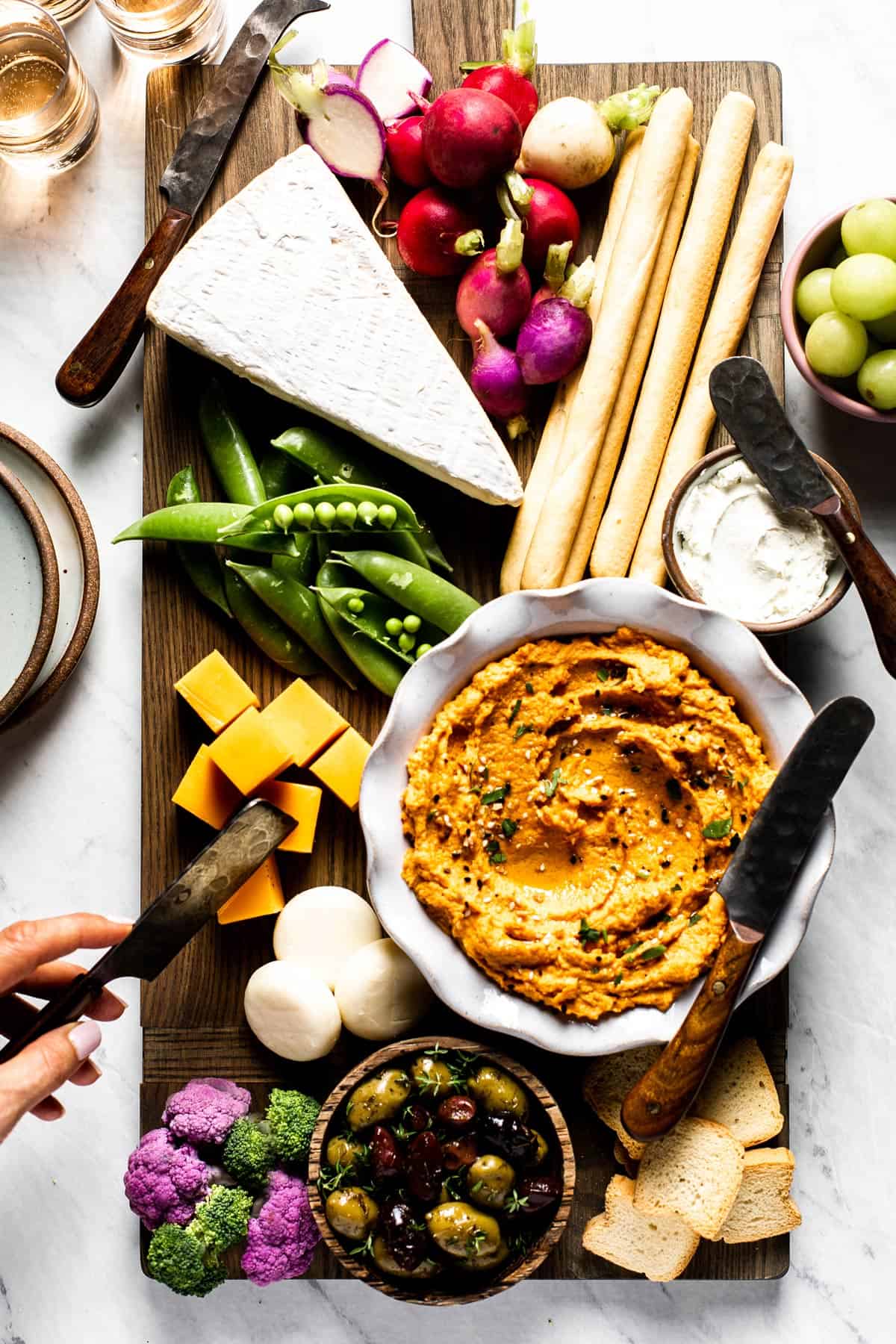
Roasted Carrot Hummus | Foolproof Living
From Foolproof Living
There are plenty of versions of dips with roasted carrots out there; this hummus from Foolproof Living is gluten free (if served with gluten free dippers) and vegan – and will surely appeal to any hummus lovers.
.
.
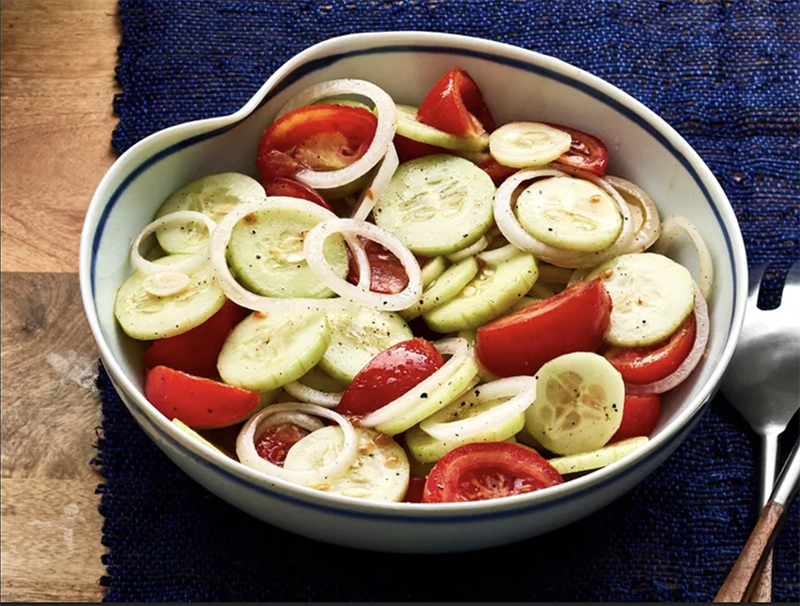
Photo by DOTDASH Meredith Food Studios
Marinated Cucumber, Onion, and Tomato Salad | Allrecipes.com
Recipe by BogeyBill from Allrecipes.com
This marinated salad only takes a few minutes of chopping, and because it’s marinated, it’s actually better made ahead.
.
.
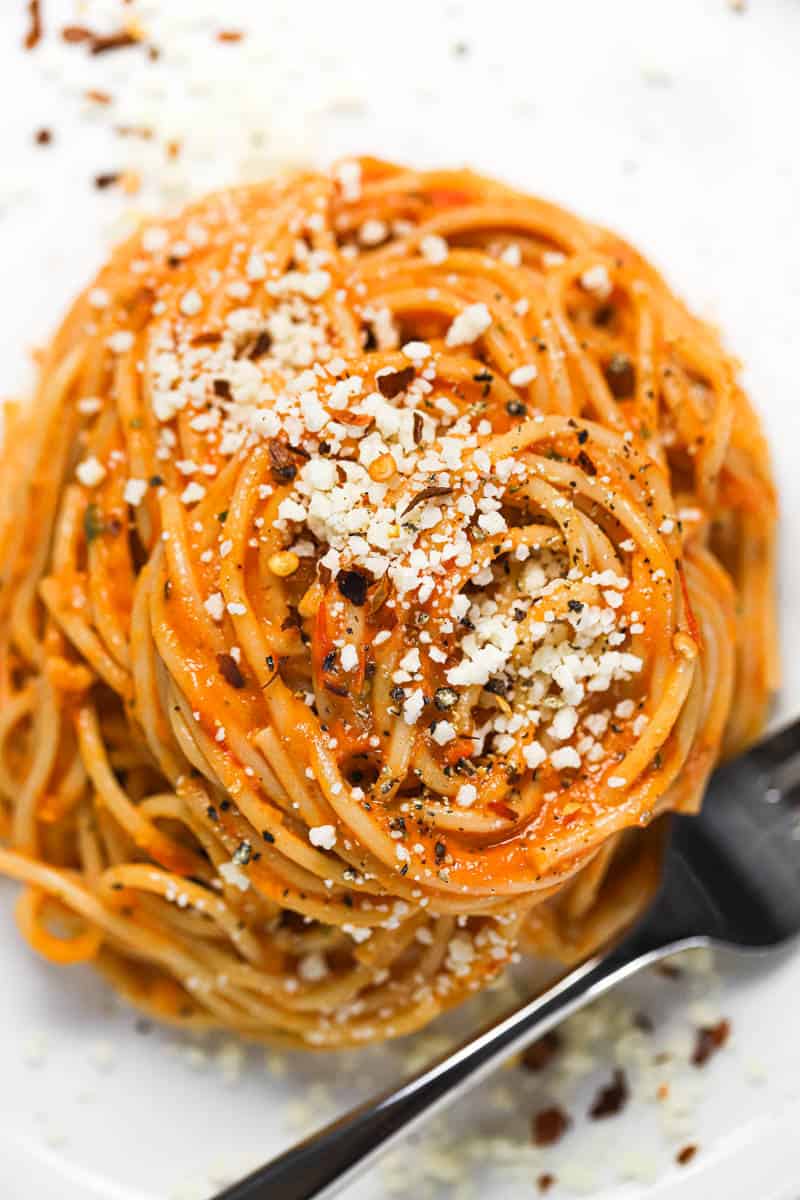
Roasted Tomato Cream Sauce | Midwest Foodie
From Midwest Foodie
As this recipe says, you can use whatever kind of tomatoes you have for this sauce – the roasting process concentrates even the juicier slicers. It calls for 3 pounds of tomatoes, which is about what we got this week, but it makes 5 cups of sauce, and that’s more than you need for a pound of pasta. So, if you don’t want to devote all of this week’s tomatoes to sauce, you could halve it and still have enough for a pasta dinner. You can simply omit the fresh basil if you don’t have any, or substitute dried.
.
.
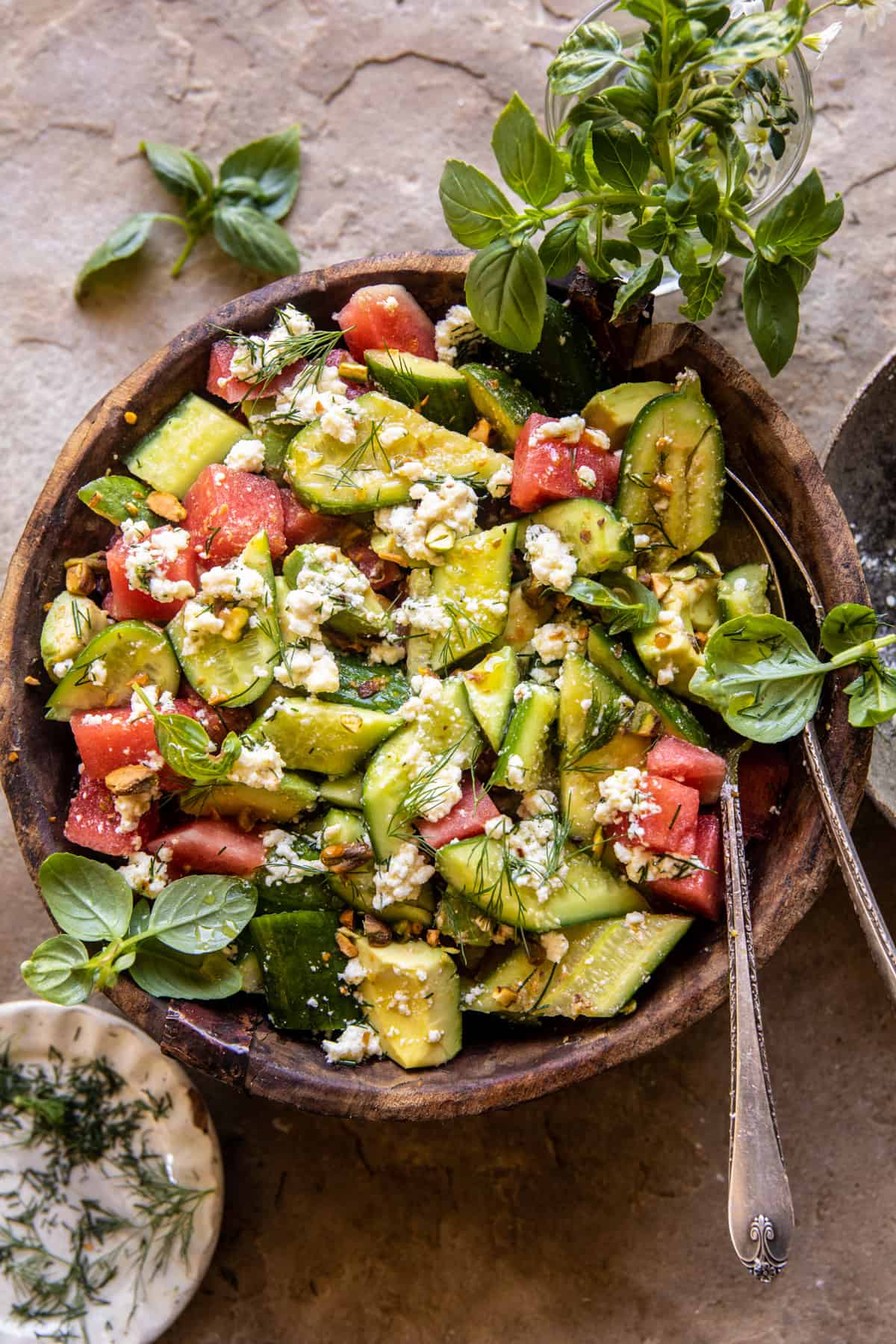
Photo by Tieghan Gerard
Smashed Cucumber and Watermelon Feta Salad | Half Baked Harvest
From Half Baked Harvest
This recipe from Half Baked Harvest combines the watermelon & feta salad that’s been popular for years, with the smashed cucumber technique that’s we’ve been hearing about much more recently. Muskmelon can sub for watermelon if that’s what you get in your box – or try this cantaloupe and feta salad, with fresh mint. The salad will taste good without the fresh herbs, or you can sub small amounts of dried – about half a teaspoon of dill or basil. Like all Half Baked Harvest recipes it calls for avocado, which you can omit. Persian cucumbers are small and seedless, and a combination of 2-3 of our silver slicer and regular cucumbers will work fine here, and you can seed the green cucumbers if you wish.
Week #11; Sweet corn begins.
- On: July 26, 2023
 0
0
Our garlic crop is harvested and safely drying. It was a sweaty, grimy harvest but very, very satisfying. It does not matter how many showers I take; I will smell of garlic for days. We were glad to get rain last night and doubly glad that the garlic was safe before it started.
Once the bulbs are dry enough, we’ll start packing them in the boxes.
Beth
Veggie List & Veggie Notes
Week #11
July 27/28, 2023 (Th/Fri sites)
– Weekly shares
– BiWeekly/ purple
– Sampler/ C group
Sweet corn, 7 ears
Muskmelon
Broccoli, ~2 lb
Cherry tomatoes, 1 pint
Slicing tomatoes, a few
Carrots, 2 lb
Globe eggplant, 1
Zucchini &/or yellow squash, ~2.5 lb
Cucumbers, 2 or 3
Walla Walla onion
Next week’s box will probably contain melons, tomatoes, carrots and more.
Sweet corn – Now it’s summer!
Advice about bugs. This is organic sweet corn. Many ears have caterpillars or bug damage at the tip. I suggest cutting off the tips before shucking the corn. Sweep the trimmed tips into the compost and you will never see the bugs. Going forward, not every harvest (nor every ear) will have the caterpillars. They come and go as the moths fly in from the south. I’ll give you an update here in the newsletter each week.
Storage. Sweet corn is best when fresh, so we encourage you to eat it asap. Store in the refrigerator, in the husks if you have the room, or husked and placed in a container or plastic bag.
Cooking. It is quicker to steam sweet corn than to boil it.
1.) Stand ears of corn upright in a tall pot. Put one inch of water in the pot.
2.) Bring the water to a boil. If the corn is cold when you begin cooking, steam for 5 – 6 minutes. If the corn starts at room temperature, steam for 4 – 5 minutes. The cooking time will vary somewhat depending on how many ears are in the pot. Pay attention to how the corn smells. The scent changes once the corn is ready. Another clue: water will bead on the corn until it is cooked. Don’t overcook it.
Muskmelon – Most are ripe and ready to eat. Some need to ripen a day or two on your kitchen counter. Refrigerate within 2 days.
Broccoli – Some of the broccoli is loose because of the warm weather but it all tastes great. Refrigerate.
Carrots – Refrigerate in the bag.
Tomatoes – Store your slicing tomatoes at room temperature. It’s only a few so you’ll eat them quickly. Cherry tomatoes can be refrigerated.
Eggplant – For best flavor, store eggplants at room temperature for 2 – 3 days. If holding for longer than three days, store in the warmest part of your refrigerator. Eggplants do not store well for long periods of time.
RECIPES by DEB
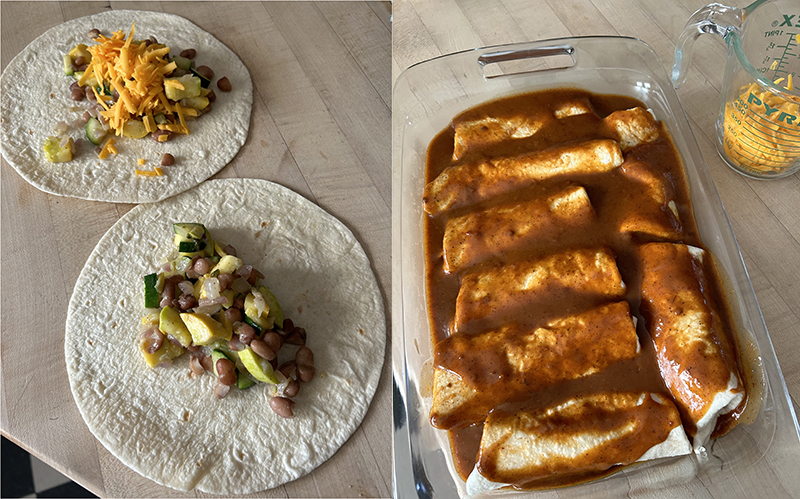
Photo by debslunch
Zucchini & Pinto Bean Enchiladas
This recipe for enchiladas and homemade enchilada sauce is very versatile! You can keep it strictly vegetarian or add meat, or do a vegan version using vegan cheese. Here I’ve used zucchini and pinto beans, but you could sub in corn or summer squash, and use purchased enchilada sauce if you don’t have time to make the sauce. Both the sauce and the enchiladas freeze really well, and if you want to add meat, I suggest 1/2 pound of ground beef, pork, turkey, or bulk chorizo. Brown the meat with the onions and then add any other vegetables you wish to use.
Serves 6-8
Takes about an hour and 15 minutes including baking
For the sauce:
2 tablespoons vegetable oil
1/4 cup flour
2 cups vegetable or chicken broth, preferably home made OR one 14.5 oz. can of broth plus enough water to make 2 cups (about 2-3 tablespoons)
1 1/2 tablespoons chili powder (You can control the heat of the sauce by using mild or hot chili powder. I often use part chili powder and part ground Ancho chile. Penzey’s is a good source.)
Optional, if you like heat: 1 chile from a can of chipotle chiles in Adobo sauce, finely chopped, plus a few spoons of the sauce
1-3 tablespoons of tomato paste
1 tablespoon brown sugar
salt and black pepper to taste
For the filling:
1 tablespoon vegetable or olive oil
3/4 to 1 pound of zucchini or summer squash or a mixture, cut into bite-size chunks
1 cup of pinto beans or corn
3/4 to 1 cup finely chopped onions
salt and black pepper to taste
For assembly:
8-10 flour tortillas
1/2 pound cheddar cheese, shredded
- Make the sauce: measure the oil and flour into a sauce pan and whisk to combine. Heat the broth in the microwave – a spouted glass measuring cup works well for this – and pour it into the pan while whisking until smooth and thickened. Add the chili powder, Adobo chile and sauce, tomato paste, and brown sugar and whisk until smooth. Simmer the sauce for about 10 minutes. Season with salt and pepper.
- Make the filling: Heat the oil over medium heat in a skillet. Add the onion and cook, stirring, until the onion is translucent. Add the zucchini and cook until it is just tender, about 5-10 minutes. Remove from the heat, season with salt and pepper, and stir in the beans (or corn if using).
- Assemble the enchiladas: Heat the oven to 375°. Microwave the tortillas briefly (45 seconds to a minute, depending on your microwave) to make them flexible. Pour a thin layer of sauce into the bottom of a 13 x 9 baking dish. Fill each tortilla with 1/3 cup of filling, top with about 2 tablespoons of grated cheese (reserving about 1/4 cup of cheese for topping), tuck the sides in, and roll neatly. Place the enchiladas in the baking dish as they’re rolled.
- Pour the rest of the sauce over the enchiladas. Place the baking dish in the oven and cook for about 20 minutes until bubbling. Top with the reserved grated cheese and return to the oven for about 5 minutes to melt the cheese. Serve the enchiladas with sour cream, chips, and salsa of your choice.
Roasted Eggplant Spread Recipe | Ina Garten
From Ina Garten, Barefoot Contessa Family Style
This quick and easy spread from Ina Garten, the doyenne of upscale comfort food, can be served as an appetizer or as the centerpiece of a light summer meal if accompanied by some protein. It also makes a tasty omelette filling. If you don’t have red bell peppers to roast along with the eggplant, you can use jarred roasted red peppers – just add them to the food processor with the other vegetables – no roasting required!
Since we have two pounds of broccoli this week, I’m including two cheesy main dishes that both feature broccoli.
Broccoli, Cheddar and Wild Rice Casserole | smitten kitchen
From smitten kitchen
With this recipe, Deb at smitten kitchen “saves” a traditional Midwestern hotdish, typically made with canned cream soup and frozen broccoli. Deb says as a child she envied friends who ate things like this regularly, since they were never served in her home, and when she decided to research and develop the recipe she was warned by other foodies it would be awful. Her recipe definitely meets the challenge!
.
.

Photo by Diana Chistruga
Easy One-Pan Broccoli Macaroni and Cheese
From The Spruce Eats
I chose this stove top mac & cheese since I think it has the best macaroni to broccoli ratio: 8 oz. noodles to 12 oz. broccoli. It calls for frozen broccoli, but you can use fresh by simply adding the chopped broccoli to the macaroni cooking water when the pasta has about 5 minutes to go rather than the one minute suggested for the frozen.
.
.
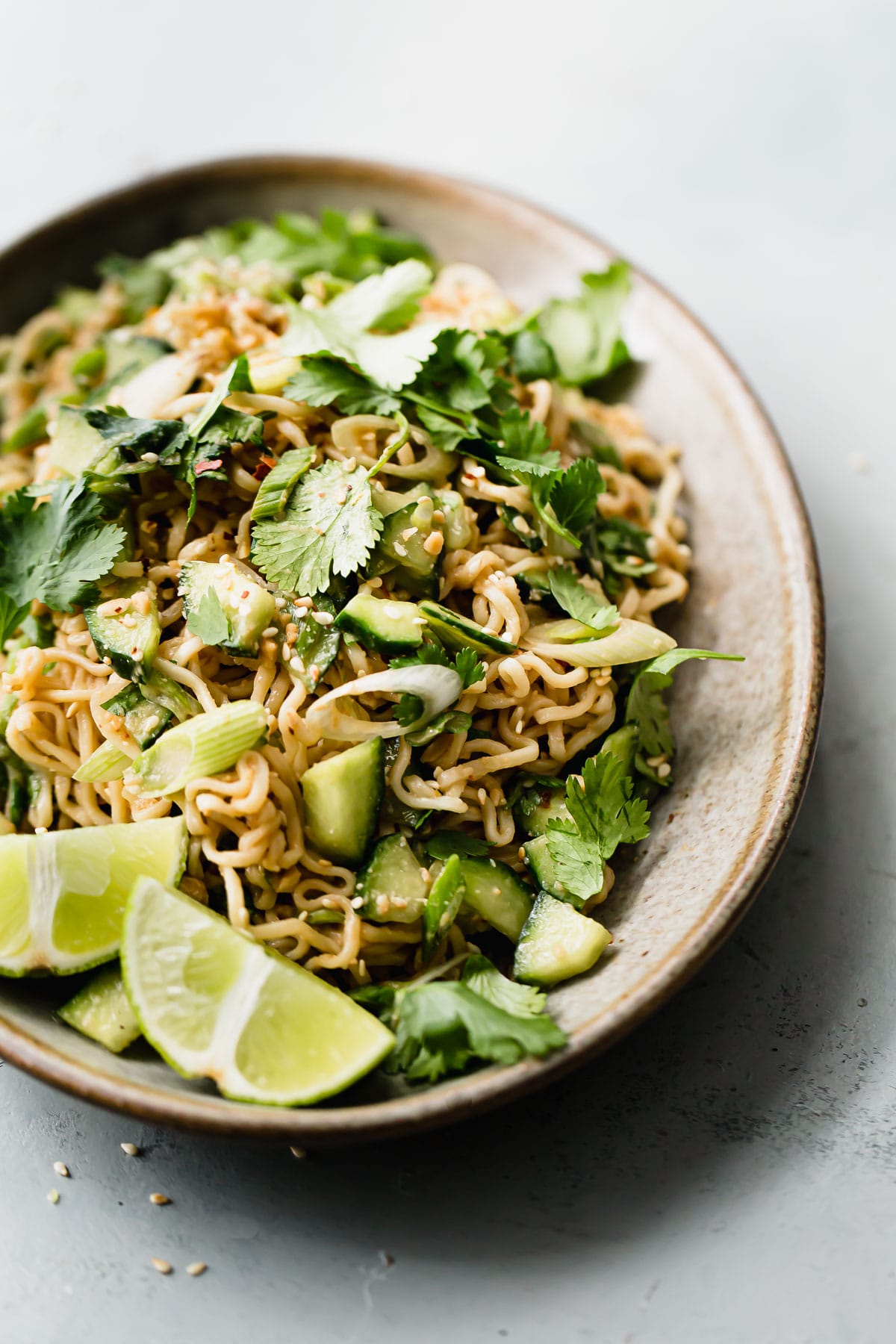
Photo by Laura Davidson
Spicy Peanut Noodles with Cucumber | A Beautiful Plate
From A Beautiful Plate
One inspiration for any one running out of cucumber ideas is to use the cucumbers in or as a topping for one of the spicy noodle salads that’re so good in the summer, or a stir fry. This recipe is an example of cucumbers in; looking back on some past Tipi recipes, you could try lightly marinated cucumbers in place of the asparagus on top of this tofu dish from Week 3, or this stir fry from October of 2021. To marinate the cucumbers, slice and place them in a bowl. Drizzle with a few tablespoons of rice vinegar, a pinch or two of salt, and optionally a little sugar. Leave them to marinate while you prepare the rest of the dish and then top individual servings with the cucumbers. I also found, but did not test, this recipe for cucumber noodles, where the cucumber is “zoodle-ized” to be the noodle. It strikes me that it would be tasty the first day and then potentially get kind of watery. If anyone tries it, how about posting to the Facebook group and let everyone know how it turned out! The recipe calls for seedless cucumbers – one way to adapt for seeded cucumbers is to cut your cucumbers into thin planks with a Y-shaped peeler then julienne the slices with a knife leaving out the seedy middles. And of course, if you have more zucchini than cucumbers, you could make this salad with actual zoodles.
.
.
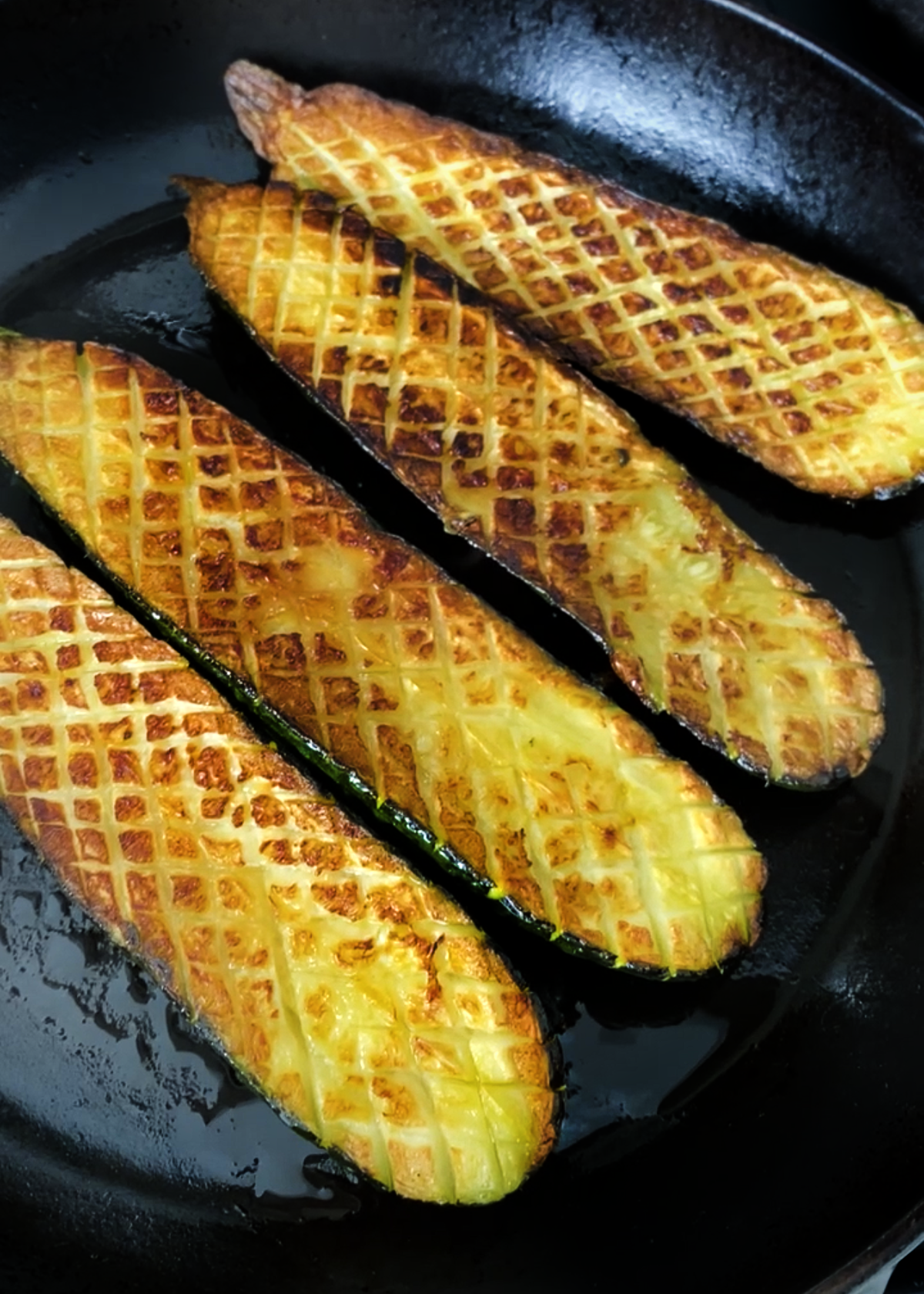
Roasted Zucchini, Thomas Keller’s Viral “Life-Changing” Method | The Delicious Life
From The Delicious Life
This recipe is all over the Internet this summer, and there are lots of videos illustrating how to prepare it if you like that kind of thing. Chef Thomas Keller’s method is to cut the zucchini in half, score it in a crosshatch pattern, and then salt and drain it, before pan frying it to brown the cut sides and finally roasting until tender. This free, non-video version of the recipe mentions the topping that’s in Keller’s original, a sauce vierge but doesn’t provide the recipe. Sauce vierge is simply chopped fresh tomatoes tossed with a little olive oil, vinegar or lemon juice, and whatever herbs you have. If you don’t eat all of our cherry tomatoes on the way home from box pickup, you could chop them up to top your zucchini!
.
.

Photo by Goydenko Liudmila / Getty Images
Flavored Butter Recipes | The Spruce Eats
From The Spruce Eats
Since this is the first time we’re getting corn, everyone’s most likely to eat it on the cob. Here’s a top ten list of flavored butters you might want to try to jazz up your corn. Numbers 1-5 are savory butters that pair well with corn, but I think some of the sweet ones would work too, like #7, Cranberry Butter.
Week #10; Let me help you with eggplant.
- On: July 19, 2023
 0
0
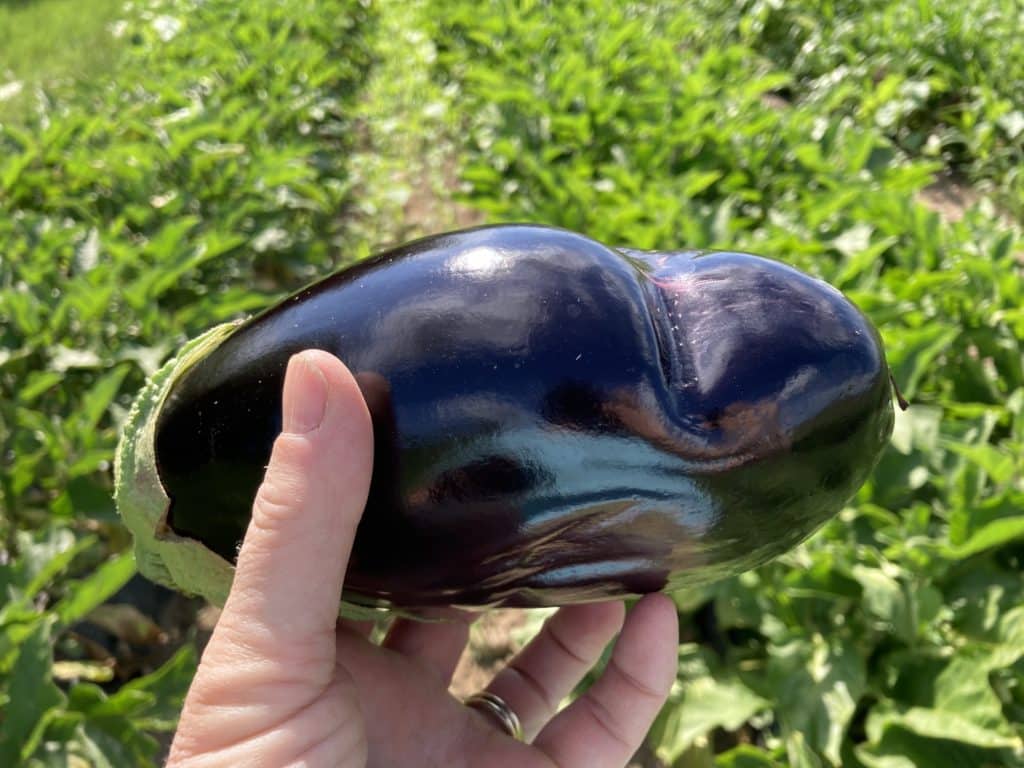
Don’t worry about funky eggplant shapes. They were shaped by growing quickly among the plant’s branches.
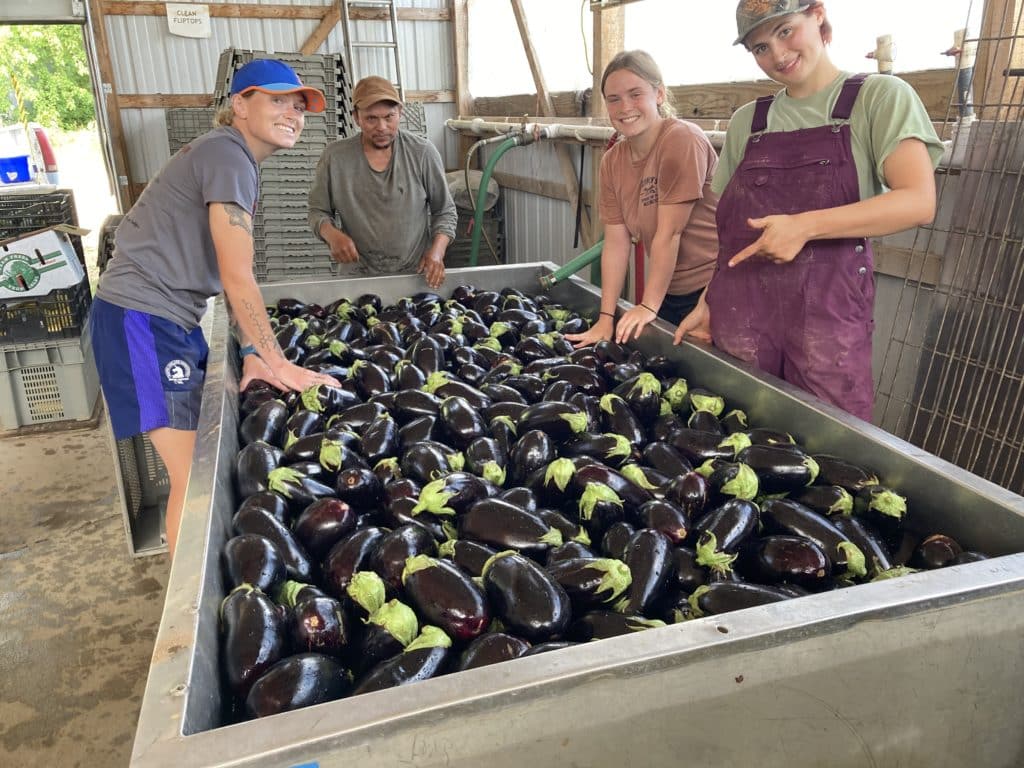
Team Eggplant brings in the harvest. The plants are very healthy, which makes a fun harvest. From left, Aly, Raul, Katie and Mary Ann.
If you are intimidated by eggplant, I can help
Storage
For best flavor, store eggplants at room temperature for 2 – 3 days. If holding for longer than three days, store in the warmest part of your refrigerator. Eggplants do not store well for long periods of time.
Hints for easy preparation.
Eggplant does not have to be time-consuming to prepare. Here are a few suggestions.
– Many recipes instruct you to salt and drain eggplant “to remove bitter flavors.” You do not need to salt this eggplant. We are sending you fresh eggplant and it will not be bitter.
– Try microwaving your eggplant, to speed preparation and reduce the amount of oil used. Microwaving is quick and eliminates the need to peel the eggplant; the skin ends up soft and edible. Unlike pan-frying, you need little oil when cooking in the microwave. The “Microwave Eggplant with Scallion-Chile Crisp Oil” recipe below uses this technique. The recipe is quick and absolutely delicious.
Eggplants are versatile. Here are other ideas:
– Roast in the oven or over coals to cook and smoke your eggplant, then transform into baba ganouj with lemon, tahini, salt and garlic.
– Cut in 1/2 to 3/4 inch slices, peel, and rub with a little salad dressing (I use Newman’s balsamic dressing), then grill slowly until soft and smoky. At this point, you can cut into cubes to make eggplant caponata with chopped tomatoes, onion, garlic, olives, capers, olive oil and red wine vinegar.
– Use the grilled cubes in casseroles or to top pizza.
– Add thin, grilled eggplant slices to grilled cheese sandwiches. Use hearty bread – this doesn’t work well with soft sandwich bread.
How to prep fresh garlic
Steve was baffled about how to prep last week’s fresh garlic. He muttered something about needing power tools, which I felt was overly dramatic. But perhaps some of you resorted to power tools last week, and I should show you the simple way to peel your fresh garlic. The only tricks are to peel (not cut) the outer layers, and to crush each clove to release it from its wrapper.
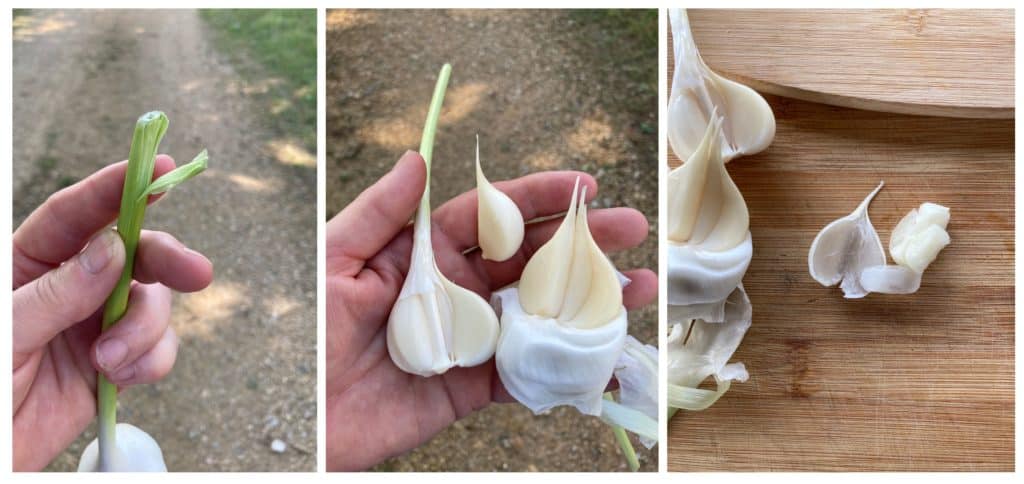
From left; Peel down the outer layers, one or two layers at a time. When the cloves are freed from the outer wrapper leaves, break them loose from the base. Crush each clove between two cutting boards to free it from its clove wrapper.
Veggie List & Veggie Notes
Week #10
July 20/21, 2023 (Th/Fri sites)
– Weekly shares
– BiWeekly/ green
– Sampler/ B group
Green cabbage
Broccoli, about 2 medium heads
Globe eggplant, 1
Green leaf lettuce
Green bell pepper, 1
Zucchini &/or yellow squash, ~2.5 lb
Cucumbers, 3
Walla Walla onion
Basil, 1 stalk
Fresh garlic
By site: Muskmelon OR cherry tomatoes. I will distribute melons and cherry tomatoes to each pickup site over the coming weeks, to be sure we reach all sites. Please don’t open boxes at your site looking for variety – all boxes at each site are identical.
Next week’s box will probably contain sweet corn, melon, broccoli, zucchini and more.
Broccoli – Our second planting has done very nicely, much better than usual, considering the weather.
Storage: Refrigerate.
Cabbage – You will receive either Caraflex (pointy) or Farao (round). Both are intended as salad/slaw cabbages but can be lightly cooked too.
Storage: Refrigerate.
Muskmelons (some sites) – These are ripe and ready to eat. Refrigerate.
RECIPES by BETH
Deb is busy with family so I am on recipe duty. Let’s share a few of our favorite dishes and strategies.
Make a pot of rice
It’s not a joke! It’s a cooking strategy. We’re busy, you’re busy. For us, strategy #1 is to cook a big pot of brown rice once per week. Sometimes I’ll come down in the morning and find Steve cooking rice at 6:00am, while he’s still in the house for an hour. Then we prep dishes to accompany the rice through the next days.
.
.
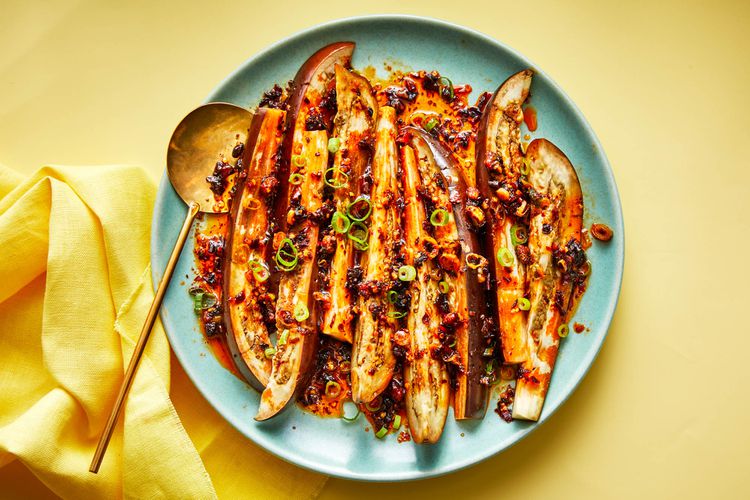
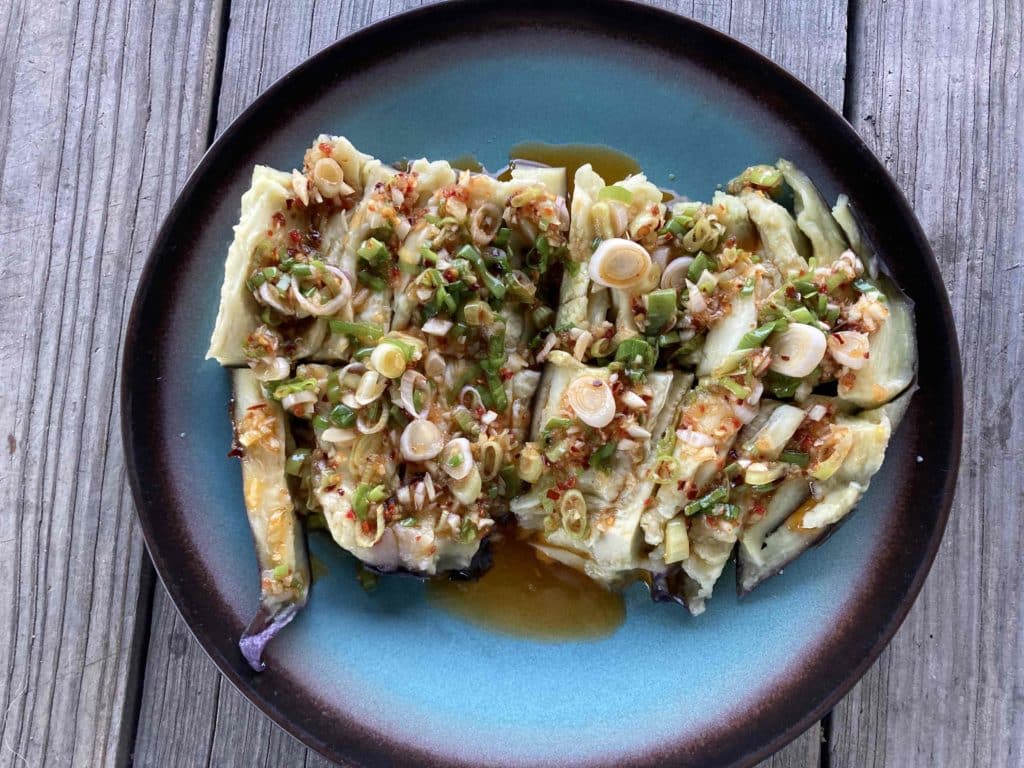
Top: From Food & Wine, Photo by Antonis Achilleos, Prop styling by Christina Daley, Food styling by Ali Ramee.
Bottom: My cooked dish. It was delicious.
Microwave Eggplant with Scallion-Chile Crisp Oil
By Andrea Nguyen, in Food & Wine:
“This microwave eggplant recipe from Andrea Nguyen requires none of the usual fuss of salting and straining the nightshade beforehand. Cooking a whole eggplant in the microwave effortlessly, evenly, and quickly cooks its flesh to soft, silky tenderness while preserving its antioxidant-rich skin. Cut into thick slices and drizzled with generous spoonfuls of flavorful sauce, microwave eggplant is an easy and delicious side dish that comes together in 20 minutes flat.”
Here is a great, flavorful recipe that uses your microwave for eggplant prep. I’ll bet that some of you still have a few scallions in your fridge. Otherwise, sliced Walla Walla should make a good substitute. I followed the cooking times in the recipe for my 1 lb eggplant, adding the suggested extra 60 seconds, and the eggplant was beautiful: plush, with edible skin. Give the recipe a try – I think you’ll like it.
.
.
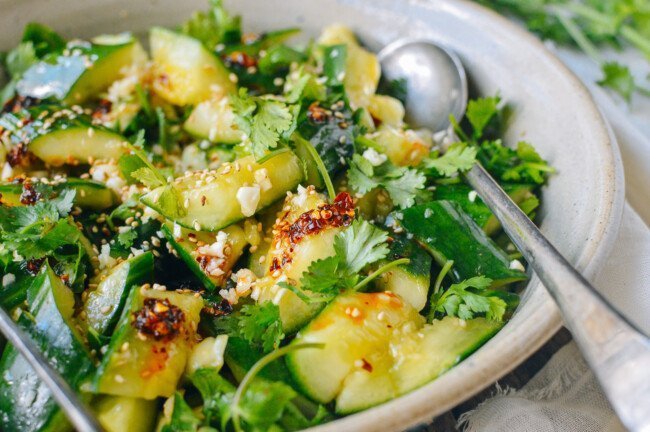
Photo by The Woks of Life
Smashed Asian Cucumber Salad
From The Woks of Life
We rotate among a variety of cucumber salads while they are in season. This smashed salad is Ari’s favorite. The rough surfaces hold the dressing well. We use a recipe from the New York Times (Chinese Smashed Cucumbers With Sesame Oil and Garlic) but that recipe is behind a paywall and this one from Woks of Life is virtually identical. We skip the cilantro and use Korean pepper flakes instead of chili oil.
Cucumber salad is surprisingly good with rice, especially if you add cooked salmon or tofu. It’s reminiscent of nori rolls. You can always sprinkle toasted nori sheets on top.
.
.
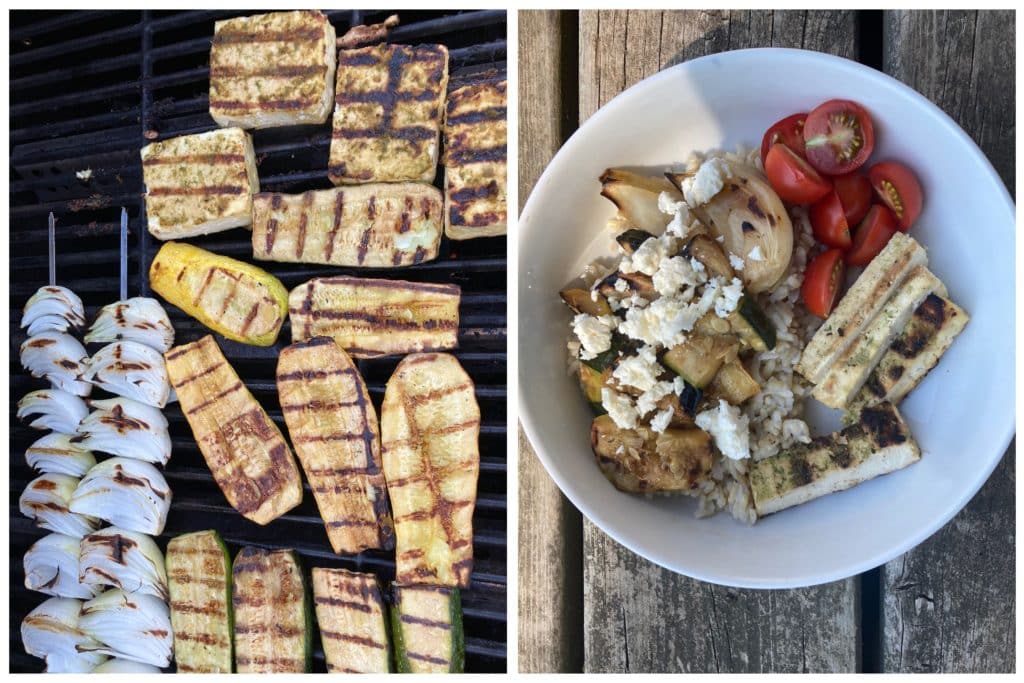
Grilled vegetables
I often grill a batch of marinated vegetables and tofu at the beginning of the week, without a clear plan how we’ll use them. They always get eaten, whether with rice or pasta, or as a side dish. In this week’s box, zucchini, Walla Walla onions and eggplant are all suitable for grilling.
Zucchini or Zephyr squash – Slice about 1/3 inch thick. Douse in a simple marinade. We use a mix of rice vinegar, sesame oil and soy sauce. Bottled salad dressing works great too. If your marinade does not have oil, spray or brush lightly with oil. Grill over low heat until tender, turning once. Slice into ribbons and mix with the marinade again.
Walla Walla onion – Slice into chunks and thread onto skewers. Grill over low heat until tender and nicely charred. Flip at least once.
Eggplant – Cut in 1/2 to 3/4 inch slices, peel, and rub with a little salad dressing (I use Newman’s balsamic dressing), then grill slowly until soft and smoky.
.
.
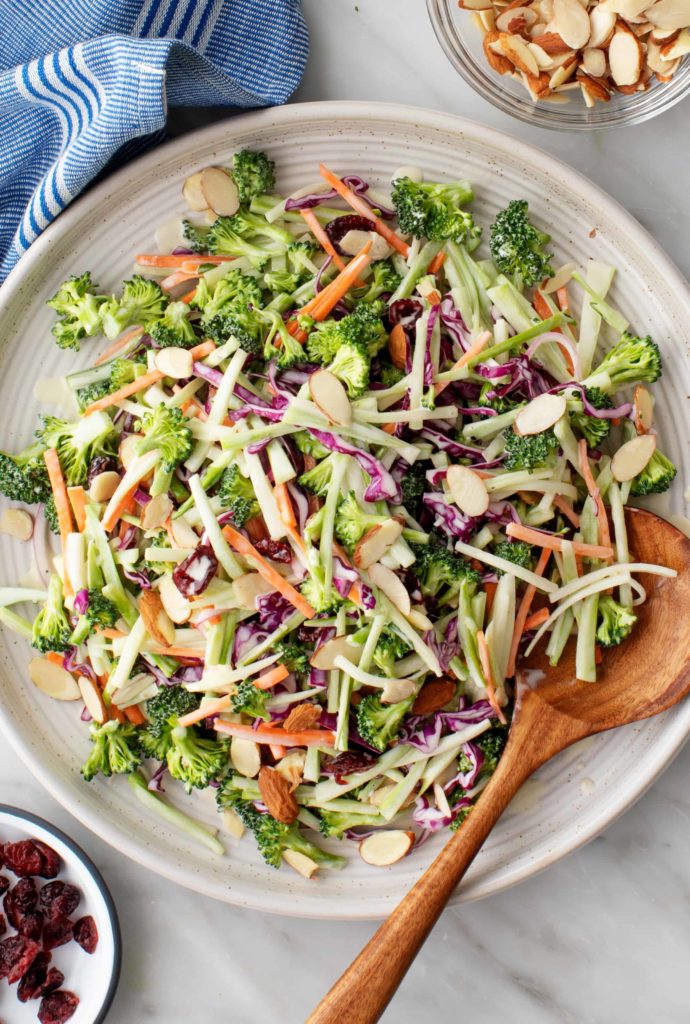
Photo by Love & Lemons
Broccoli Slaw
From Love & Lemons
The dressing for this mixed broccoli and cabbage slaw is traditional but nicely balanced, with mayo, cider vinegar, dijon mustard, and maple syrup.
Week #9; A bit of rain; Purple + A
- On: July 12, 2023
 0
0


Irrigation by day, irrigation by night.
We got 0.9 inch of rain today. That is the largest rain since mid-May. After nine long weeks, the farm is very dry and that 0.9 inch will disappear quickly. We won’t irrigate tonight and will watch the weather forecast for the next few days. Perhaps we will get some more.
Refrigerator Pickles
Let’s talk quick pickles, since we are sending four cucumbers this week. Here is the recipe that I use. (Deb gave us a different refrigerator pickle recipe two weeks ago, plus new ideas below.) I usually prepare and store extra brine so I am ready to pickle another batch or other vegetables. I make simple pickles (cucumbers, dill, garlic) but you can dress them up with other aromatics.
Brine (enough for 2.5 to 3 packed quart jars)
4 cups water
1 cup vinegar
3 Tbsp pickling salt
Combine and stir to dissolve.
Pickles, 1 quart
Washed cucumbers, cut into spears
1 small or 1/2 large dill umbel
1 garlic clove, crushed
Pack a clean one-quart jar with the cucumber spears, garlic and dill. Fill with brine to the top, seal with a lid and put in the fridge. Ready to eat the next day and really good on the second day.
After eating your pickles, you can re-use the brine by adding fresh cucumber spears. You will not need to add more garlic or dill. After the second batch, I throw away the brine.
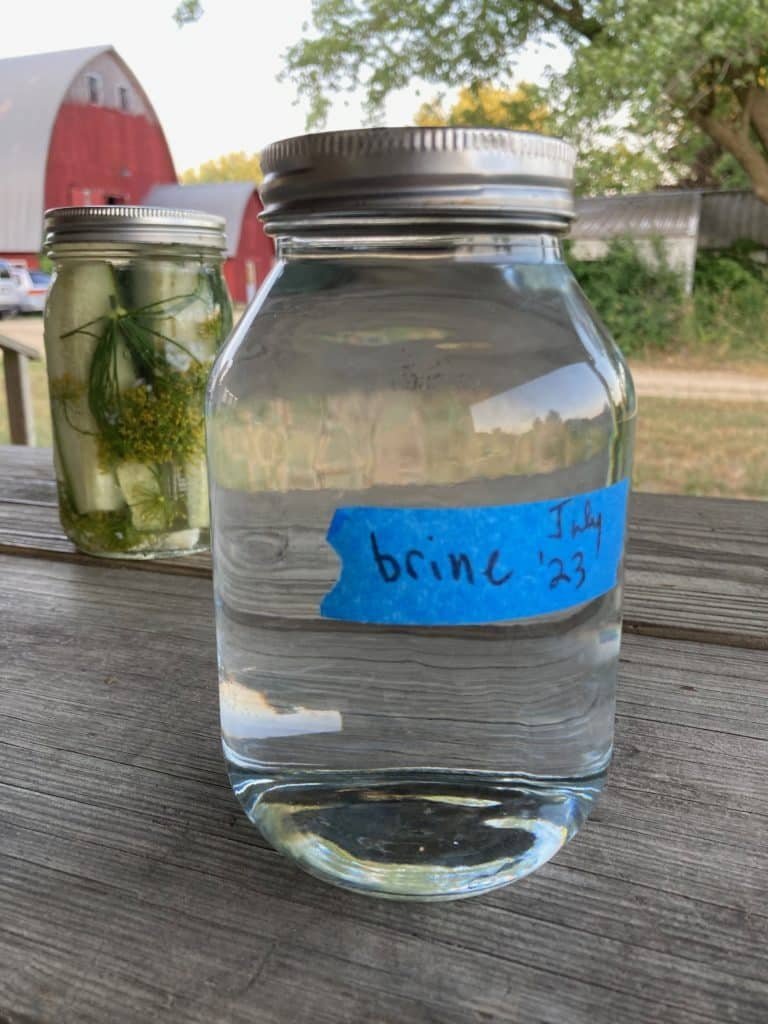
Extra brine ready for the next batch of pickled cucumbers, red peppers, etc.
Veggie List & Veggie Notes
Week #9
July 13/14, 2023 (Th/Fri sites)
– Weekly shares
– BiWeekly/ purple
– Sampler/ A group
Beets, ~2 lb
Broccoli, 1 – 2 medium heads
Collards, 1 bunch
Green bell pepper
Walla Walla onion
Zucchini &/or yellow squash
Cucumbers, 4
Fresh garlic, 1 bulb
Basil, 1 bunch
Dill, 1 umbel
Next week’s box will probably contain cabbage, Walla Walla onion, zucchini, cucumbers, fresh garlic and more.
Beets – Storage: Cover and refrigerate. Beet roots store quite well when refrigerated. Wash well to remove leaf fragments. For all the cooking methods below, wash and scrub the beets but do not peel. The skins slip off readily once the beets are cooked and cooled.
Cooking beet roots on the stovetop: Slice or quarter, cover with water in a pot, and simmer until tender. This will take from 25 to 45 minutes depending on how large the beet pieces are. Drain.
Roasting beets in oven: Wash beets, but do not peel. On a sheet of aluminum foil, put beets (halved or quartered if large), salt, pepper and a few sprinklings of water. Seal the foil packet, and roast at 400 oF until tender, about 45 minutes to 1 hour. Slip off skins once cool.
Microwave: Slice beets in half and place in a large microwave-proof bowl. Add ¾ inch water and cover with a plate. Microwave on high until tender, about 9-20 minutes, depending on your microwave’s power. Drain and slip off skins.
Uses: Use cooked beets in cold salads, or dress simply with vinaigrette, onions, salt and pepper. Beets are also good tossed with sour cream, minced onion, fresh herbs and walnuts.
Broccoli – Storage: cover and refrigerate. Broccoli is sensitive to warm temperatures so do your best to keep it cold. If your broccoli seems wilted, soak in cold water for fifteen minutes and it will plump back up.
Collards – Collards grow nicely and keep their quality in summer, when other greens are not at their best. Handle collards like kale. They are interchangeable in recipes.
Storage: Refrigerate.
Green bell pepper – Refrigerate.
Walla Walla onion – This batch of Walla Walla onions is a bit different. As usual, the are sweet and crisp but more pungent than we usually see. They remain less pungent that yellow storage onions. Wallas are sonderful raw or lightly cooked. Try cutting into wedges, threading on a skewer and grilling. Do not try to fry these onions – it doesn’t work because of their high water content.
U: It’s OK to store at room temperature for up to one week. Otherwise, refrigerate.
Fresh garlic – These plump bulbs are the Korean Red variety. Fresh garlic is special; crunchy, juicy and incredibly pungent. We pull these bulbs a week or so before we begin the big garlic harvest. The outer papers on the bulb and individual cloves are still succulent, not dried. After you separate a clove from the bulb, try lightly crushing the clove between two cutting boards to release it from its wrapper.
Storage: I suggest that you refrigerate this bulb of garlic, so it remains easy to peel. The garlic is fine if you leave it at room temperature but the cloves will become difficult to peel as the bulb dries.
Basil – Store at room temperature, in a glass of water. This week’s harvest is bunched, smaller stems. See last week’s newsletter for detailed storage instructions.
Dill – I am sending one umbel so you can make refrigerator pickles. What you receive could be either a flower head or young seeds. Either is great for pickles. These are large umbels, big enough for two jars. Slice in half down the stem with a paring knife.
Storage: Trim the stem ends and store in a glass of water at room temperature. I encourage you to store your dill and basil in separate glasses.
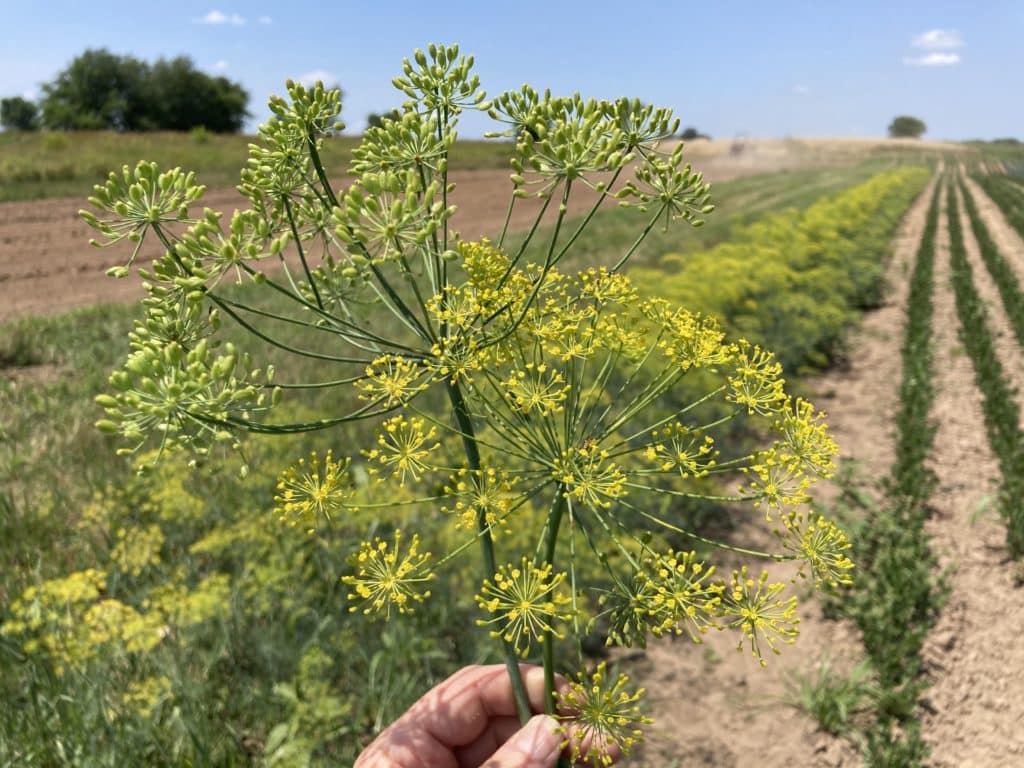 Everyone gets one dill umbel. Could be a head of young seeds (left) or flowers (right).
Everyone gets one dill umbel. Could be a head of young seeds (left) or flowers (right).
RECIPES by DEB
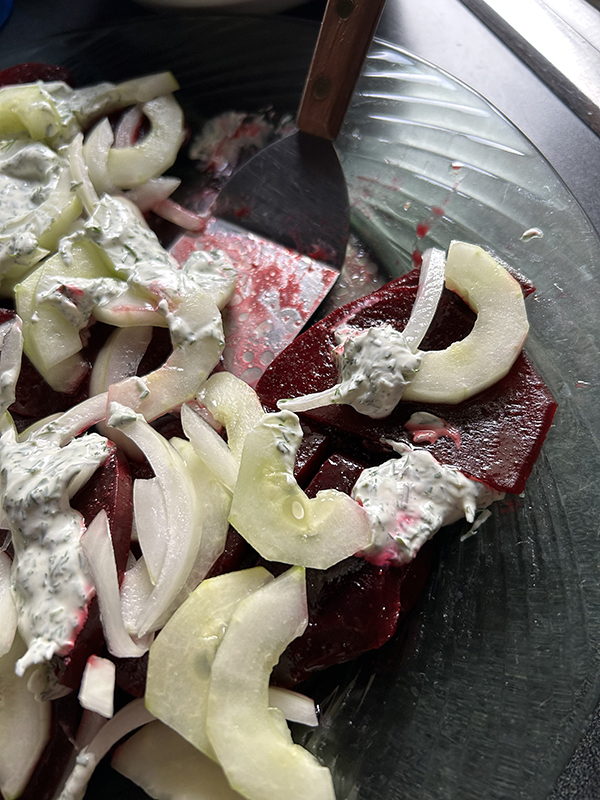
Beet and Cucumber Salad
Photo by debslunch
With a hat tip to Julia Turshen, here’s a summer-y salad with cooked beets and lightly pickled cucumbers. I used fresh dill since that’s what I had, but the basil in this week’s box would also be tasty. The dressing can be made with plain yogurt – whole milk or Greek style works best, or sour cream, or crème fraîche, the last of which can be purchased, but you can make it yourself by whisking equal amounts of heavy cream and sour cream together. This works best with cream that is not ultra-pasteurized – a local brand is Sassy Cow. Leave to sit at room temperature overnight or until thickened then refrigerate where it will keep for 4-5 days.
Serves 4-6.
Takes about 30 mins. active time, plus 40 minutes or so to cook the beets
1 pound beets
1 large cucumber
1/2 cup Walla Walla onion slices
1 teaspoon sugar
2 tablespoons white wine, cider, or rice vinegar
pinch of kosher salt
2 tablespoons olive oil
salt and freshly ground black pepper to taste
1/3 cup plain Greek or whole milk yogurt, sour cream, or crème fraîche
2 tablespoons finely chopped fresh herbs, such as basil, dill, or parsley
- Preheat the oven to 350° if roasting the beets. Trim and scrub the beets. If roasting, place them in a baking dish that holds them fairly snugly – preferably glass; it’s easier to clean! – and cover tightly with foil. Place in the oven and roast until fork tender. Cooking time will vary based on the age and size of the beets, so start checking after 30 mins. If you want to cook the beets on the stove, place the cleaned beets in a large pot, and add cold water to cover. Remove the beets, and bring the pot of water to a boil on the stove. When it’s boiling add salt and the beets, and adjust the heat to keep them a quiet simmer. Same as roasting, start checking for tenderness after about 30 mins.
- Peel the cucumber if you like, and seed it by cutting it in half lengthwise and scooping out the seeds with a spoon. Slice fairly thinly. Place the cucumber slices and the onion slices in a bowl, and add the sugar and pinch of kosher salt. Pour the vinegar over, toss, and set aside to marinate.
- When the beets are tender, remove from the oven and drain and cool just until they can be handled. Skin the beets – some people do this by rubbing the skins off with paper towel. I like to do it under cool running water, which also reduces the cooling time. If the skin sticks in spots just peel that off with a small knife. Slice the beets, place in a mixing bowl, and toss with the olive oil and salt and pepper to taste.
- Arrange the beets on a serving platter or individual plates. Remove the cucumbers and onions from the vinegar with a slotted spoon or your hands and place on top of the beets. Blob the dressing on top and serve right away. The salad still tastes good the next day but all the components will be dyed beet color.
Bryant Terry’s Jerk Tofu Wrapped in Collard Leaves | Penguin Random House Canada
From Penguin Random House Canada
This recipe was created by chef and activist Bryant Terry, and is the cover image of Terry’s 2020 book, Vegetable Kingdom. Bryant Terry specializes in vegan versions of Black American foods. You’ll find other online versions of the recipe, such as at Epicurious, but might run into a pay wall there. The recipe produces an impressive, knife & fork vegan entree and there’re a lot of steps to make all the components, but you can marinate the tofu in bottled barbecue sauce in place of making the jerk marinade, and I have omitted the cilantro sauce and it’s still tasty. I believe Chef Terry uses arrowroot instead of cornstarch because cornstarch is a product of industrial agriculture, but I have also subbed more readily available cornstarch for the arrowroot with success.
.
.
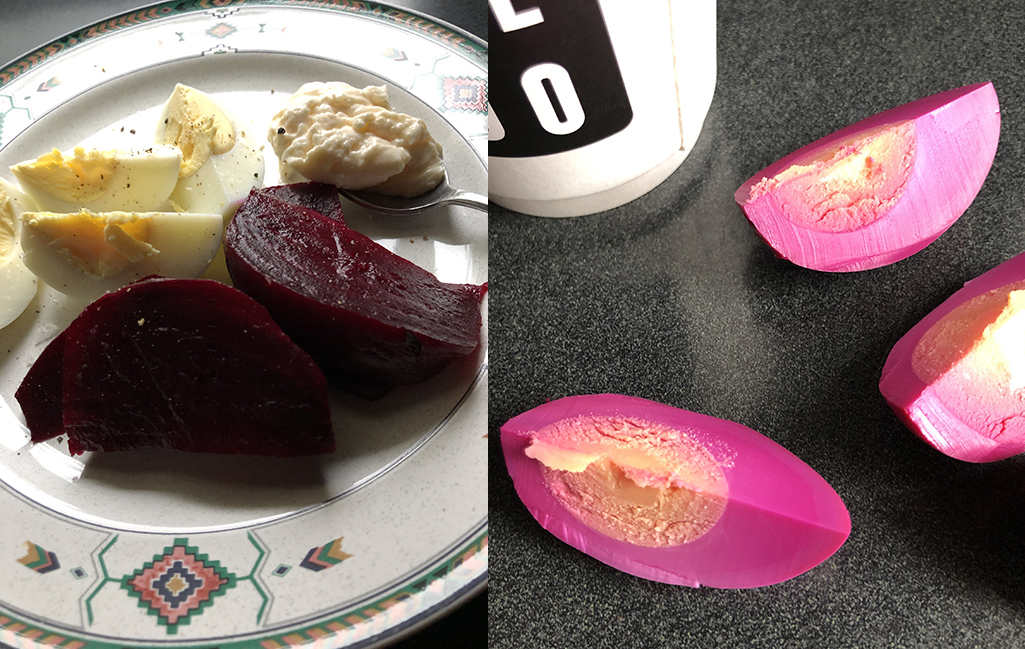
Photo by debslunch
I think my favorite way to eat beets is pickled, preferably with eggs and a dab of mayo. This isn’t really a recipe; more of a formula. I like to roast the beets (see instructions in the salad above) but you can also boil the beets if you don’t want to turn on your oven on a hot day. In the picture, the eggs on the right were in the beet juice for about 5 days.
Pickled Beets & Eggs
1 pound of beets
1 1/2 cups cider vinegar
1/2 cup or more water
1/3 cup sugar
2 teaspoons salt or more to taste
About a teaspoon whole spices such as allspice, cloves, or 1-inch piece of cinnamon stick; some people like a clove or two or garlic as well
4 warm hard-boiled eggs
Boil or roast your beets, peel them, slice them, and place in a container or bowl with a lid that’s large enough to hold the brine and the eggs. Add the whole spices. Combine the vinegar, water, sugar, and salt in a pot or glass measuring pitcher, then either heat on the stove or microwave the glass pitcher long enough to melt the sugar. Pour over the beets. Hard boil the eggs – there are a zillion methods but this is mine: place cold eggs in a pot and add cold water to cover. Place over high heat and bring to a boil, and soon as the sides of the pot have a few bubbles, set a timer for 13 minutes. Lower the heat as necessary to keep the eggs at a nice boil, but not boiling over. When the timer goes off, remove the eggs from the heat and flood the pot with cold water in the sink. Peel the eggs and add to the beets and brine, adding more hot water or vinegar if needed to cover. Place the container in the fridge and allow to pickle at least overnight before serving.
.
.
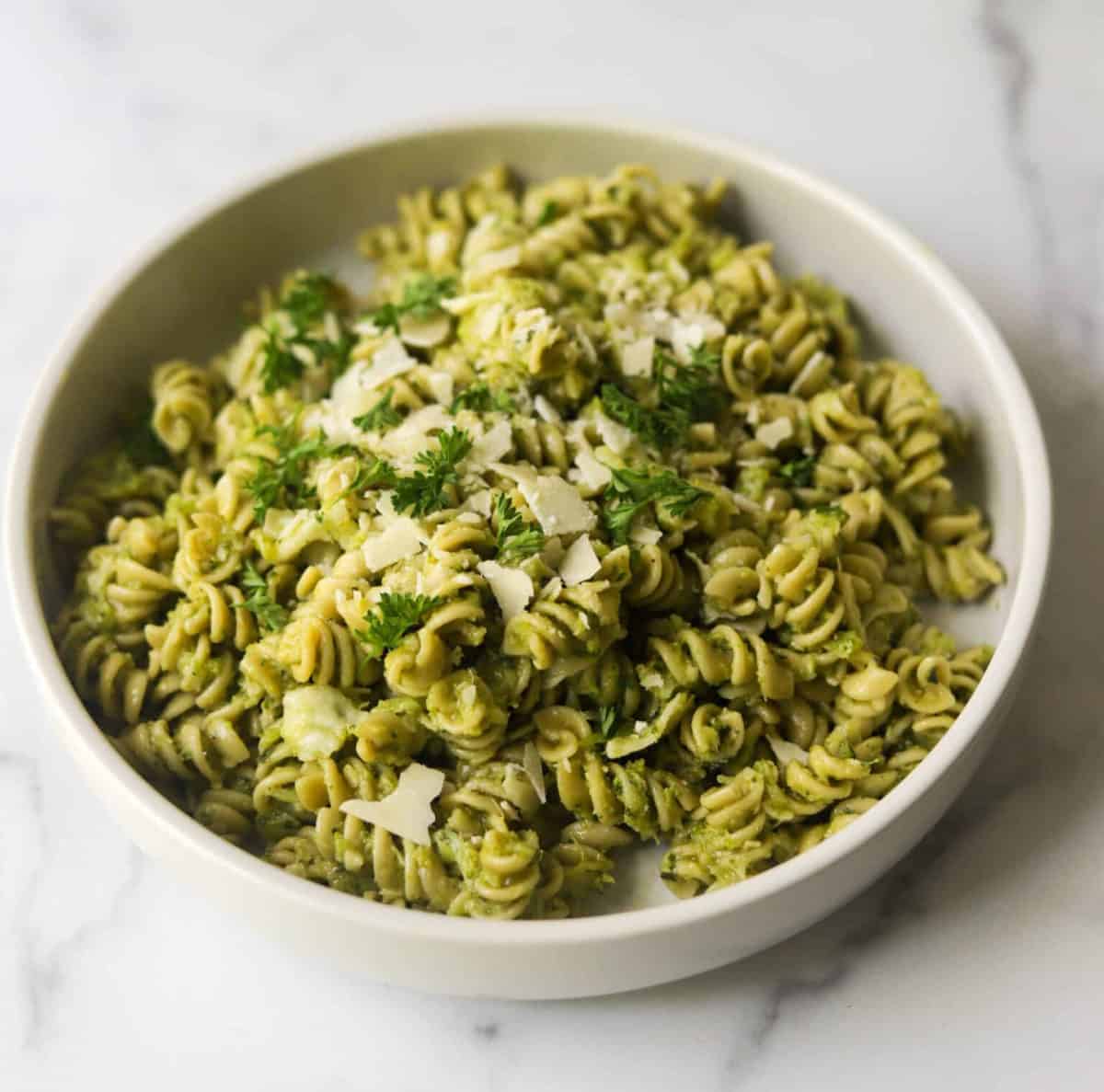
Broccoli Pesto Pasta Salad | The Healthy Epicurean
From The Healthy Epicurean
This pasta pesto salad includes both broccoli and basil in the pesto. The recipe provides a number of substitutions, and if you don’t have quite enough broccoli, slip in a few blanched kale or collard leaves and increase the basil.
.
.
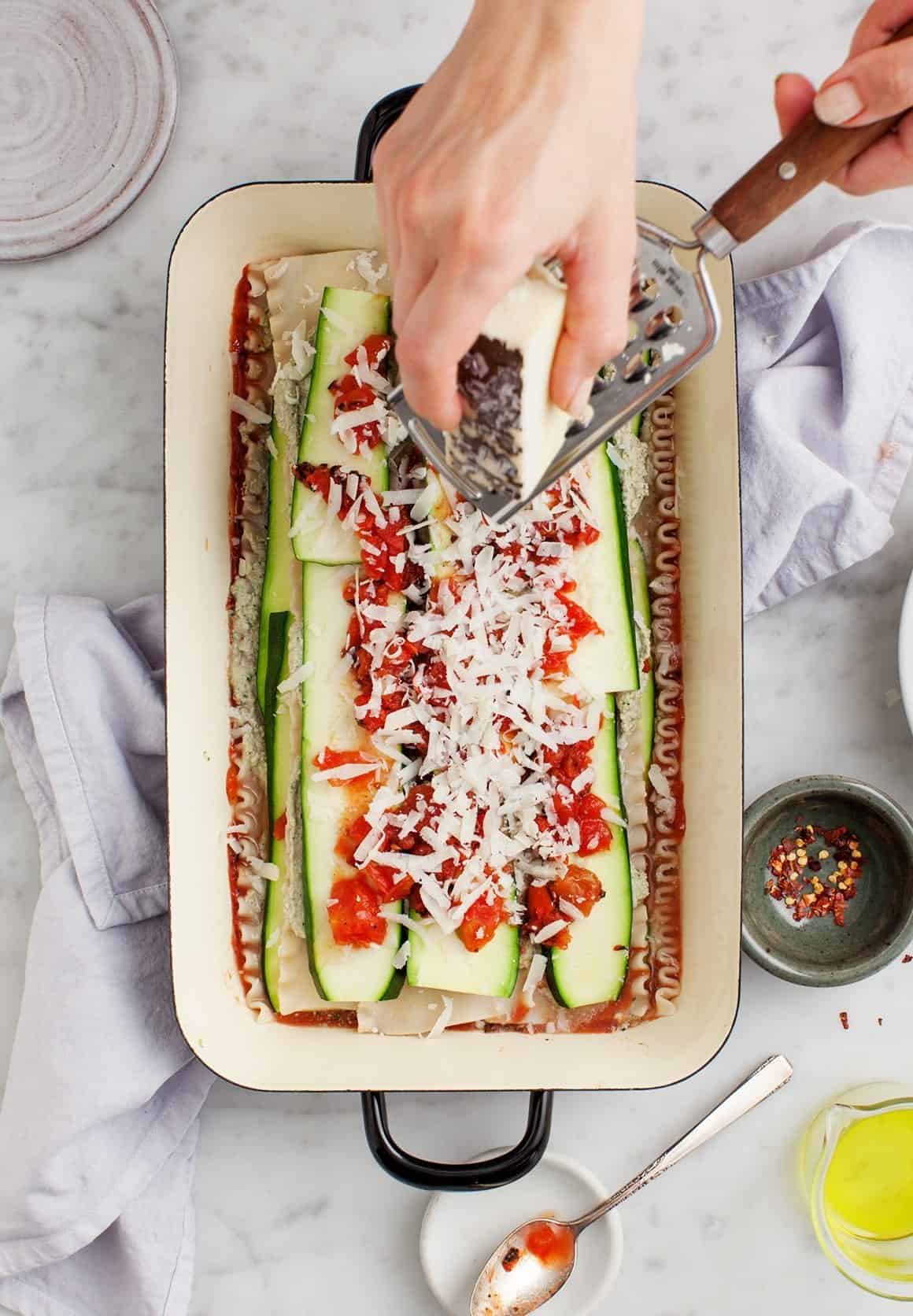
Zucchini Lasagna Recipe | Love and Lemons
From Love and Lemons
This recipe uses zucchini two ways: in the tofu filling and as planks replacing some of the noodle. You could sub about 8 ounces ricotta cheese and an egg for the tofu and walnuts in the filling, and the dish would still be lower carb and lower fat then a typical lasagna.
.
.
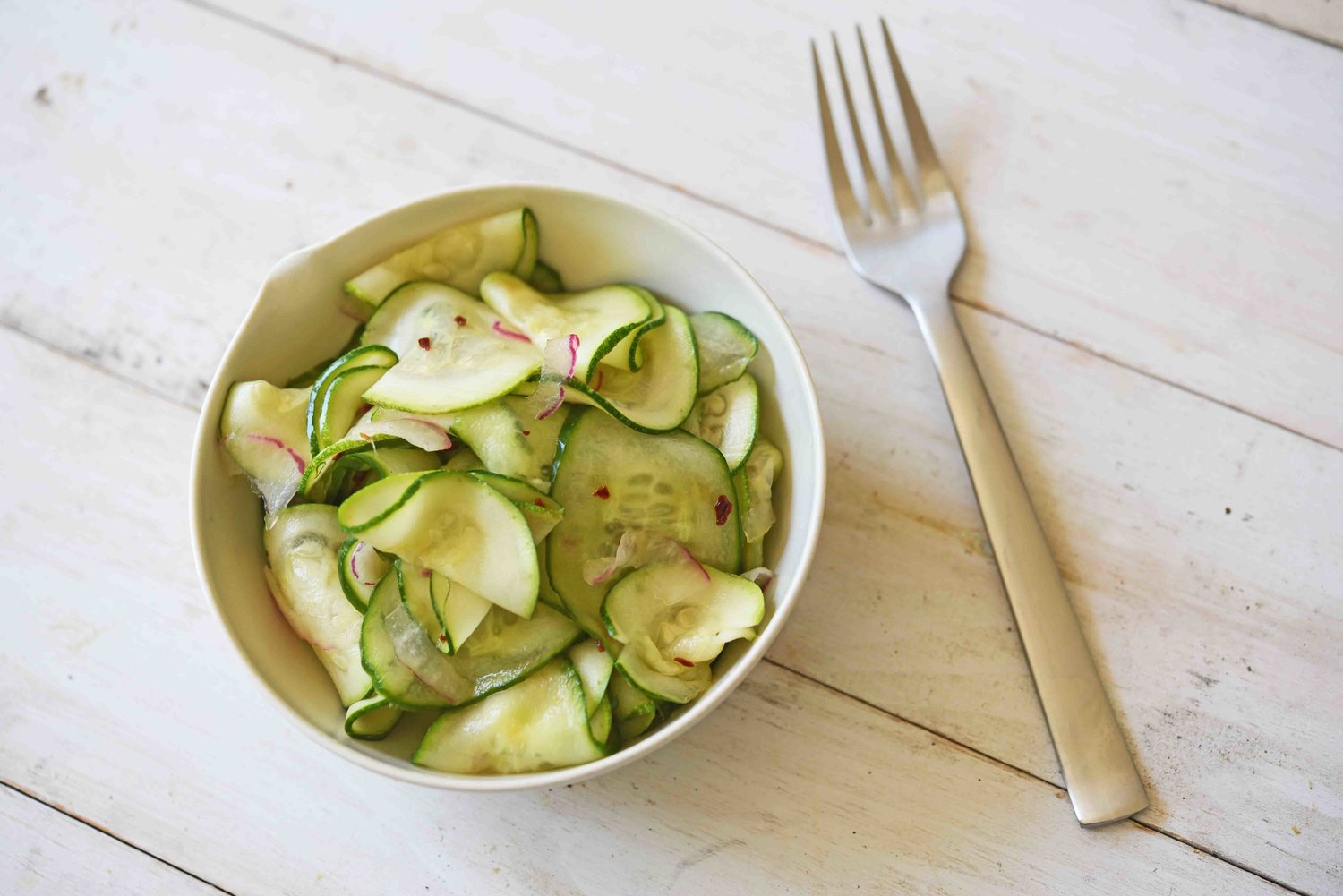
Cucumber Zucchini Salad — Nikki Dinki Cooking
From Nikki Dinki Cooking
It looks like the author of this blog has moved their newer content over to Instagram, but regardless, this recipe provides a great idea for using cucumbers and zucchini for this time of the summer when we have a lot of both – treat them the same and make a refreshing marinated salad. Of course you could make this salad with all cucumber or all zucchini! The Walla Walla onion in the box can be subbed in place of red onion. Beth says the Walla Wallas are unusually strong, and if they seem so to you, I recommend soaking the slices in cold water for a few minutes and draining before proceeding with the recipe. And for another way to use our cucumber bounty, see this July 2021 newsletter for small batch refrigerator pickle relish.
.
.
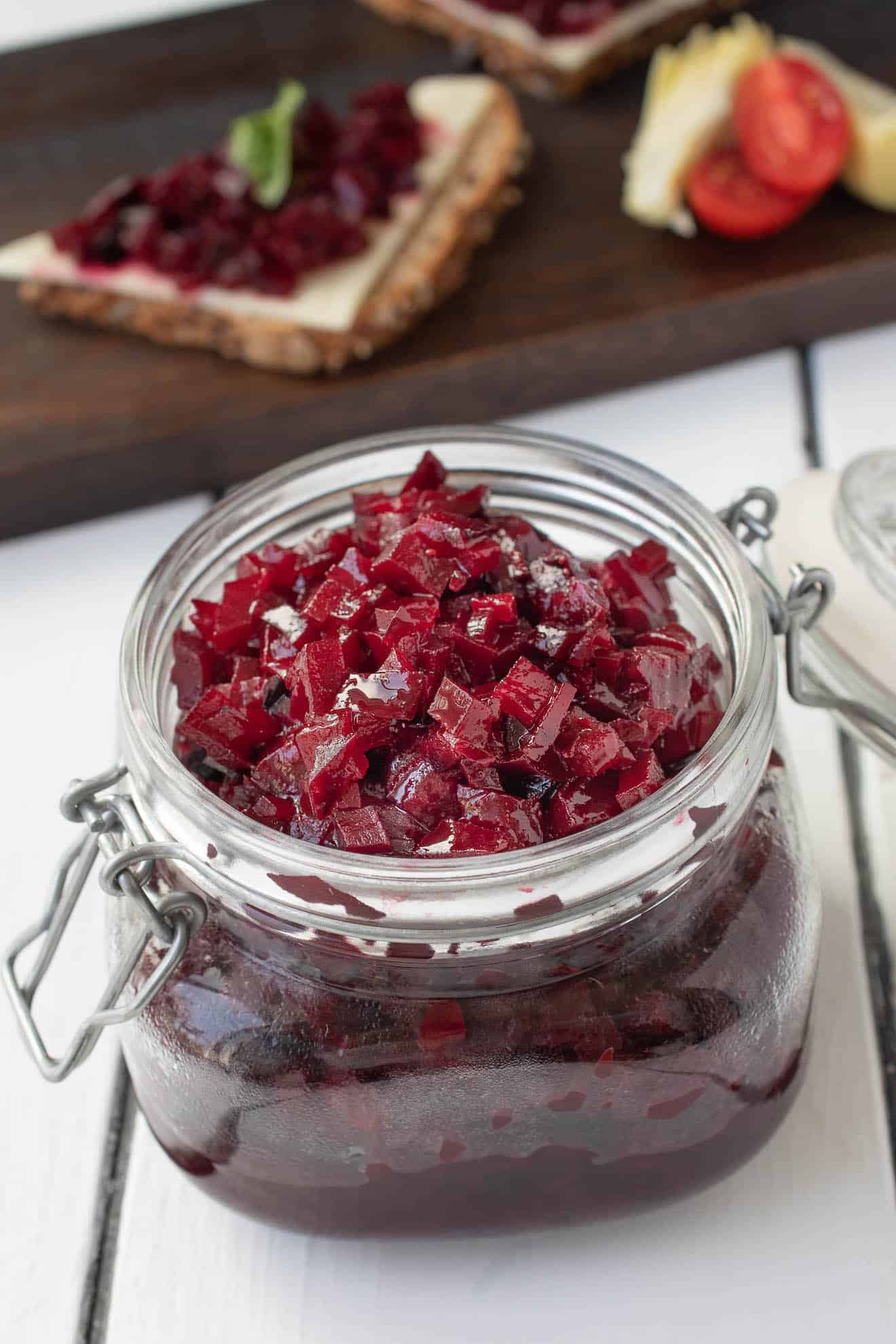
Beet Relish | Culinary Ginger
photo by Janette
From Culinary Ginger
This blog’s title Culinary Ginger refers to the color of the author’s hair. They’re a redhead, called a ginger in the UK. Beet or beetroot relish also has UK origins, and the recipe provides suggestions for serving it – I think I’d go for on a cheese sandwich. It’s a refrigerator pickle, but there are instructions for canning the relish for longer storage as well. This author suggests another method of roasting the beets: peel first and wrap them in foil before roasting.
.
.
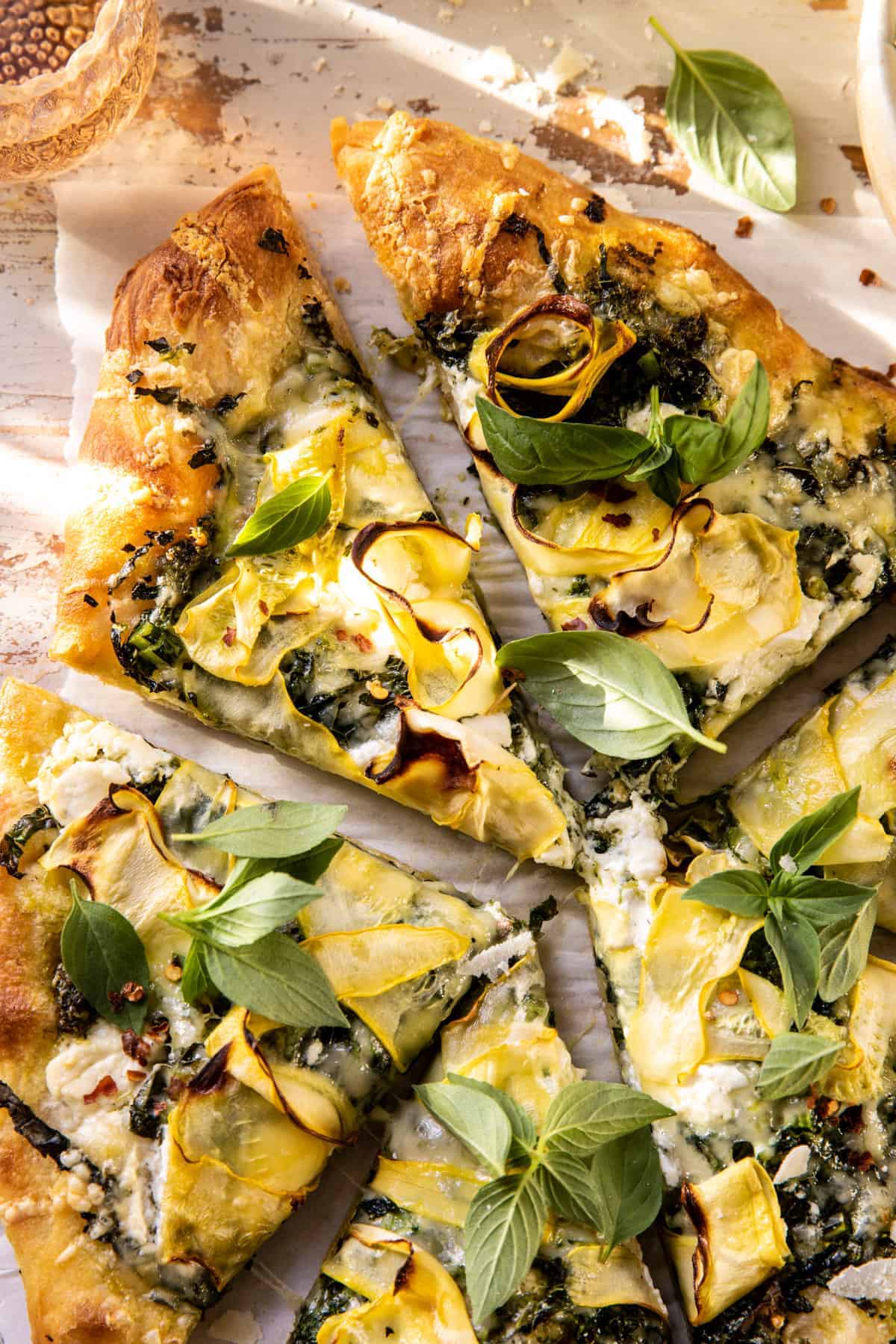
photo by Tieghan
Garden Greens Goddess Pizza | Half Baked Harvest
From Half Baked Harvest
You can use kale or collards as the greens in this no-tomato-sauce pizza from Half Baked Harvest. The pesto recipe uses pistachios, and you could easily sub any other type of nuts, and either increase the basil in place of the dill or mint, or use a few leaves of your greens. The recipe also suggest homemade or store bought pizza dough; here’s a link to 101 Cookbooks overnight yeasted pizza dough (with lenghty discussion!), and also a quick dough from Jamie Oliver. Jamie’s Cheat’s pizza dough calls for self-rising flour and here’s how to make that.
Week #8; Happy July 4th and Berry Wrap-up
- On: July 05, 2023
 0
0
Little Evansville puts on a great July 4 celebration. This year, it was a five day party. They’ve got the best parade in the area, fishing and arm wrestling tournaments, music in the beer tent every night, including the middle-school art teacher’s popular band. Lunker lob, ice cream social, euchre tournament, 5K and 10K runs, grilled brats and burgers from the FFA kids. Chicken BBQ, a pie sale, duck derby, baseball and a great fireworks show. Come check us out some year!
Berry Wrap-Up
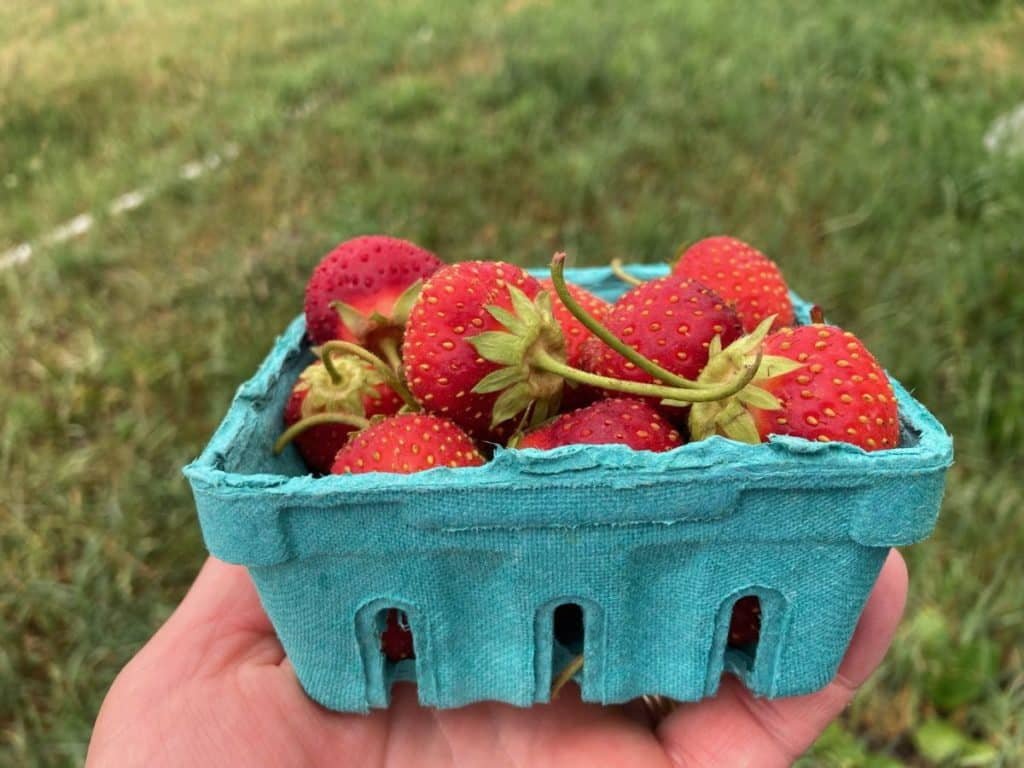
We’ve got cute 3/4 pint containers for you this week. The berries are ripe, ripe, ripe so eat them promptly. We are pretty excited to deliver berries for a fourth week. Three weeks is a typical season.

Even more unusual is the berry size. Most, years they are quite small by this point in the season. This year, they have stayed large, even this week. We lost early berries to an unexpected frost in late May but our main variety ‘Jewel’ seems able to compensate by plumping up the later ones.

Larger berries mean faster harvests. This is Katie, harvesting this week.

But here are Karen and Mary Ann harvesting last week on one of the worst air quality days. Many of you asked me how we handled the smoke. As you see, many of us wore N95s outside. That was not fun. We closed up the barn with air filters running, and rotated people between indoor and outdoor jobs. Finally, we just sent everyone home early on the worst days.
The second strawberry u-pick went smoothly; smaller and quieter than the first one. We hope that everyone who wanted to pick berries was able to get a reservation. We have to limit the picking reservations to how many berries have ripened. With luck, we will have abundant berries next year. We plan to have two fields ready to harvest in 2024 (instead of one field) so there should be berries for all. You might even be able to bring your friends.
Thanks for reading.
Beth
Veggie List & Veggie Notes
Week #8, July 6/7, 2023
– Weekly shares
– BiWeekly/ green
– Sampler/ D group
Strawberries, 3/4 pint
Broccoli, 1.5 – 2 lb
Snap peas, and
Snow peas, 3/4 lb total
(Both types of peas are in one bag.)
Swiss chard, 1 bunch
Cucumbers, 1 or 2
Zucchini &/or Zephyr squash, ~3 lb
Scallions, 1 bunch
Basil, 1 husky sprig
Next week’s box will probably contain broccoli, greens, cucumbers, zucchini, Walla Walla onions, basil and more.
Strawberries – These are the final berries of the season! Eat immediately or refrigerate.
Broccoli – The broccoli plants did great this spring despite the bewildering weather. It’s one of our nicest spring broccoli harvests in a few years.
Storage: Cover and refrigerate.
Snap and snow peas, together in one bag – As usual, both types are in one bag. We really like this new snap pea variety, SS141. How’s that for a romantic name? Long pods, sturdy plants and good flavor despite the heat. Hot weather is always a challenge for peas. Enjoy this batch. Both snap and snow peas have strings this week.
Storage: Refrigerate.
Swiss chard – Now that spinach is done for the year, it’s time to re-purpose your spinach recipes to Swiss chard. They are closely related. Chard has a thicker leaf and requires a few minutes more cooking to achieve tenderness, unlike spinach which wilts quickly.
Storage: Cover and refrigerate.
Scallions – These are the last scallions until fall. It’s been a good run. We will have sweet Walla Walla onions ready next week.
Basil (branched, leafy stalk) – Everyone gets a husky stalk, the first cutting of the season.
Storage: Basil deteriorates if stored in the refrigerator. It is best stored at room temperature with the cut ends in water, for example in a jar or vase. Treat it like a flower. Give the stem a fresh trim and change the water every day or two. You will receive a large branched stalk that I encourage you to cut down to the smaller individual stems. The smaller stems take up water better and stay fresh longer. See photo.
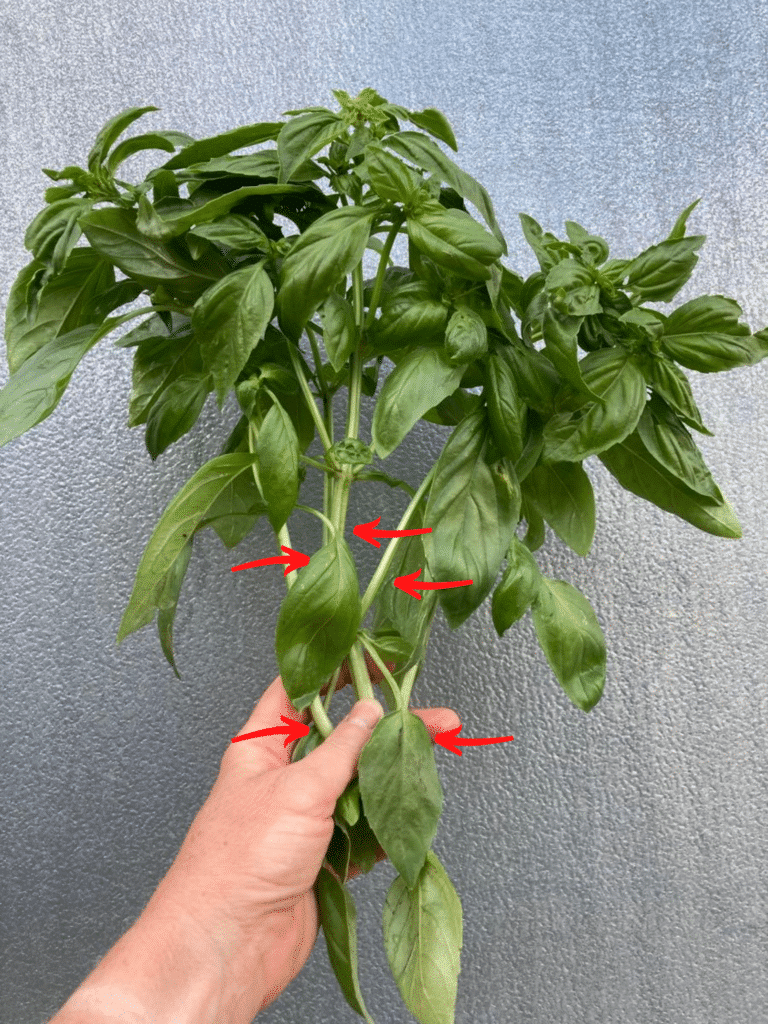
Large basil stalk. The arrows show where to cut into smaller stems.
RECIPES by DEB
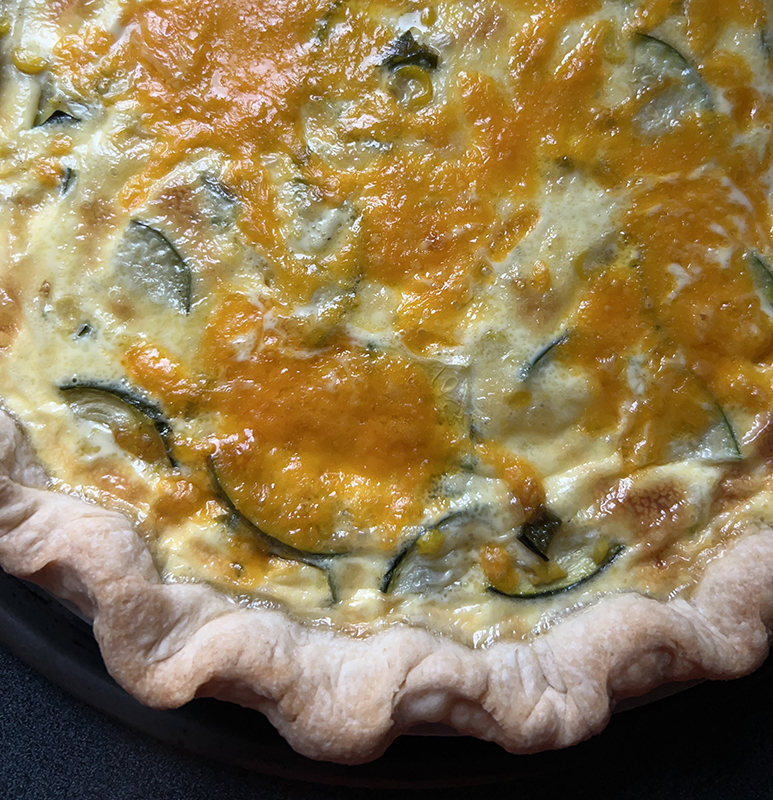
Photo by DebsLunch
Calabacitas Quiche
Calabacitas is a vegetable dish served in New Mexico and Texas and other parts of the US Southwest that usually consists of zucchini or summer squash, corn, onion, often cheese, and especially in New Mexico, roasted green chiles or poblanos. Calabacitas can also be used as a quesadilla filling – and in quiche! I’m including it this week because you can make it with zucchini and/or yellow squash, and frozen or canned corn and canned chiles until we get fresh corn and chiles in our boxes.
Serves: 6-8
Takes: about 40 mins. active time, plus an hour to chill the crust.
Crust ingredients:
1 1/2 cups flour
nice pinch of kosher salt
2 teaspoons sugar
6 tablespoons unsalted butter
3 tablespoons vegetable shortening
Filling ingredients:
2 tablespoons butter
One bunch of scallions, sliced, including white and green OR 3/4 cup chopped onion
1 large zucchini or 2 small, or a mix of zucchini and yellow squash, quartered longwise, and sliced
1 large or 2 small poblano chiles, roasted, skinned, seeded, and chopped OR one 4 oz. can mild green chlies
3/4 – 1 cup corn kernels, fresh cut from 1-2 ears, frozen, canned, or whatever you’ve got
salt & fresh ground black pepper to taste
1 cup grated cheddar cheese
3 eggs
1 1/2 cups half & half
- Make the crust: Measure the flour into a bowl and add the sugar and salt. Cut the shortening and butter into cubes over the salt and flour. Cut the fats into the flour with your fingers, a pastry blender, or paddle attachment of your stand mixer, until the mixture resembles coarse meal. Drizzle in about 1/3 cup cold water, while stirring, until you’ve got a bunch of small clumps of dough. Dump out onto a floured surface, knead lightly to bring it together, and then flatten the dough into a disk and wrap in wax paper or plastic wrap and chill for about an hour.
- Make the filling: melt the butter in a large skillet, and add the scallions or onion. Sauté over medium heat until the onion looks translucent, then add the zucchini. Cook until the zucchini is starting to soften, and then add the poblanos or chiles, corn, and salt & pepper. Cook until the squash is just tender, and then set aside to cool.
- Assemble the quiche: Heat the oven to 375° with a rack near the bottom and another near the middle of your oven. Roll out the crust and fit it into a 9-10 inch pie dish. Put 2/3 of a cup of the grated cheese in the bottom, then add the zucchini filling. You’ll find some images of rolling out crust and fitting it into a pie dish here.
- Beat the eggs, add the half & half, and pour this custard into the crust.
- Place the quiche on the bottom rack and bake for 10 minutes. Sprinkle the remaining 1/3 cup of cheese over the top of the quiche, and bake for another 10 minutes. Move the quiche up to the middle rack and continue baking until it is puffed and golden brown in spots, about 20 minutes more. Cool for 15 minutes before serving either hot or warm.
Spaghetti with Swiss Chard and Garlic Chips | smitten kitchen
From smitten kitchen
Deb Perelman adapted this recipe for Swiss chard pasta from the dearly departed Gourmet magazine; the orginal included currents that she omitted, so feel free to omit them yourself. The combination of chard and garlic chips is maybe a bit autumnal, but you can make it more summer-y by subbing in our scallions for the onion, and a garnish of sliced basil leaves wouldn’t be amiss here.
.
.
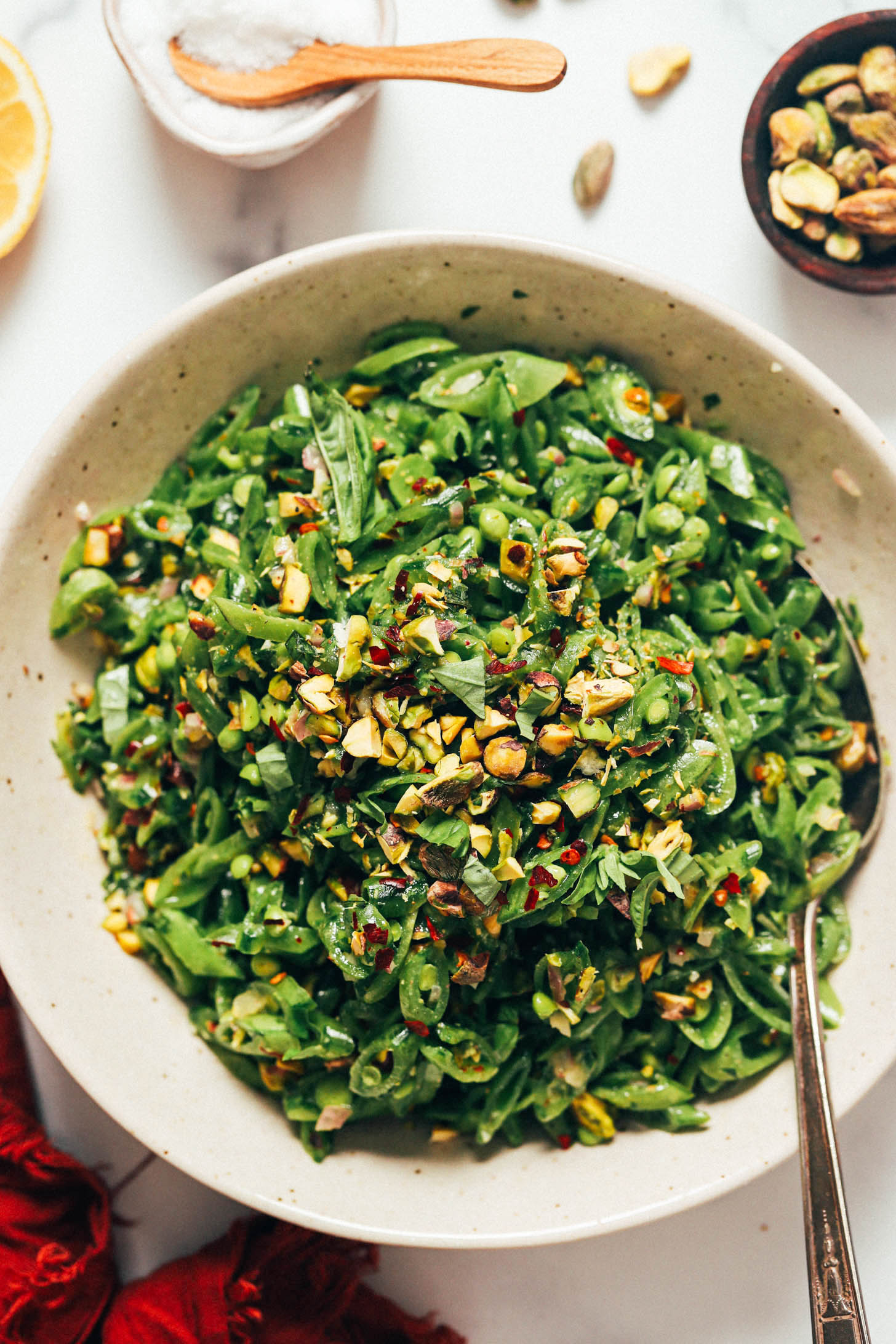
Snap Pea Salad with Zesty Lemon Vinaigrette | Minimalist Baker
From Minimalist Baker
This quick pea salad from Minimalist Baker can be made with the combo of snow and snap peas in this week’s box – all you need to do is rinse and string both types of peas and cut them all on the diagonal, about the same size. The recipe called for four cups of sliced peas for 4 generous servings of salad, and the 3/4 pound of peas in the box will not yield that much sliced up. I suggest either adding chopped broccoli to get to four cups, or you could also halve the recipe.
.
.
Caesar Roasted Broccoli | The Kitchn
From The Kitchn
This version of roasted broccoli is somewhere between a salad and a side dish, but is right on delicious. As the recipe points out, if you are nervous about using raw egg yolk to make a classic Caesar dressing, you can sub a tablespoon of mayonnaise. Beth also provided a link to a method for pasteurizing eggs in the microwave in last week’s newsletter. And personally, I do not care for anchovies, and I sub a few shakes of Worcestershire sauce, a teaspoon or so, in place of the anchovies.
.
.
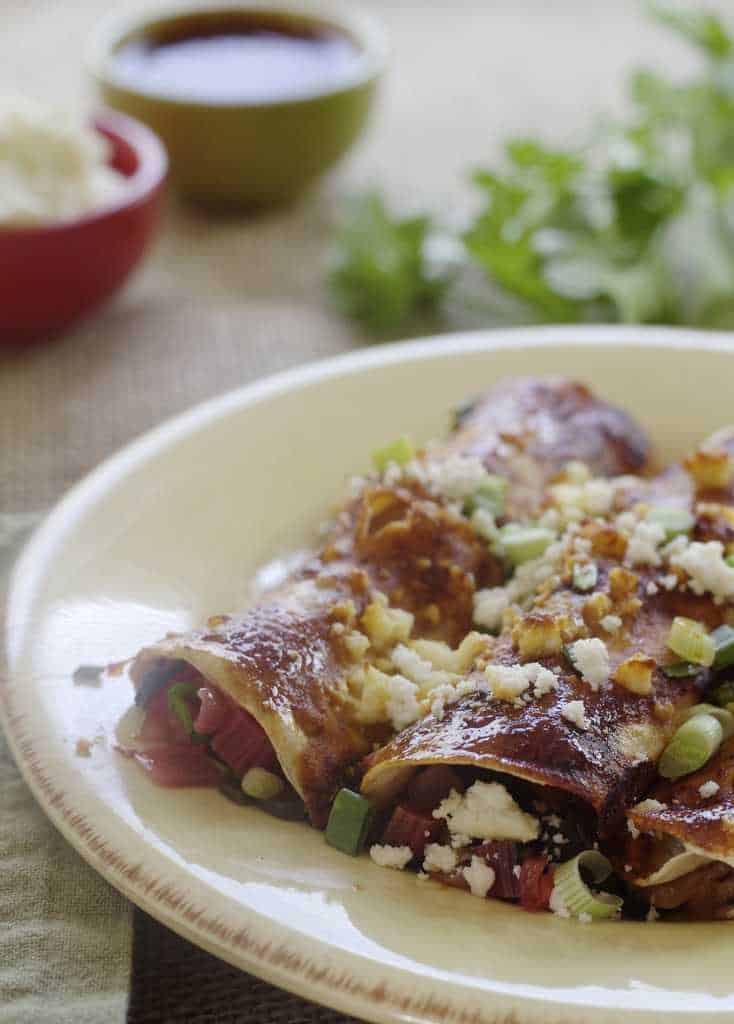
Vegetarian Chard Enchiladas | Letty’s Kitchen
From Letty’s Kitchen
Create this vegetarian main course with the chard and scallions in this week’s box. You can use purchased or homemade enchilada sauce and Letty’s Kitchen provides links to both a recipe that uses soaked and pureed whole dried chiles, and a quick version with chili powder, although I’d suggest using ground red Ancho chile in the quick sauce – you can find it at Penzey’s and Willy Street Co-op.
.
.
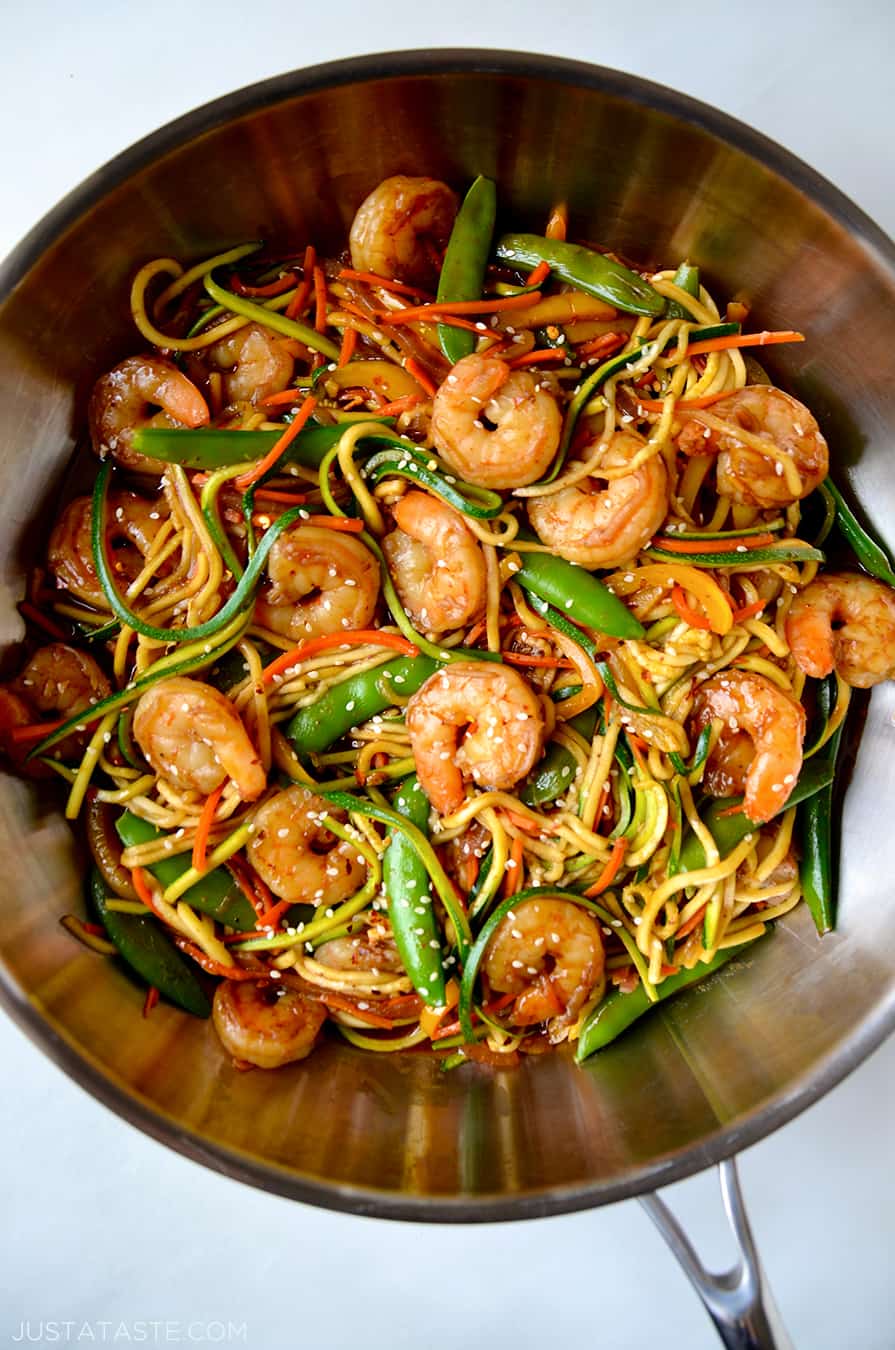
Photo by Kelly Senyei
Zucchini Noodle Stir-Fry with Shrimp | Just a Taste
From Just a Taste
Probably the best part of this recipe is that it gives you several methods for creating the zucchini noodles, zoodles, even if do not own a spiralizer or mandoline. It also provides an easy stir fry sauce made with common pantry ingredients like soy sauce and cornstarch. You can sub in sliced chard leaves and stems and broccoli for the carrots and bell pepper.
.
.
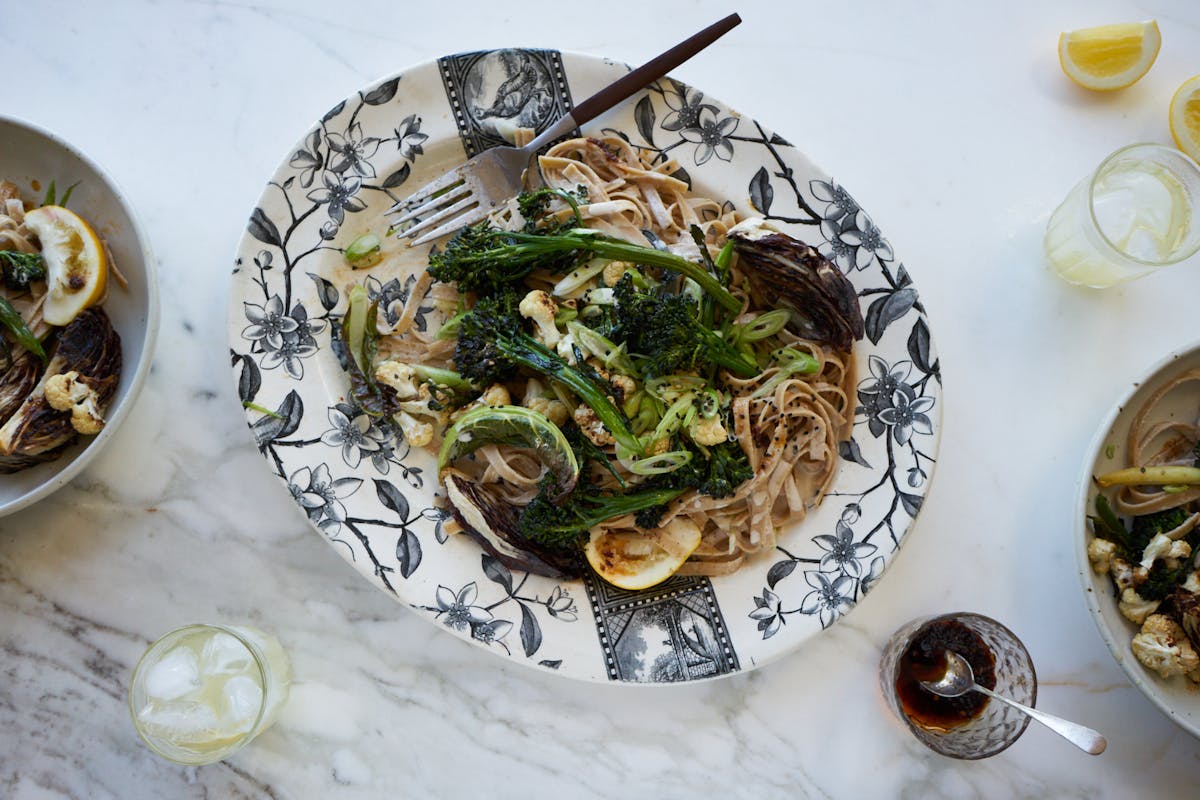 Photo by Heidi Swanson
Photo by Heidi Swanson
Spicy Tahini Noodles with Roasted Vegetables | 101 Cookbooks
From 101 Cookbooks
This recipe is really a formula for sesame noodles with roasted vegetables. The author, Heidi Swanson, invites you to raid your vegetable crisper to come up with about a pound of roast-able vegetables, and that means you can use a combination of the broccoli, zucchini, and summer squash from this week’s box, and you can also throw in a handful or two of the snap and snow peas. And if you don’t happen to have tahini, you could use peanut butter or almond butter in the sauce, although they’d be peanut or almond noddles in that case.

